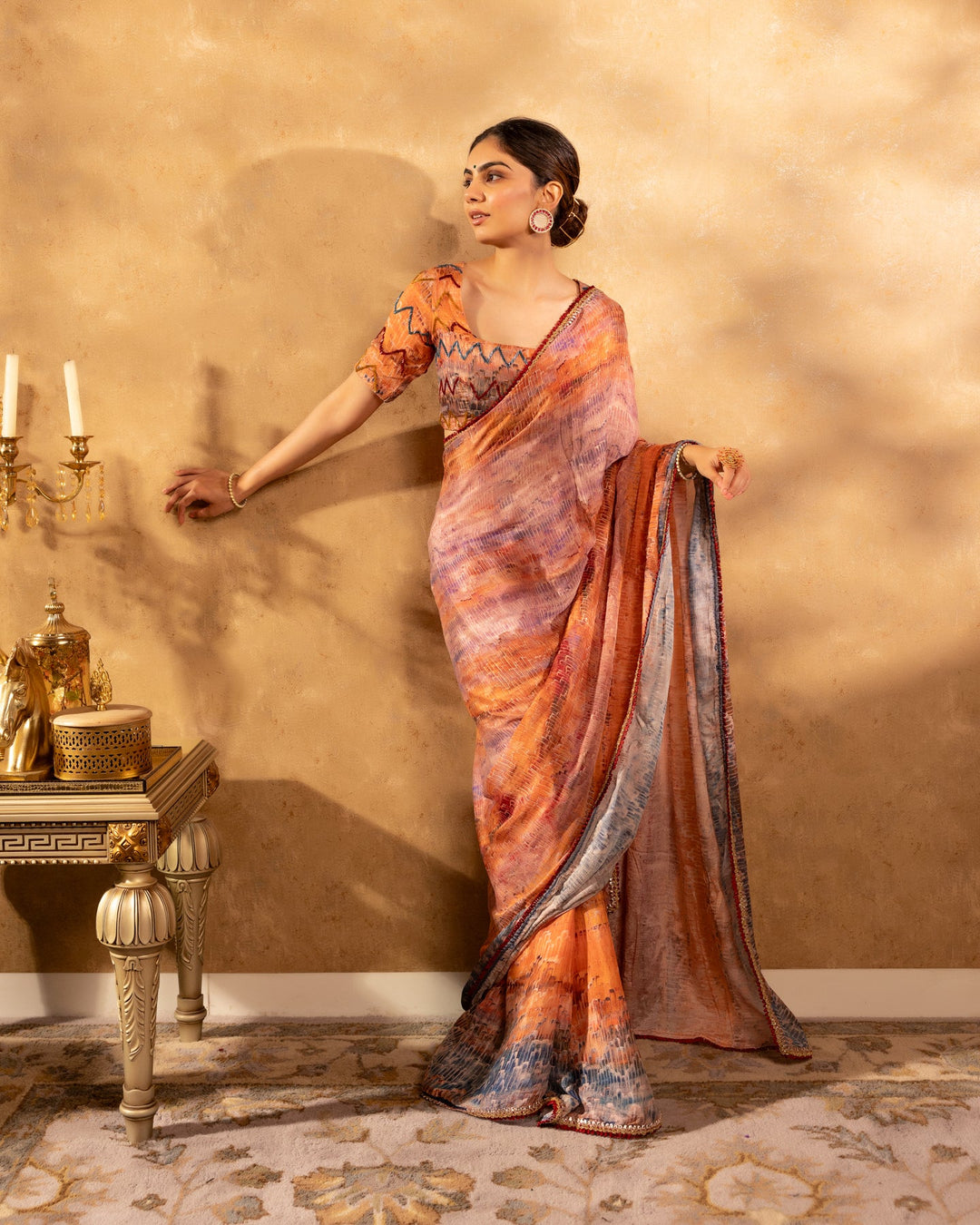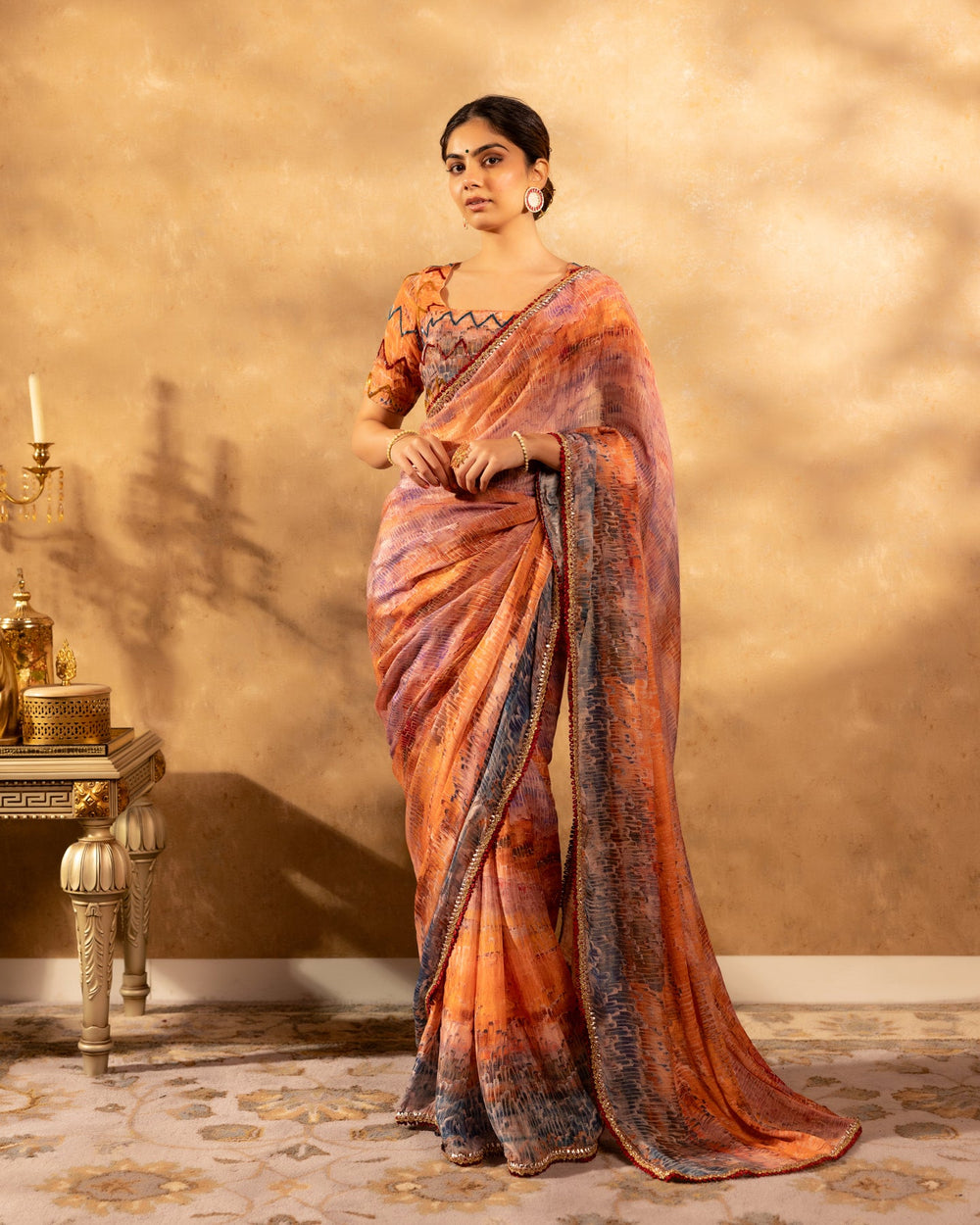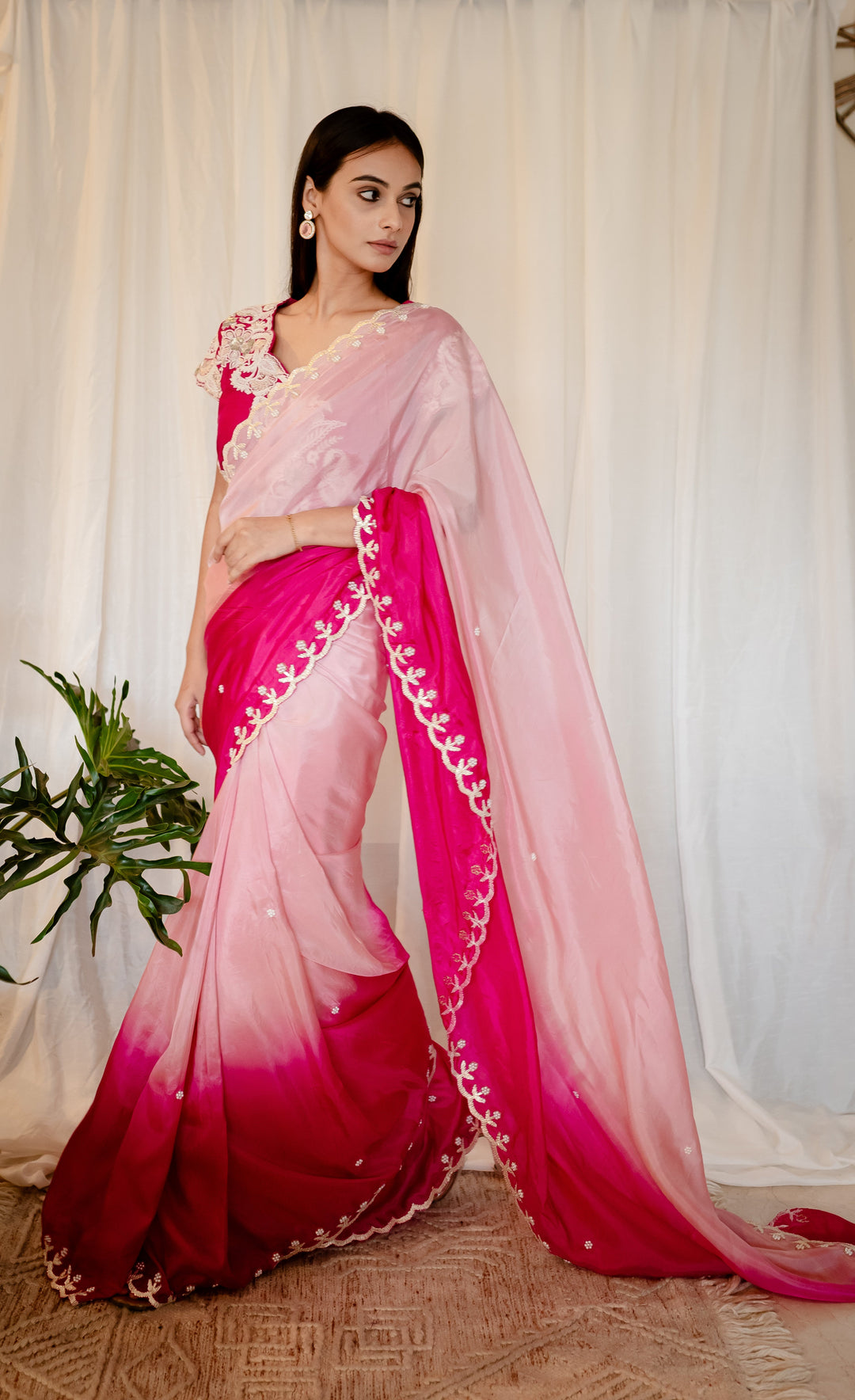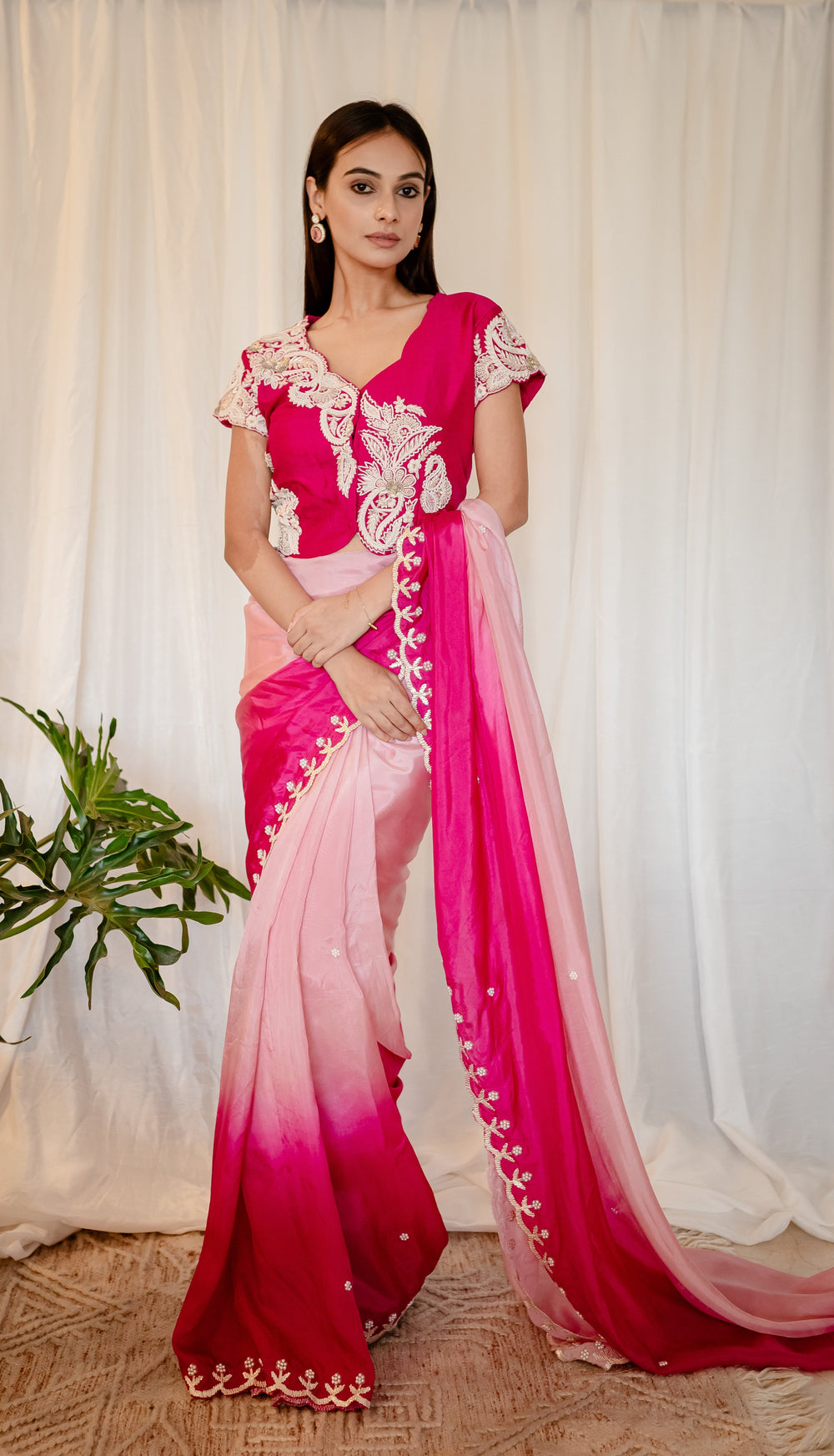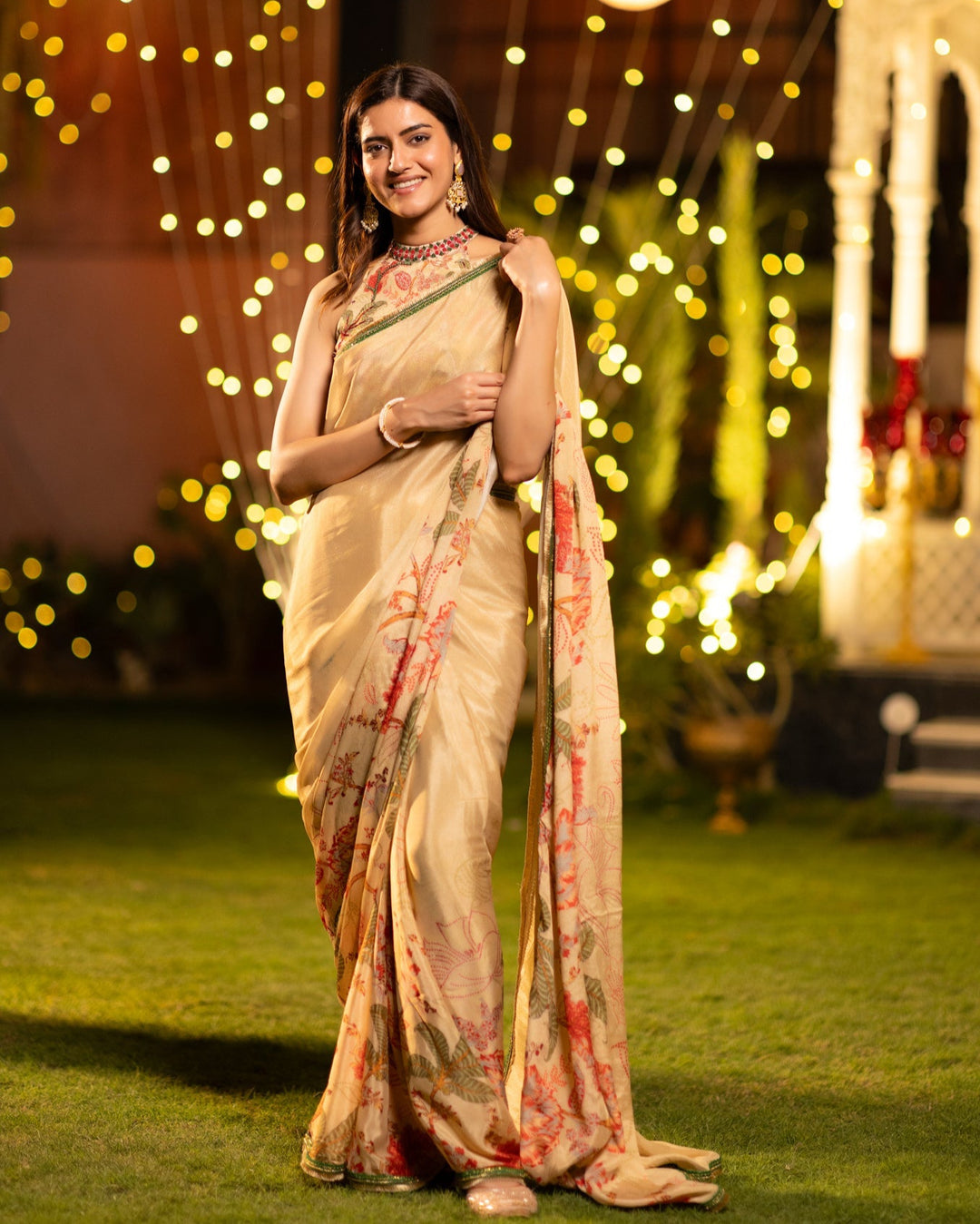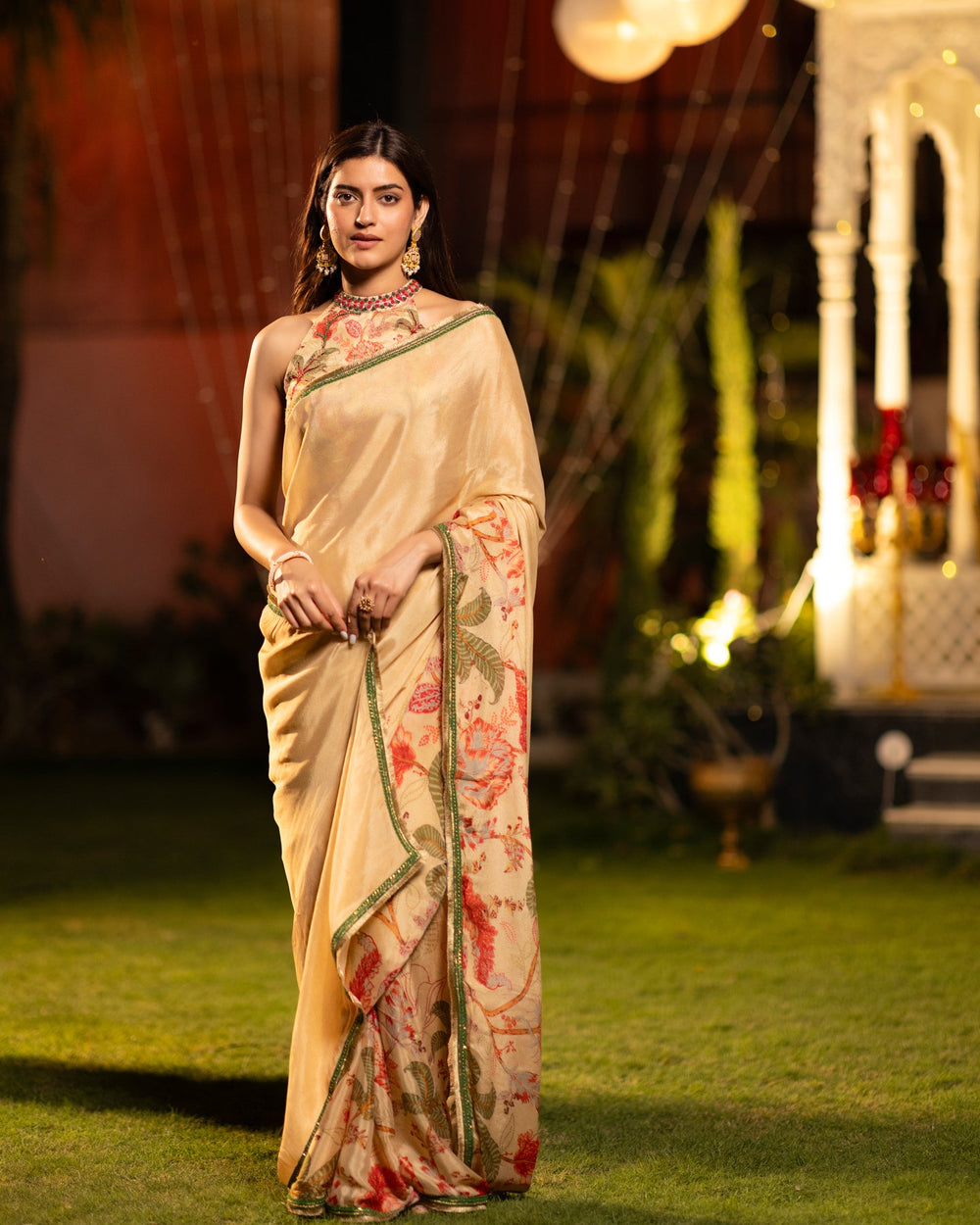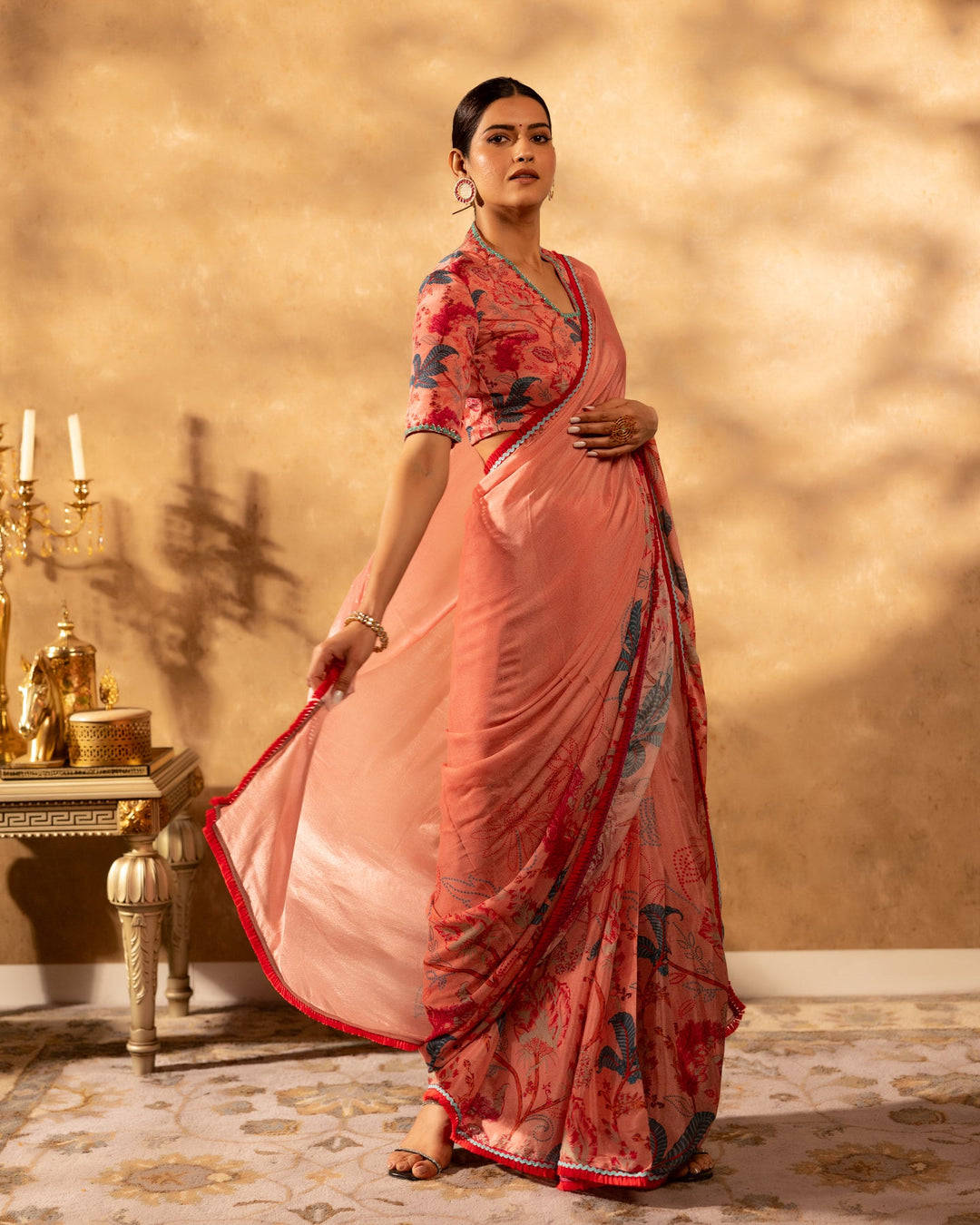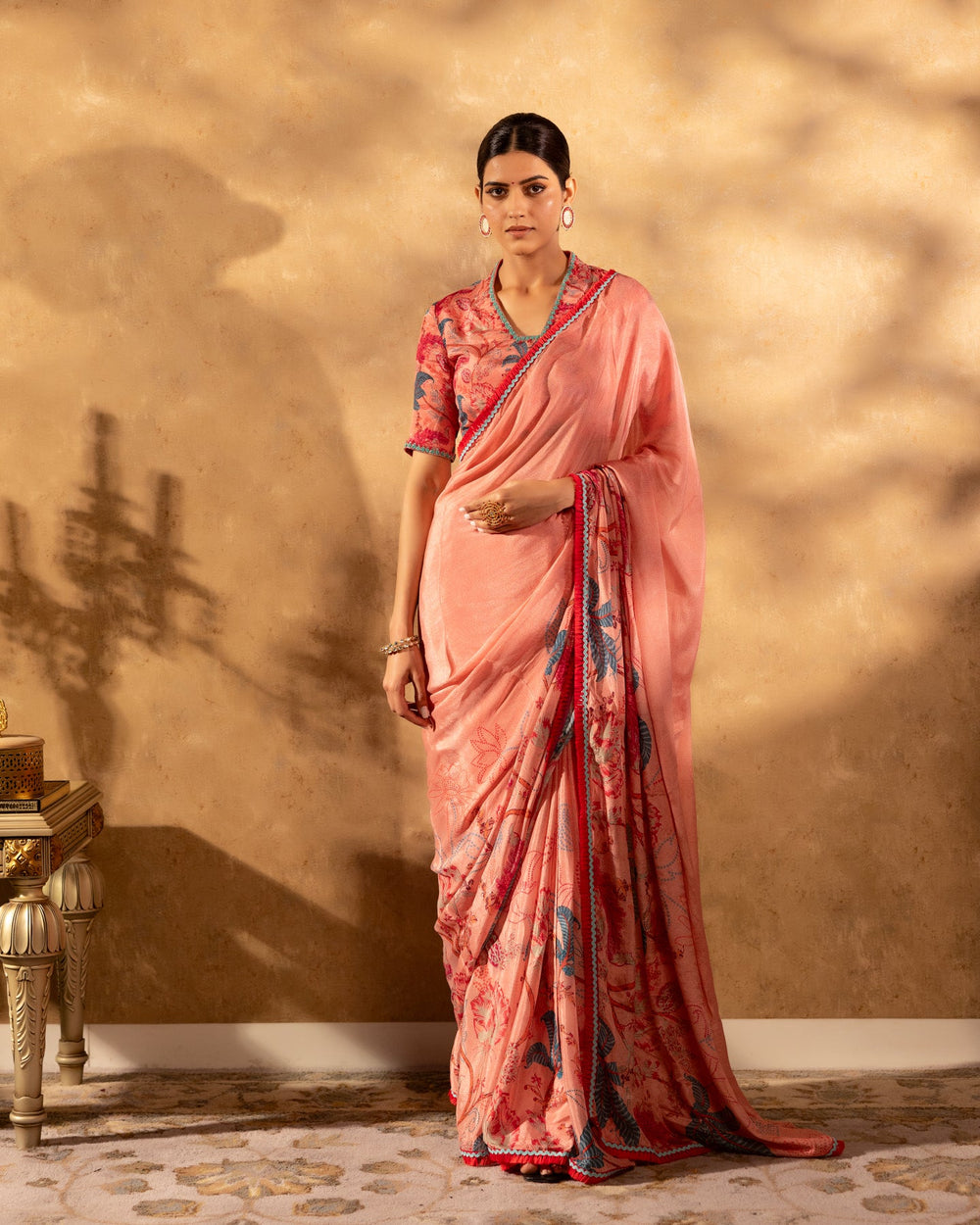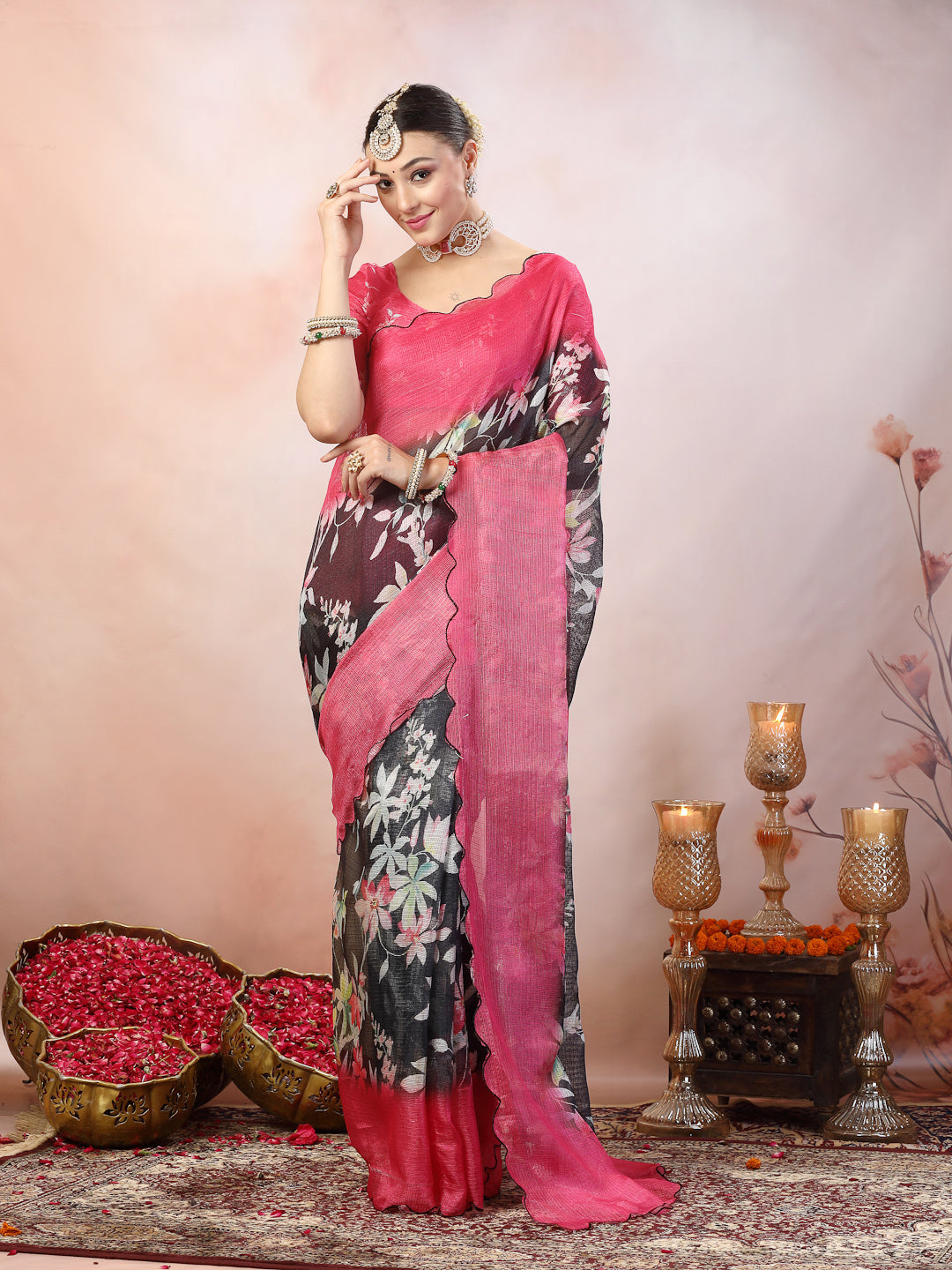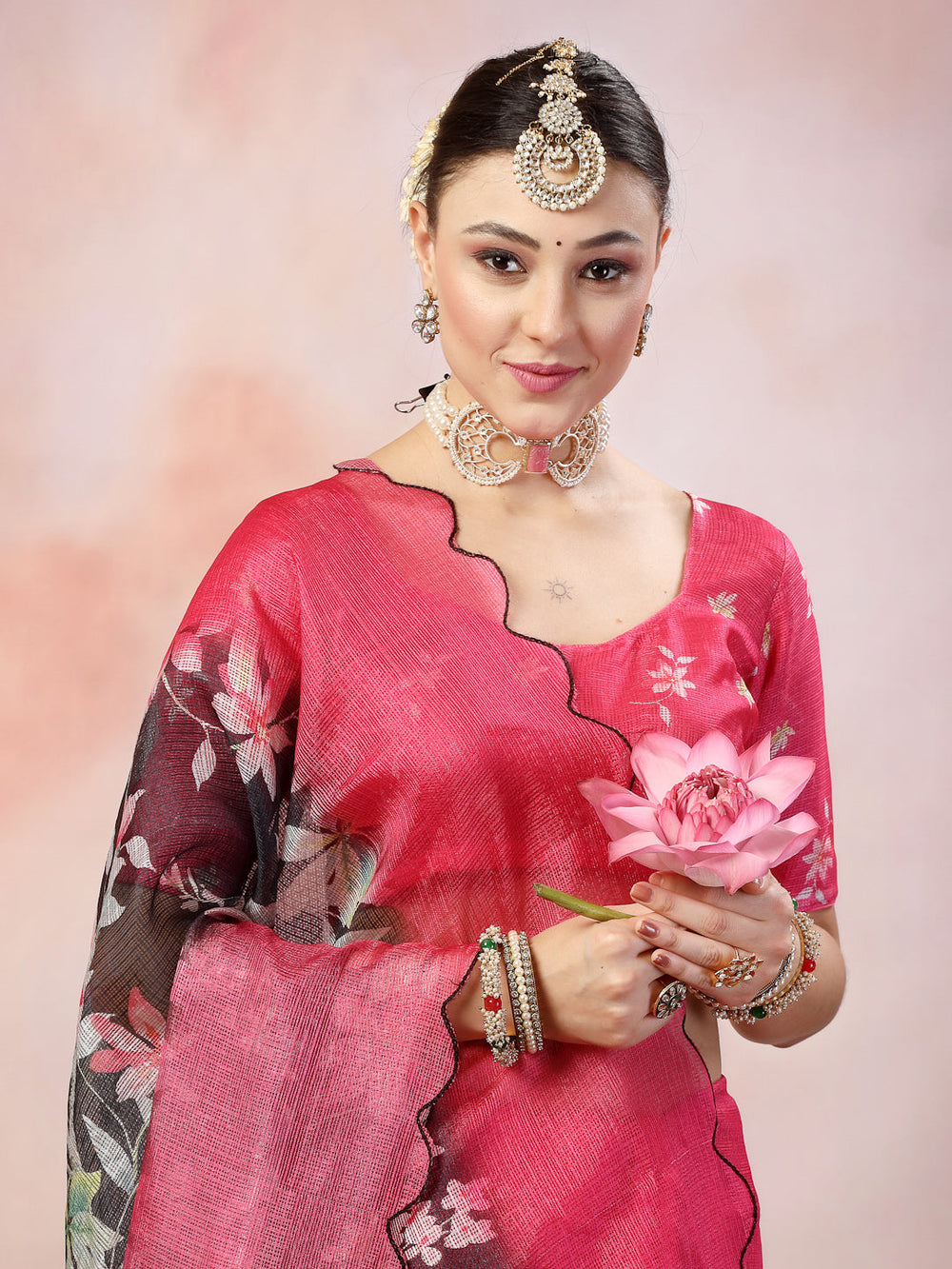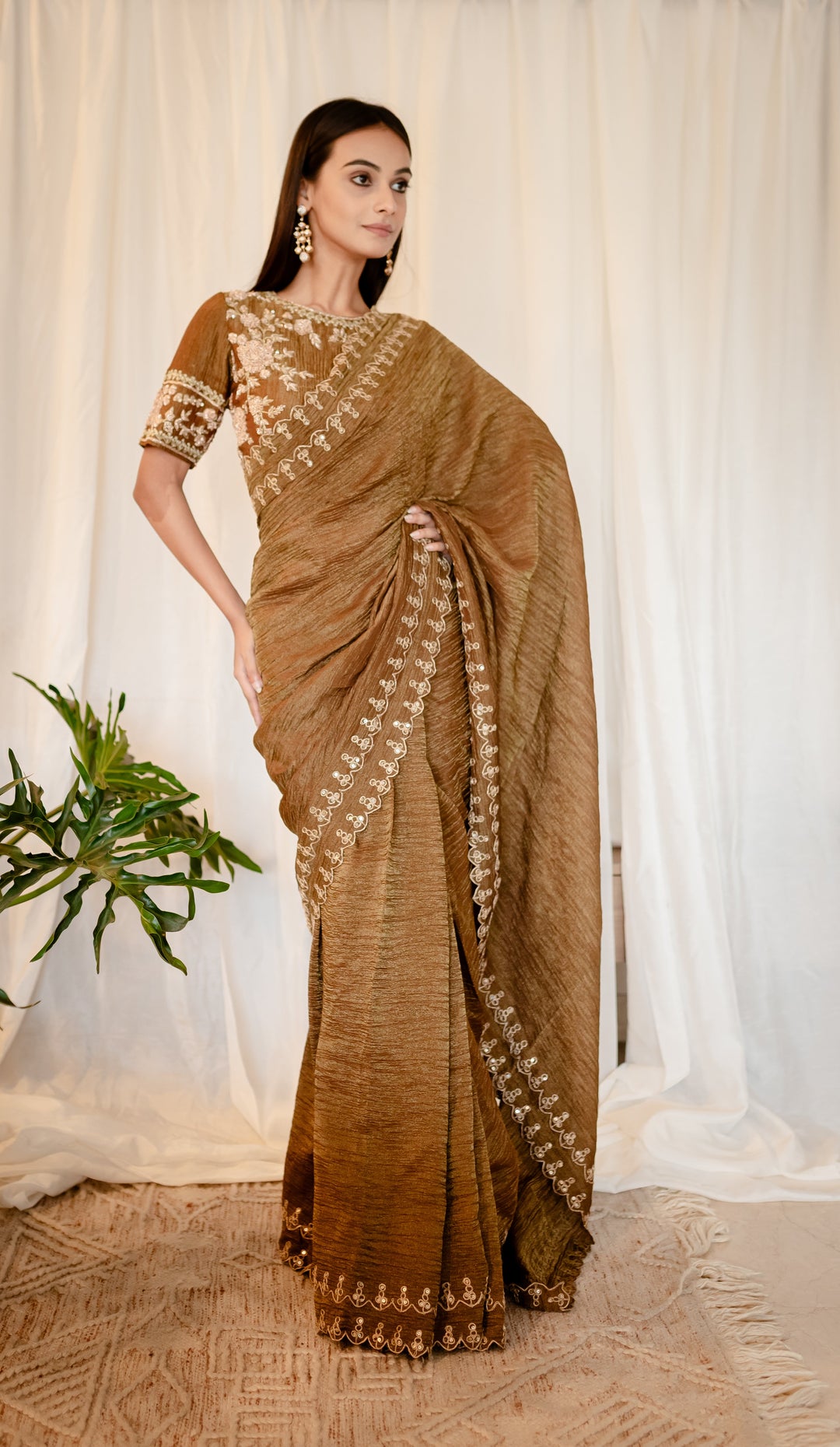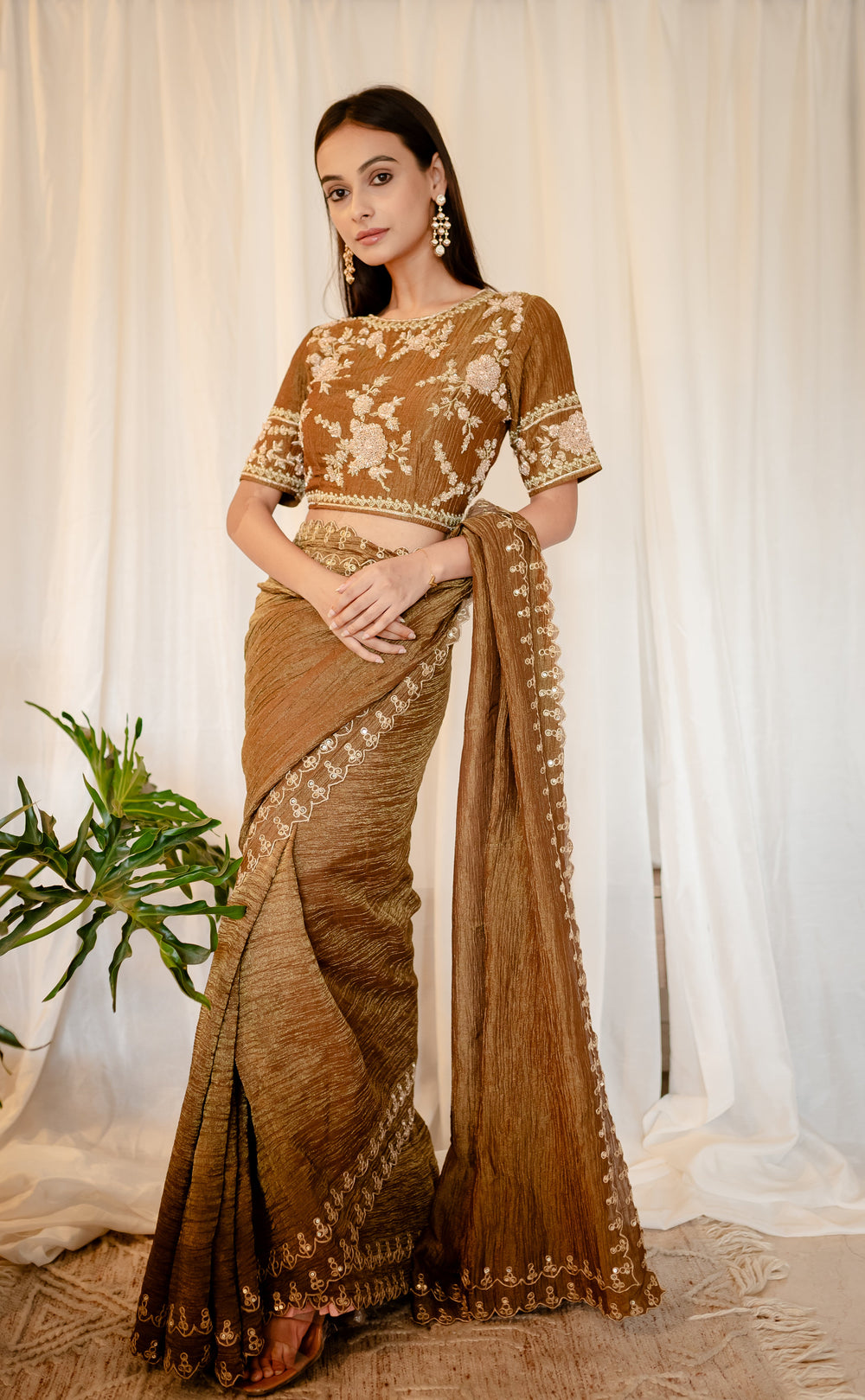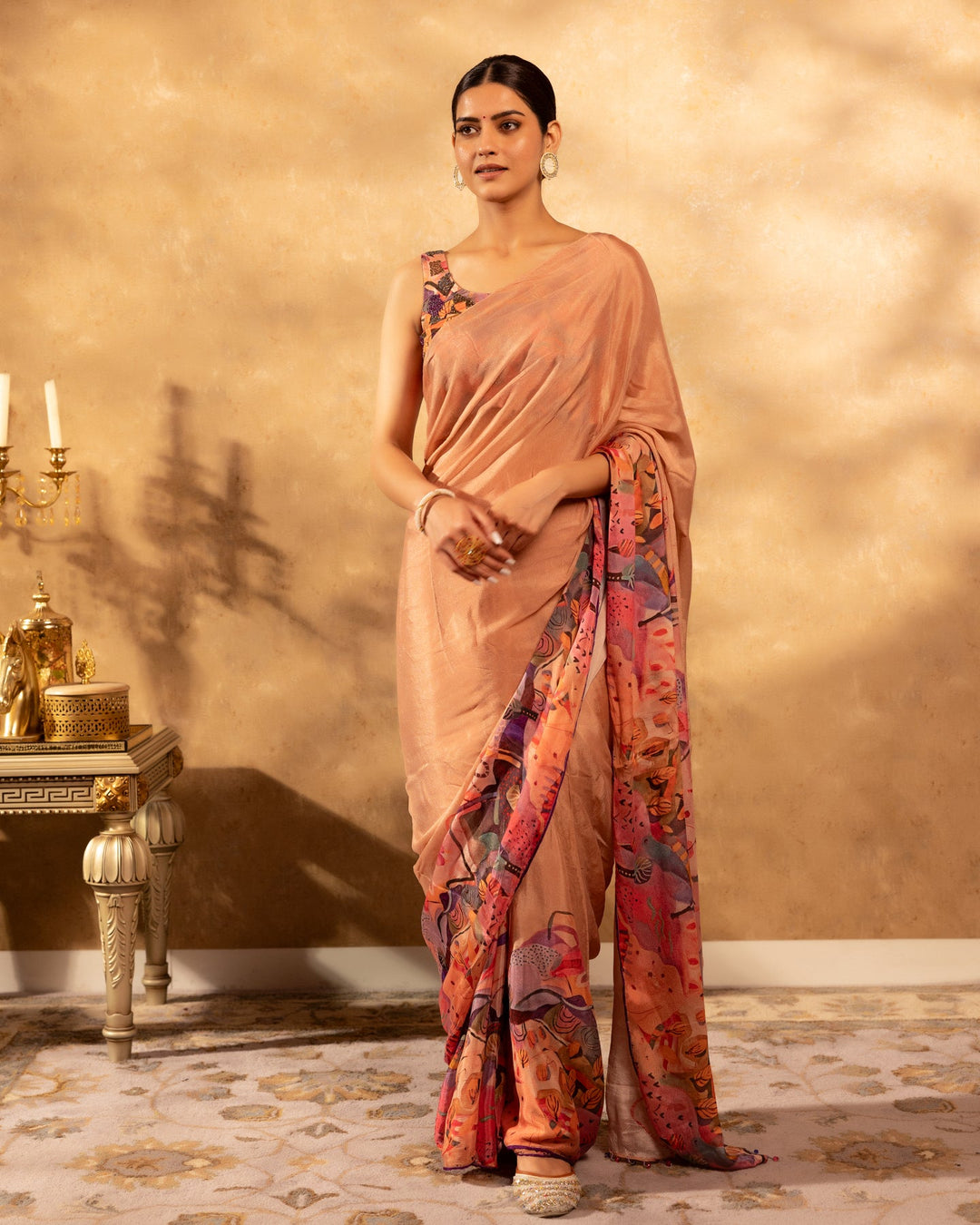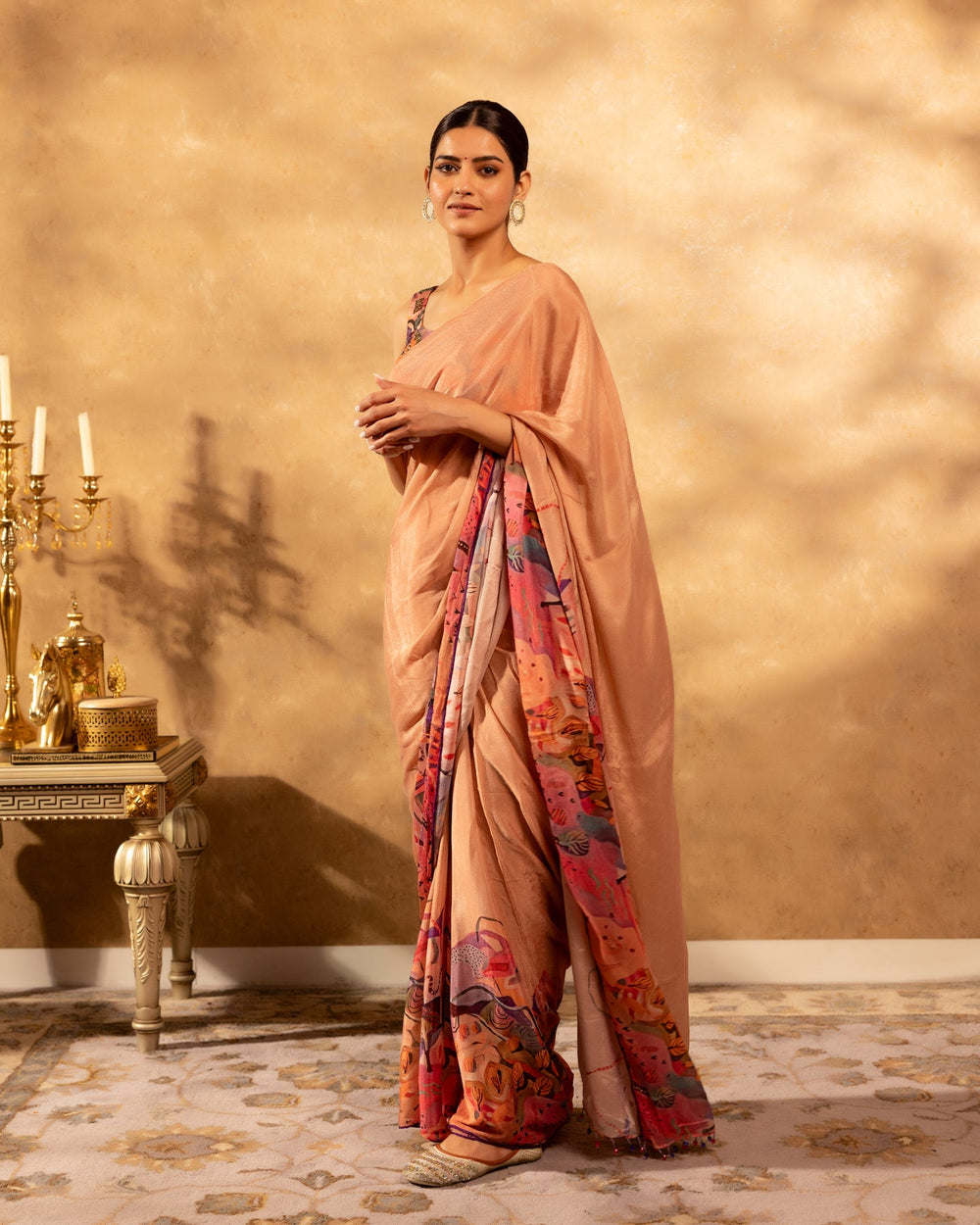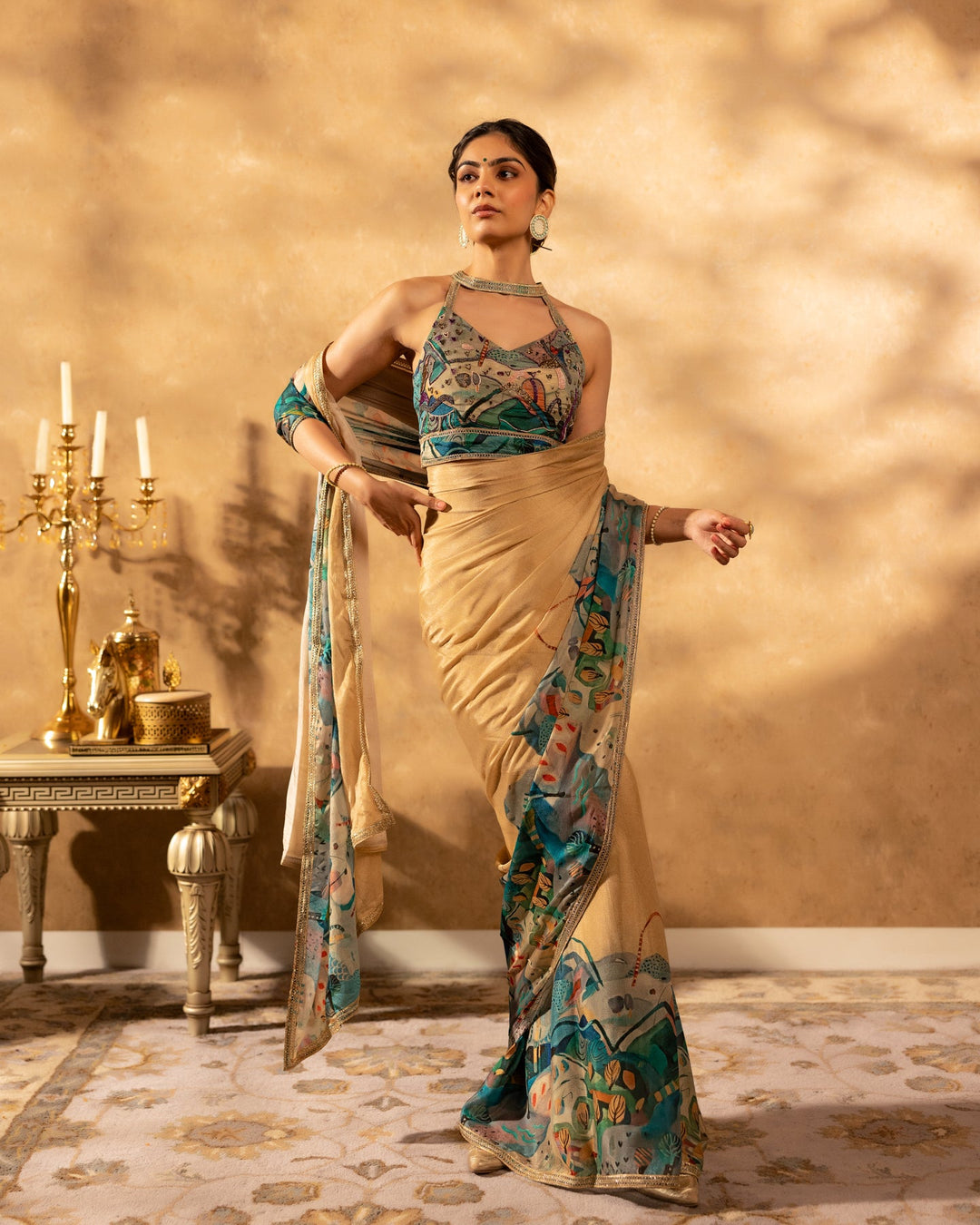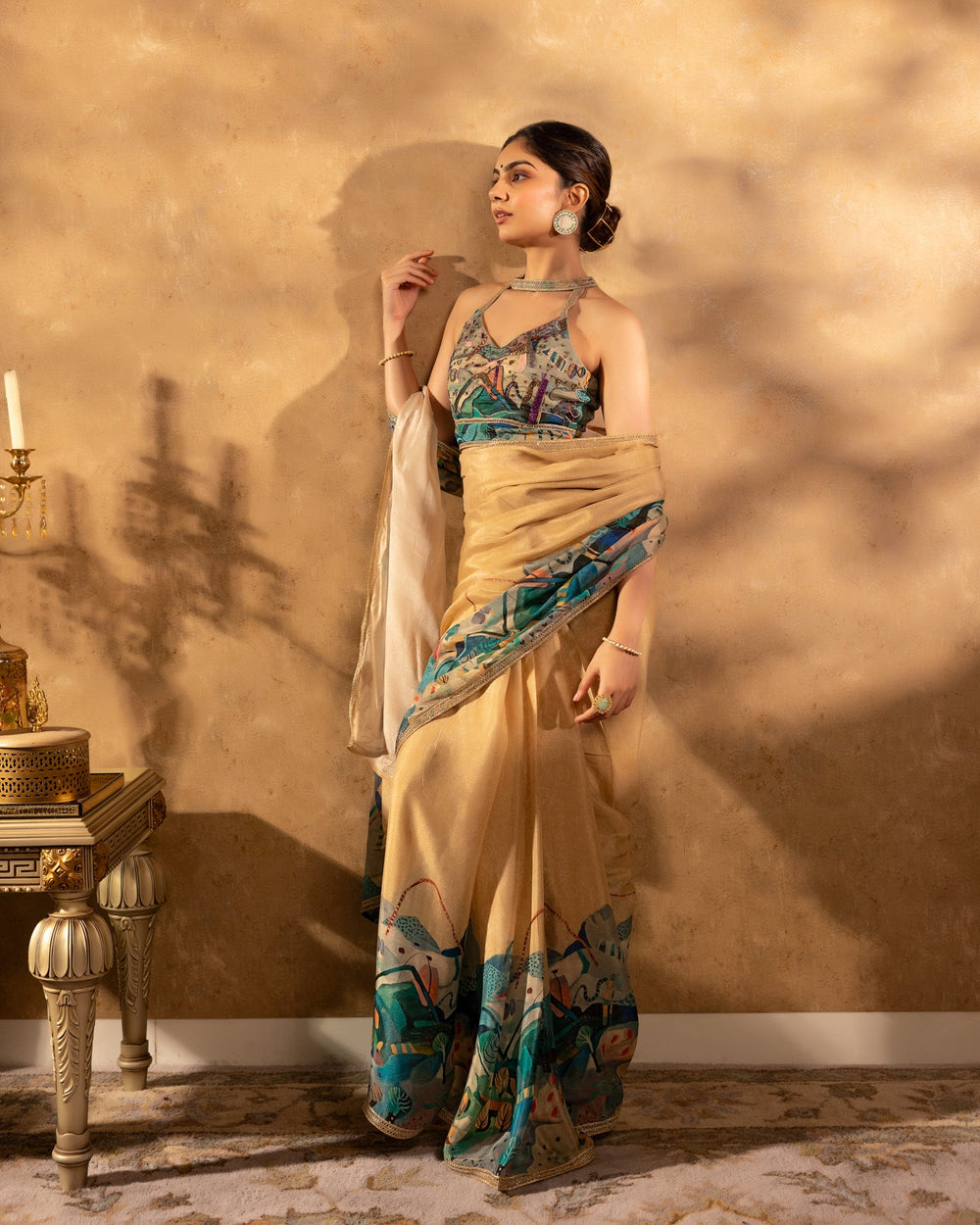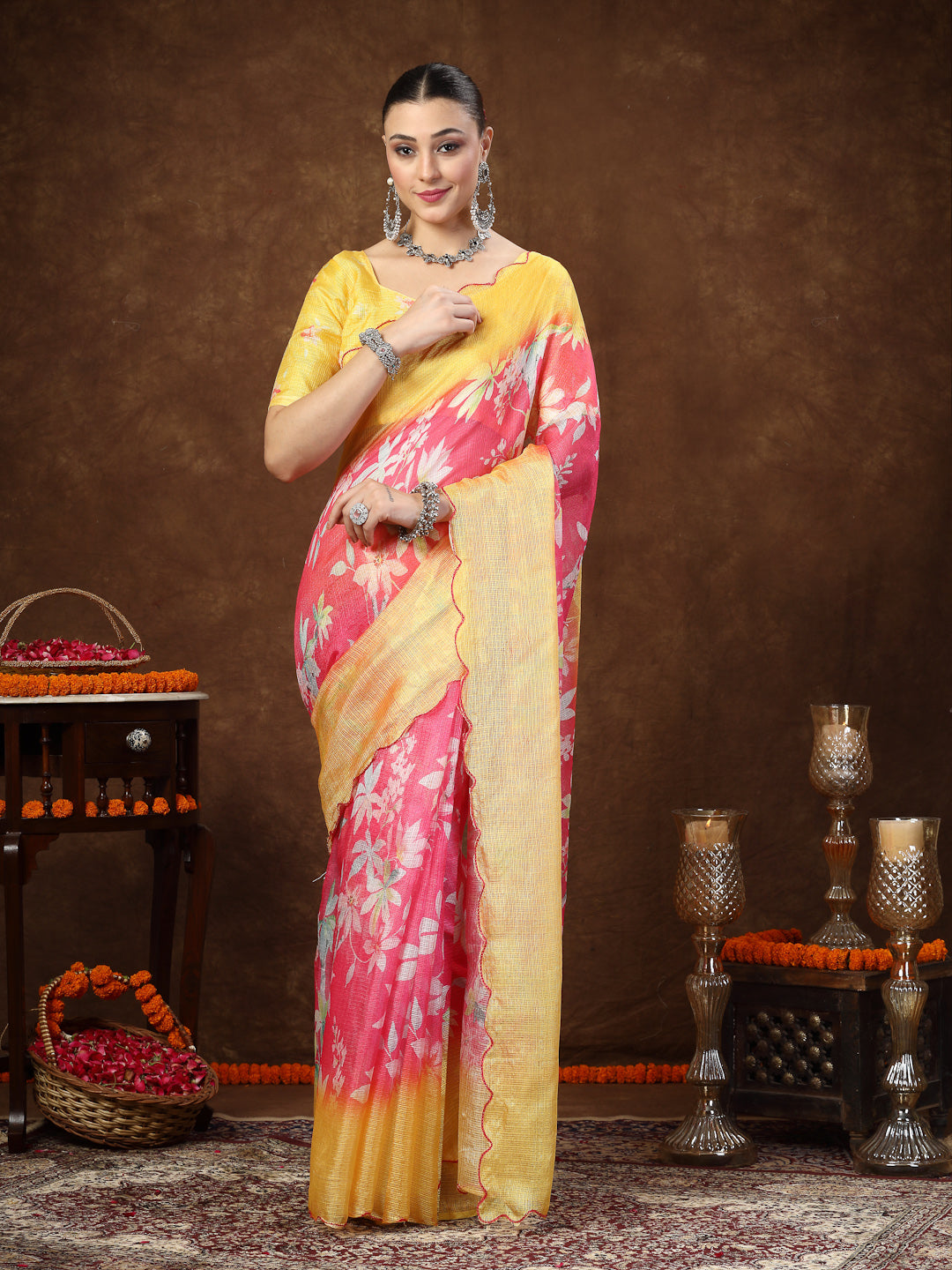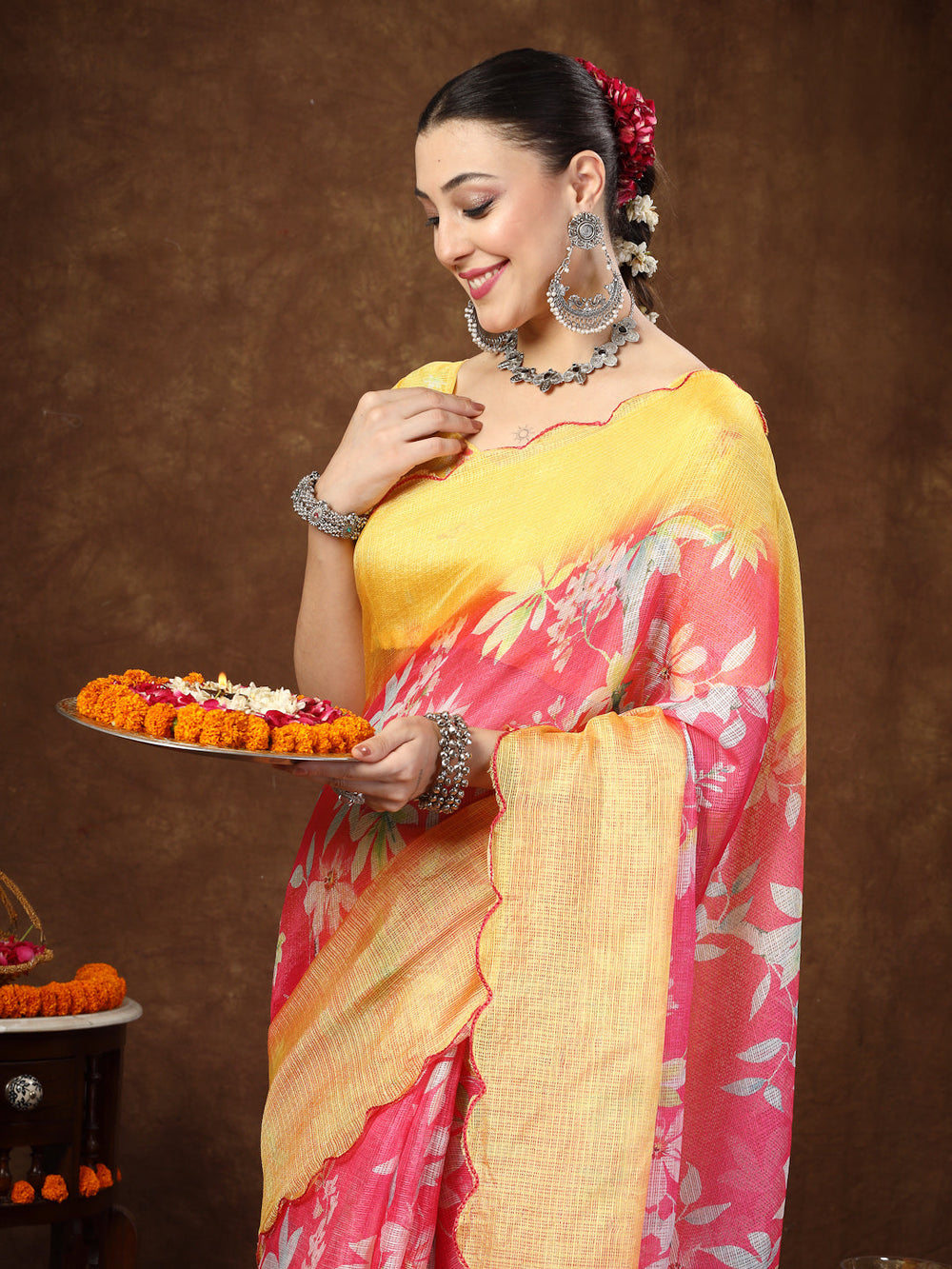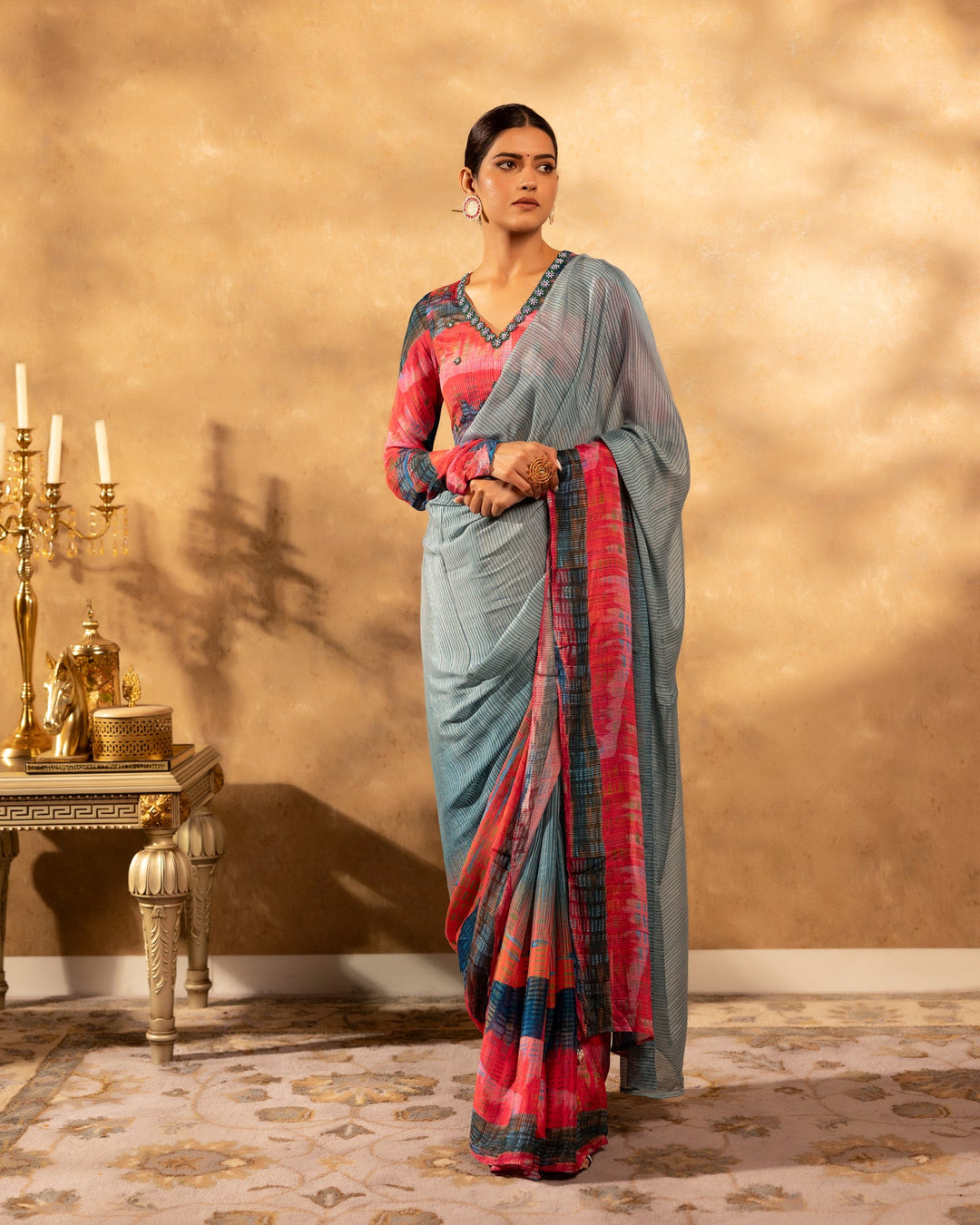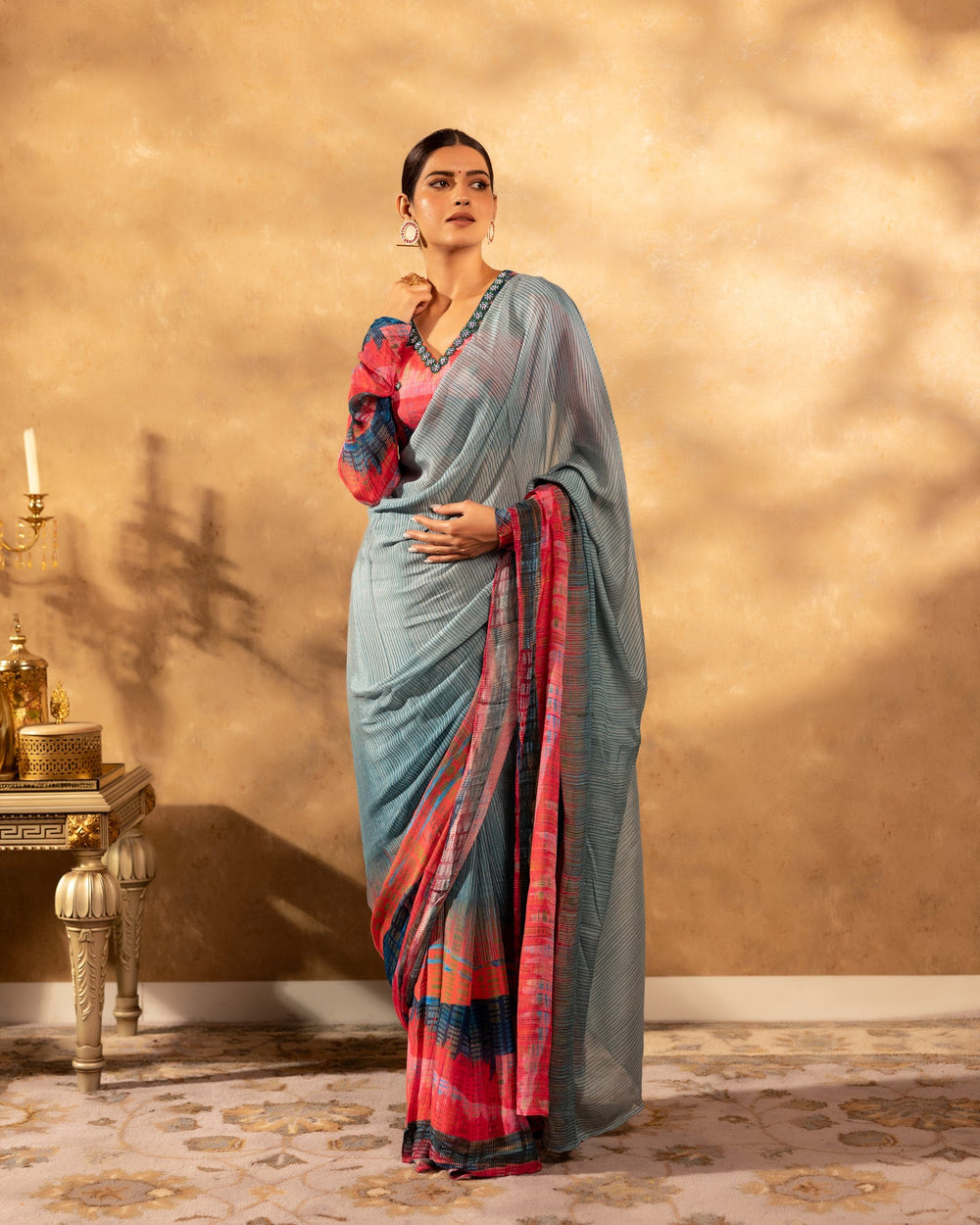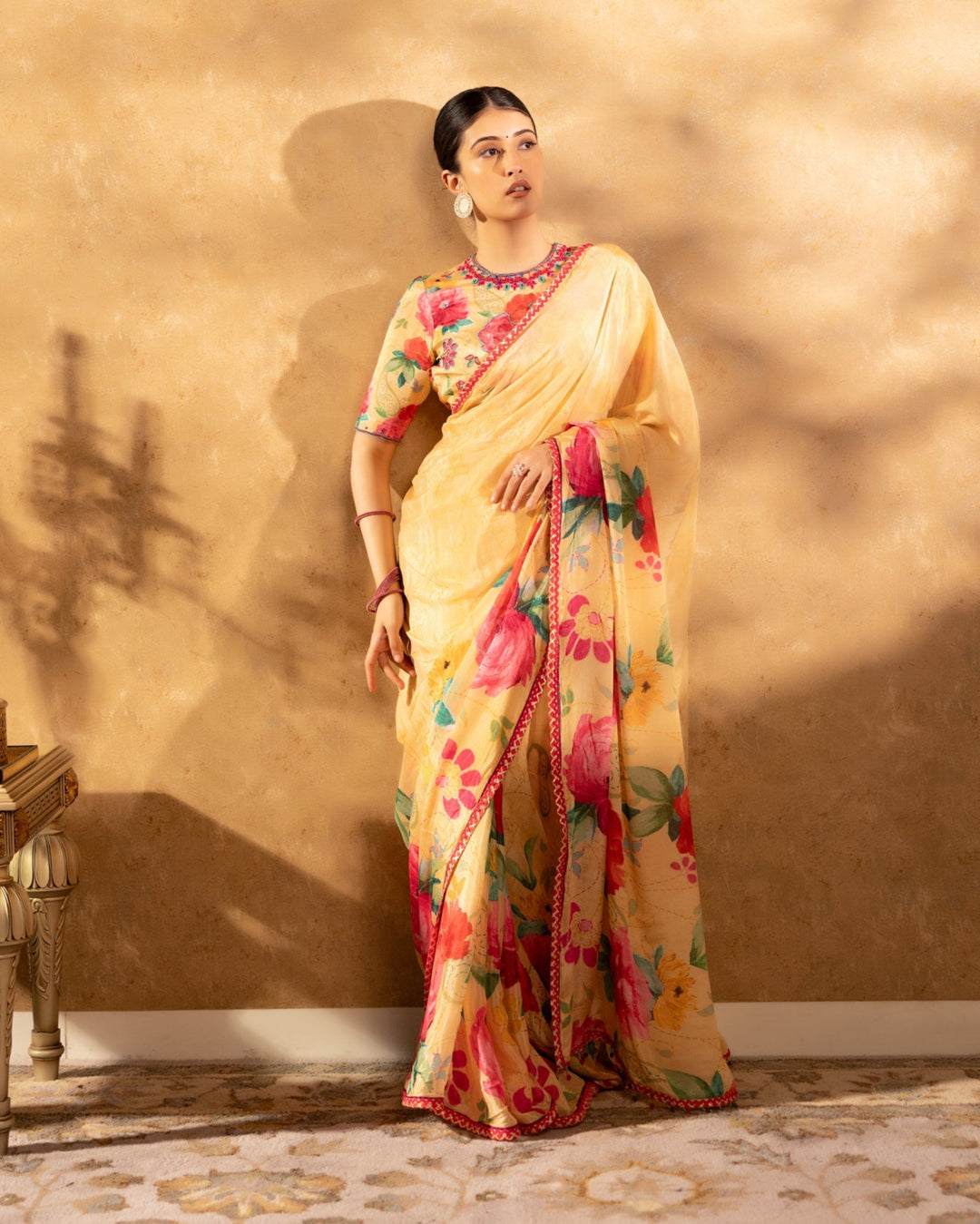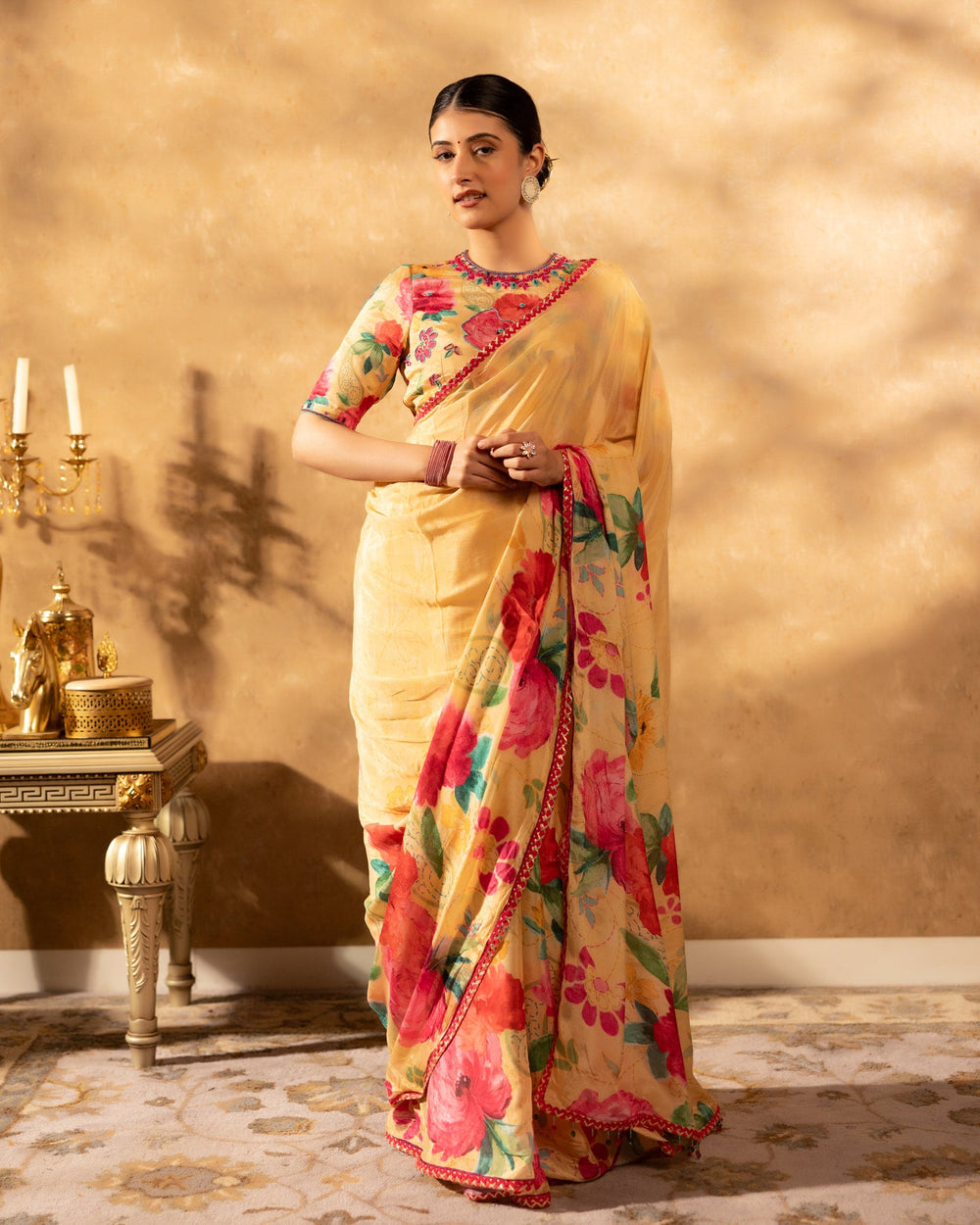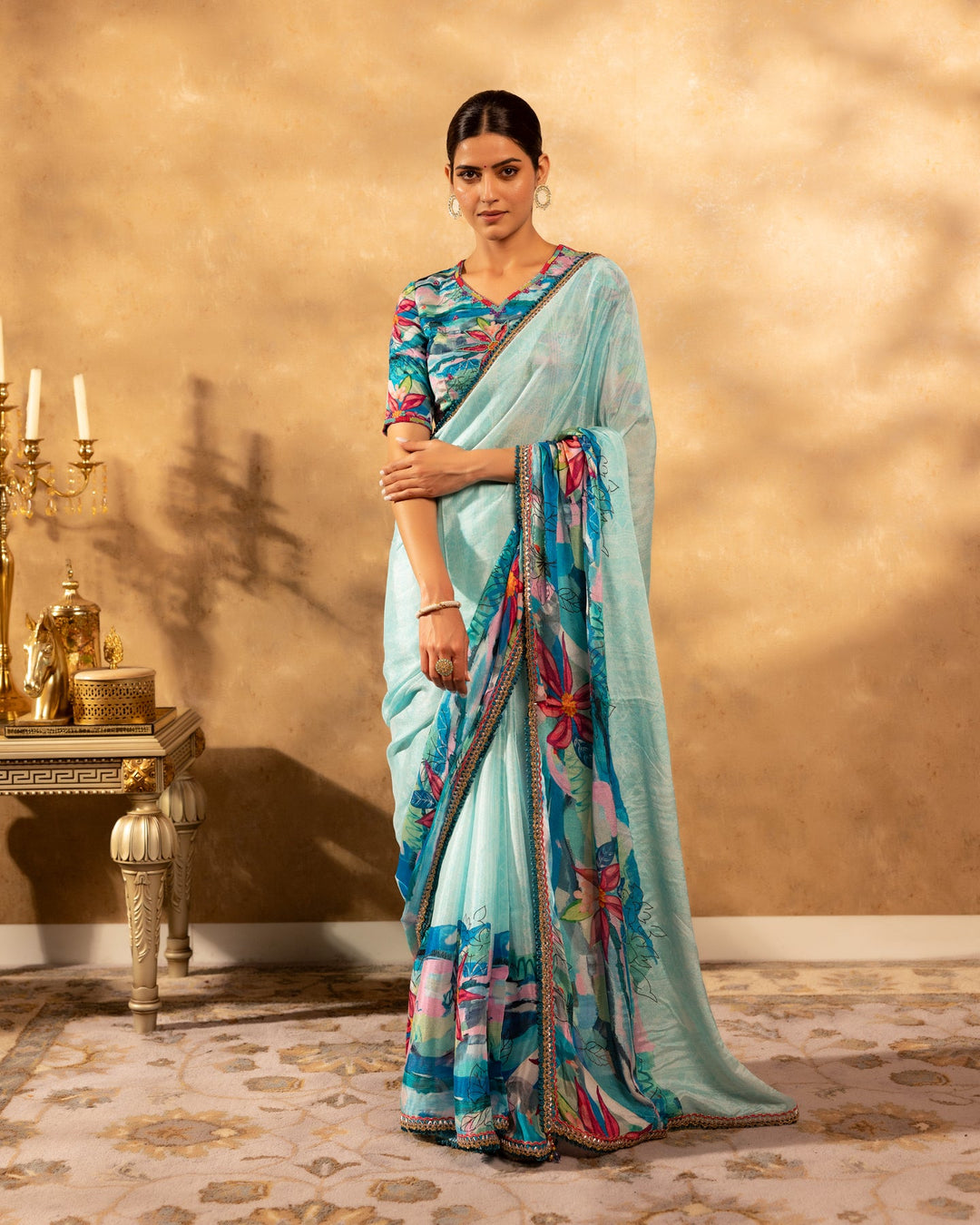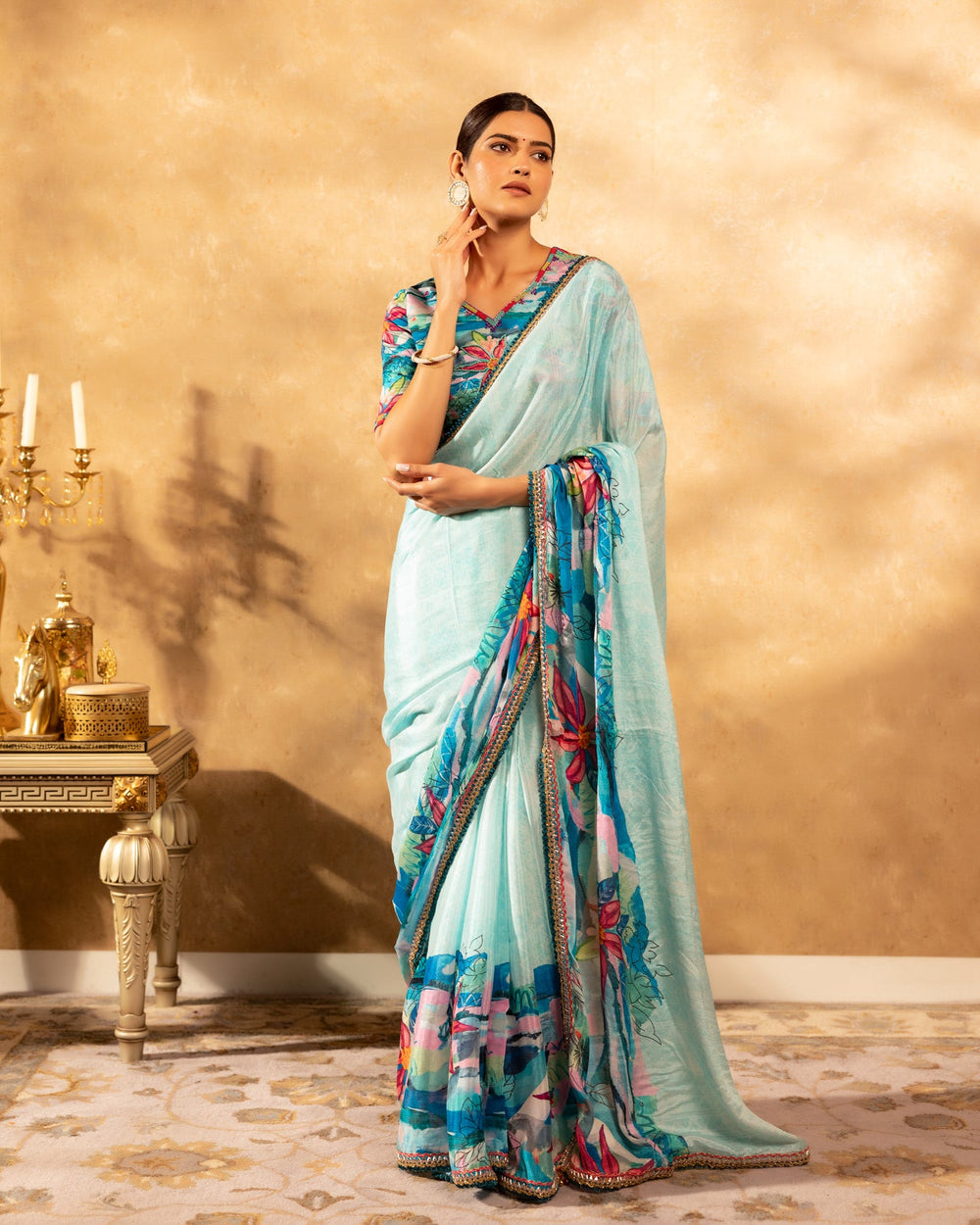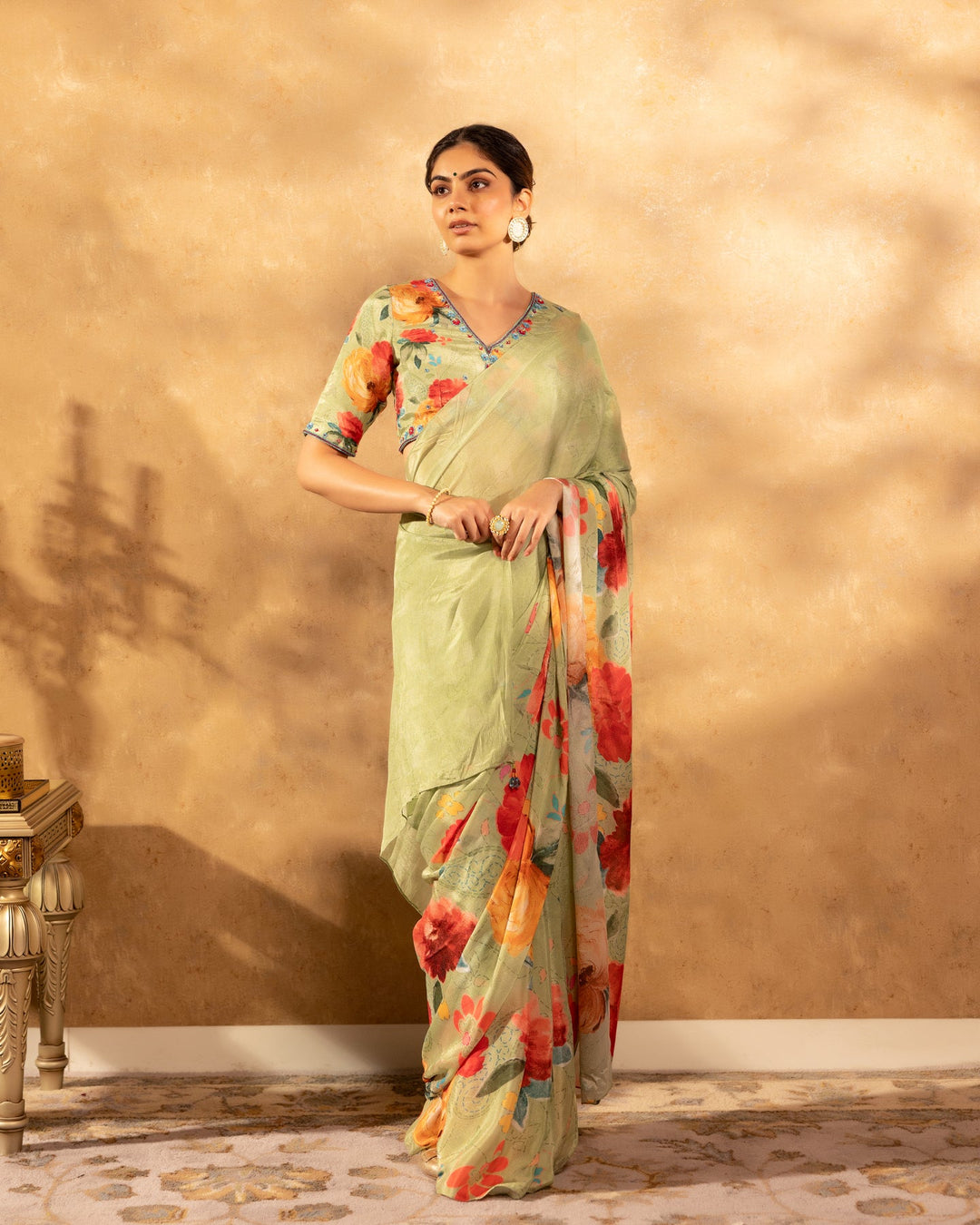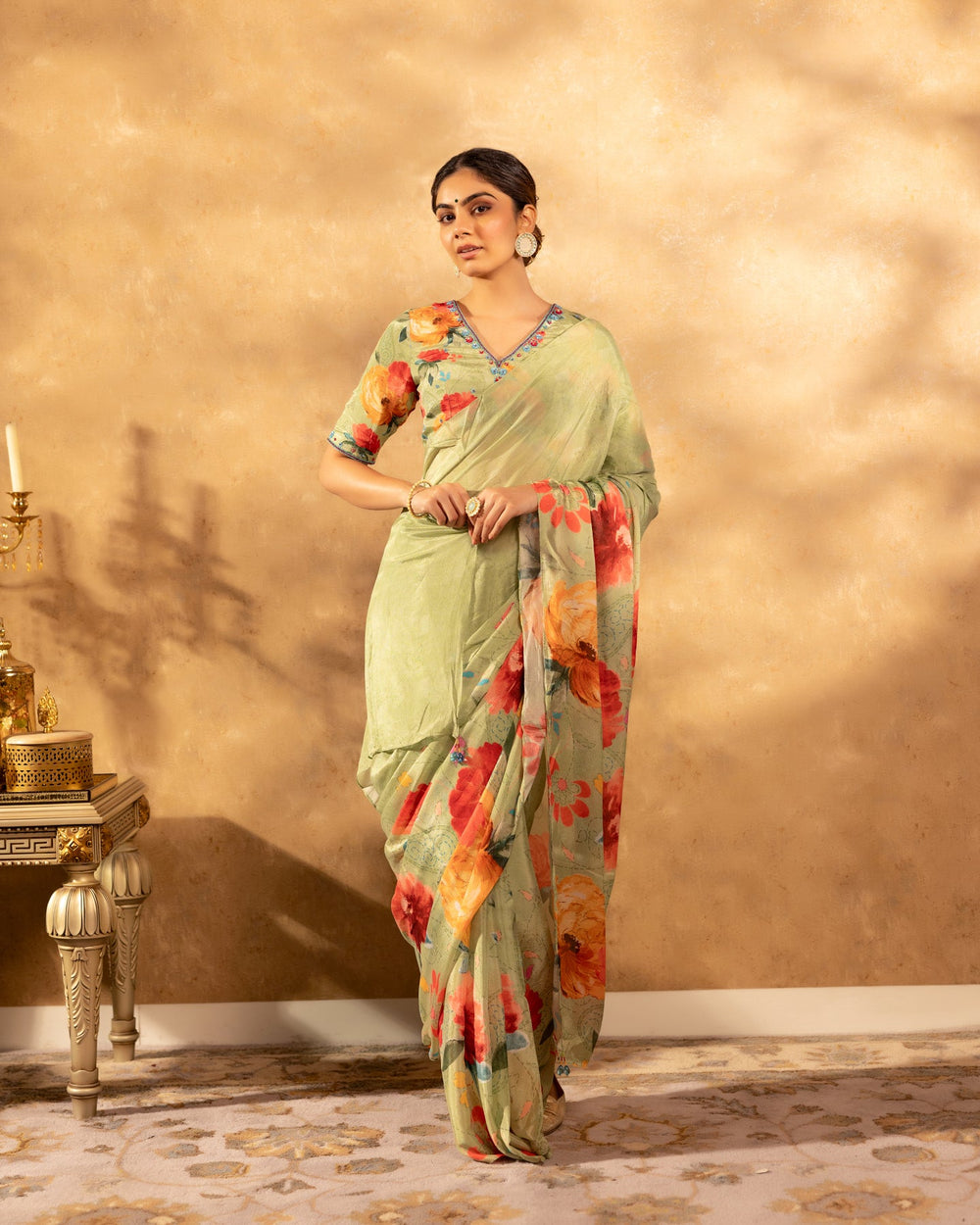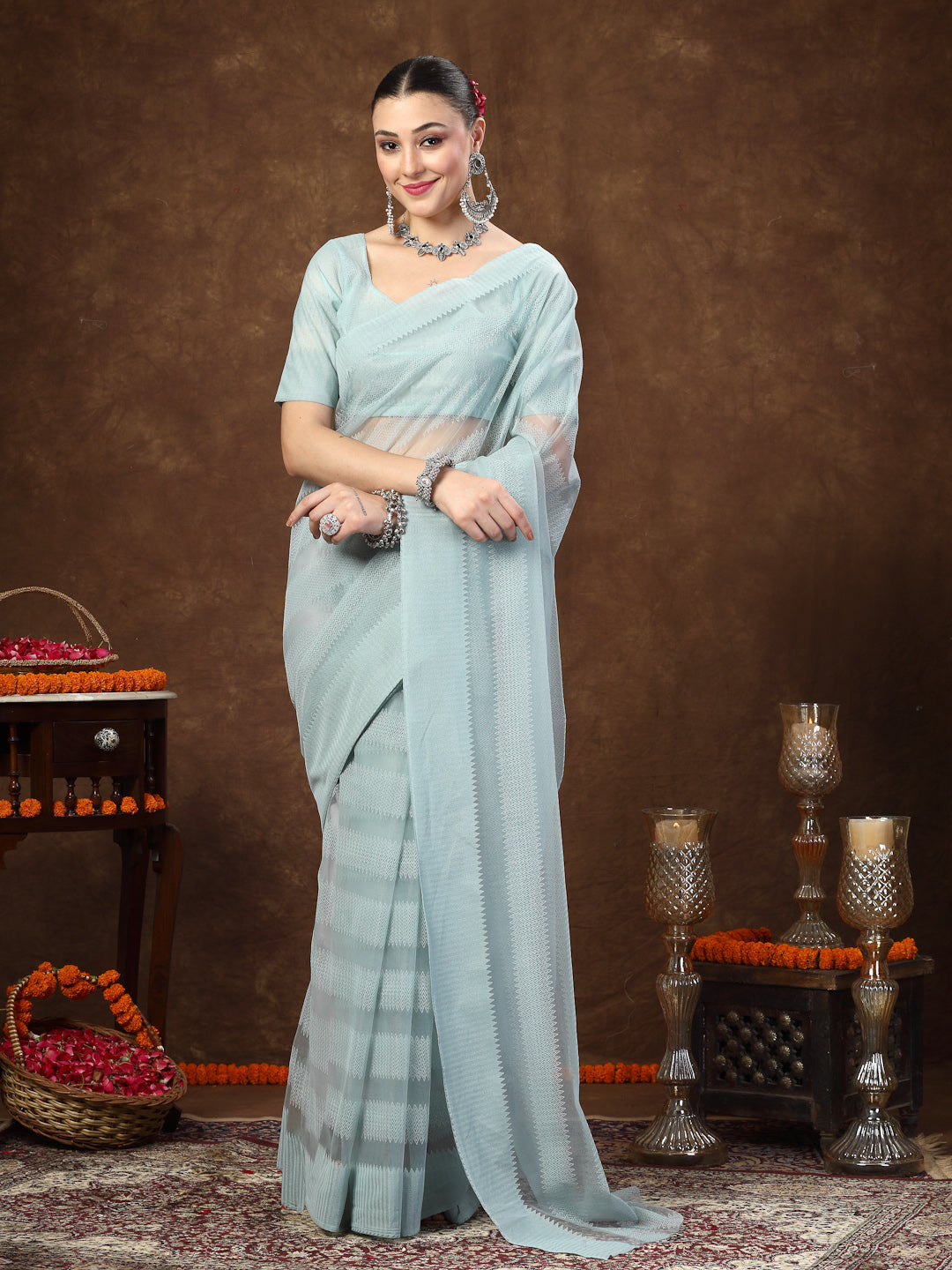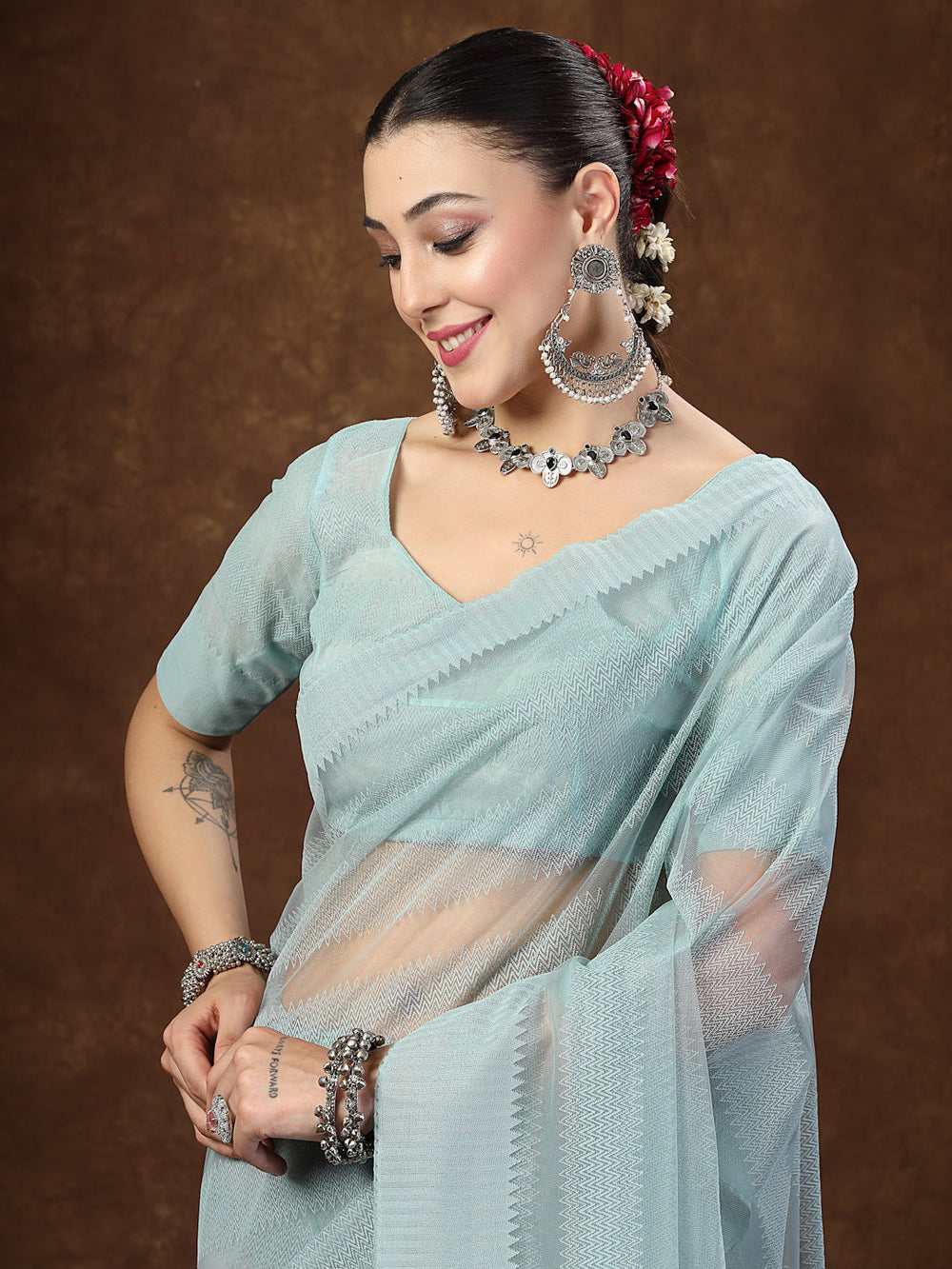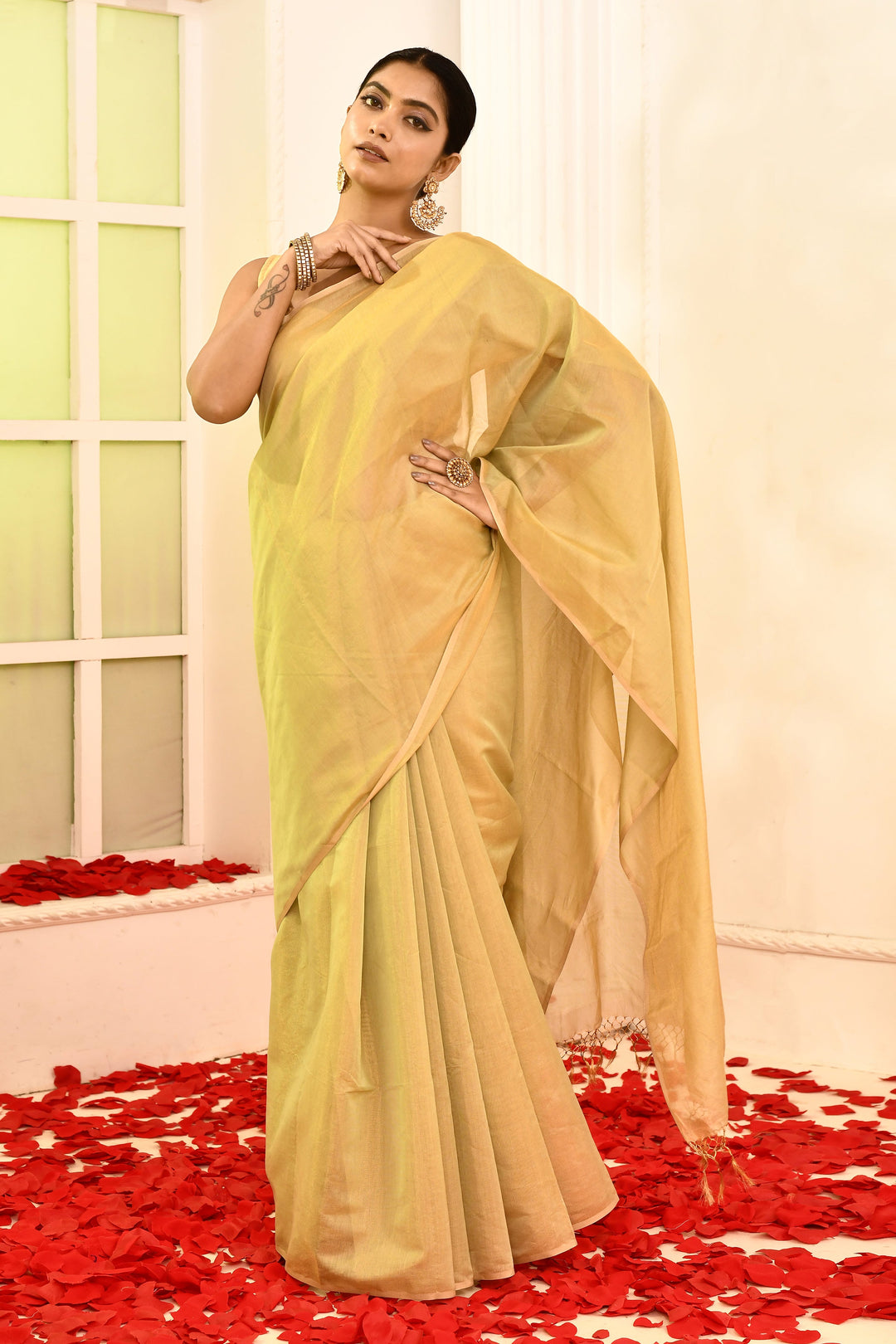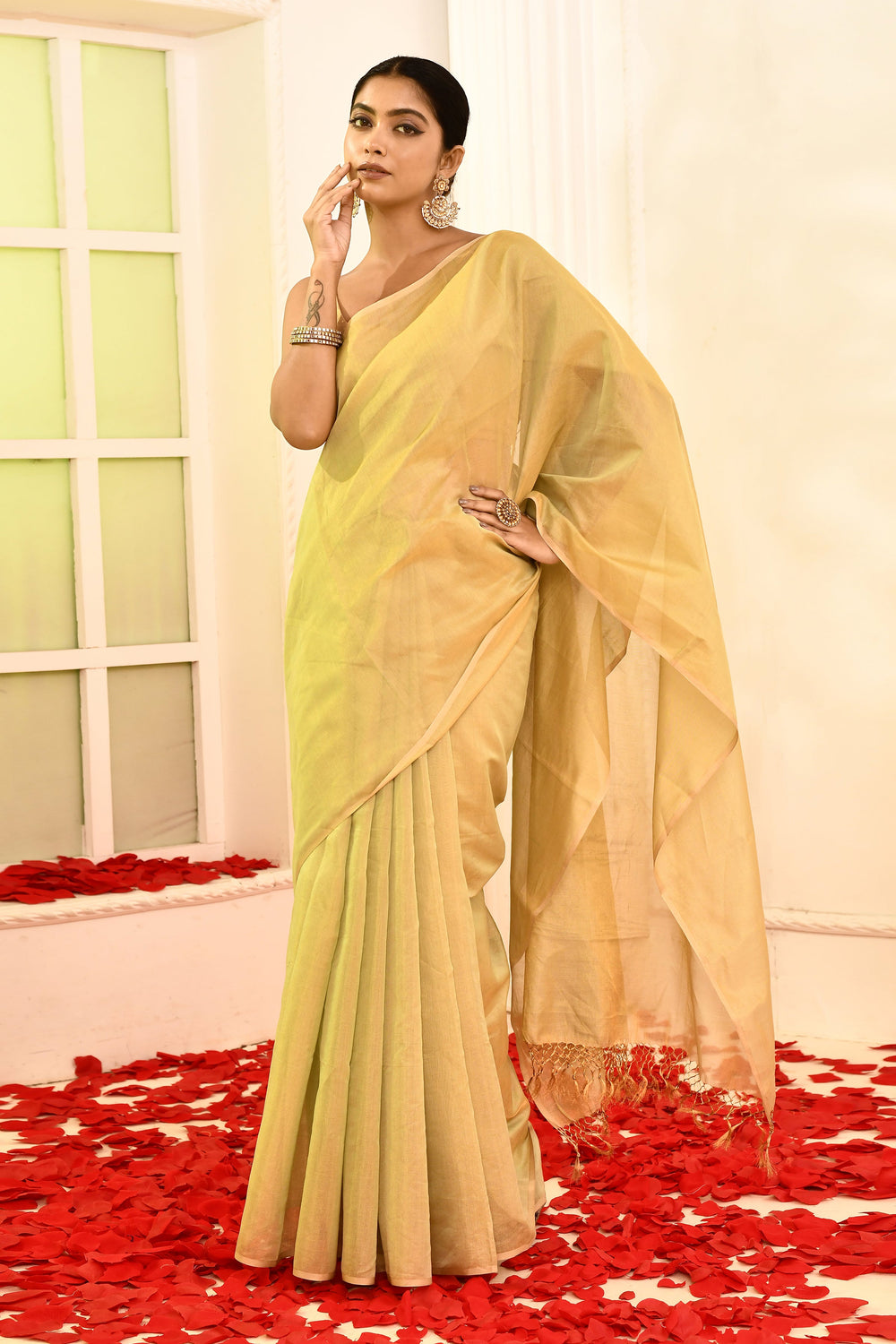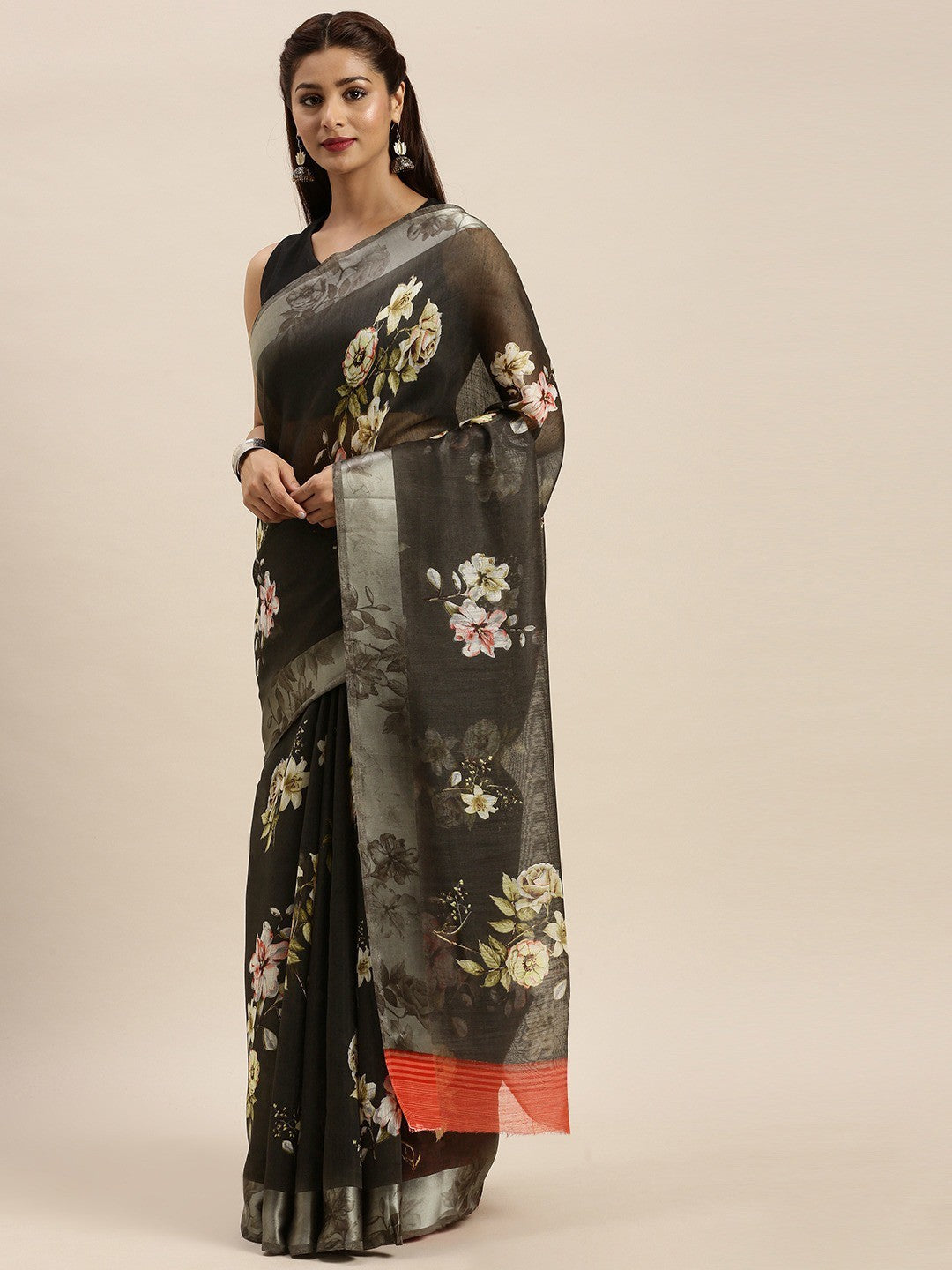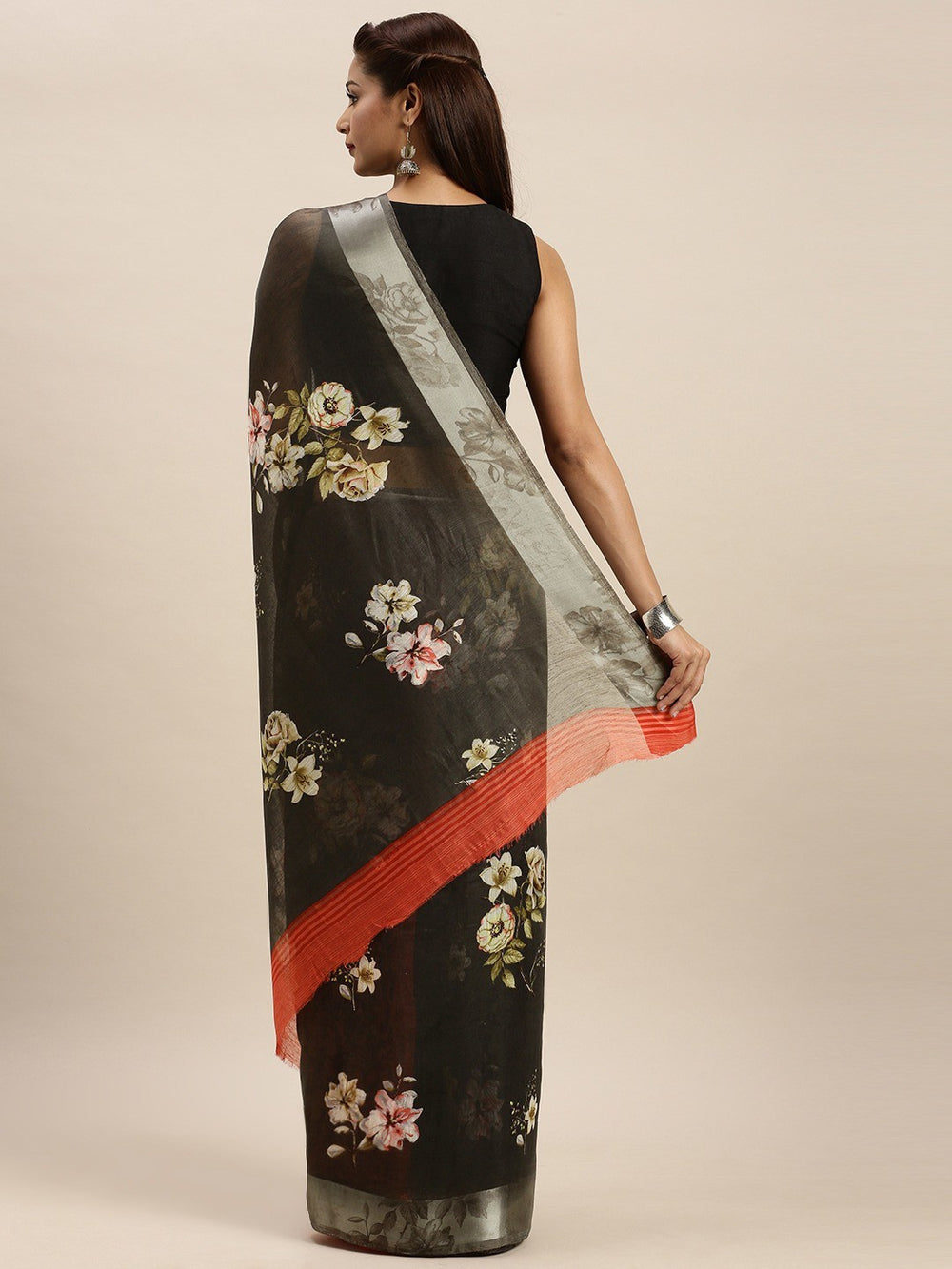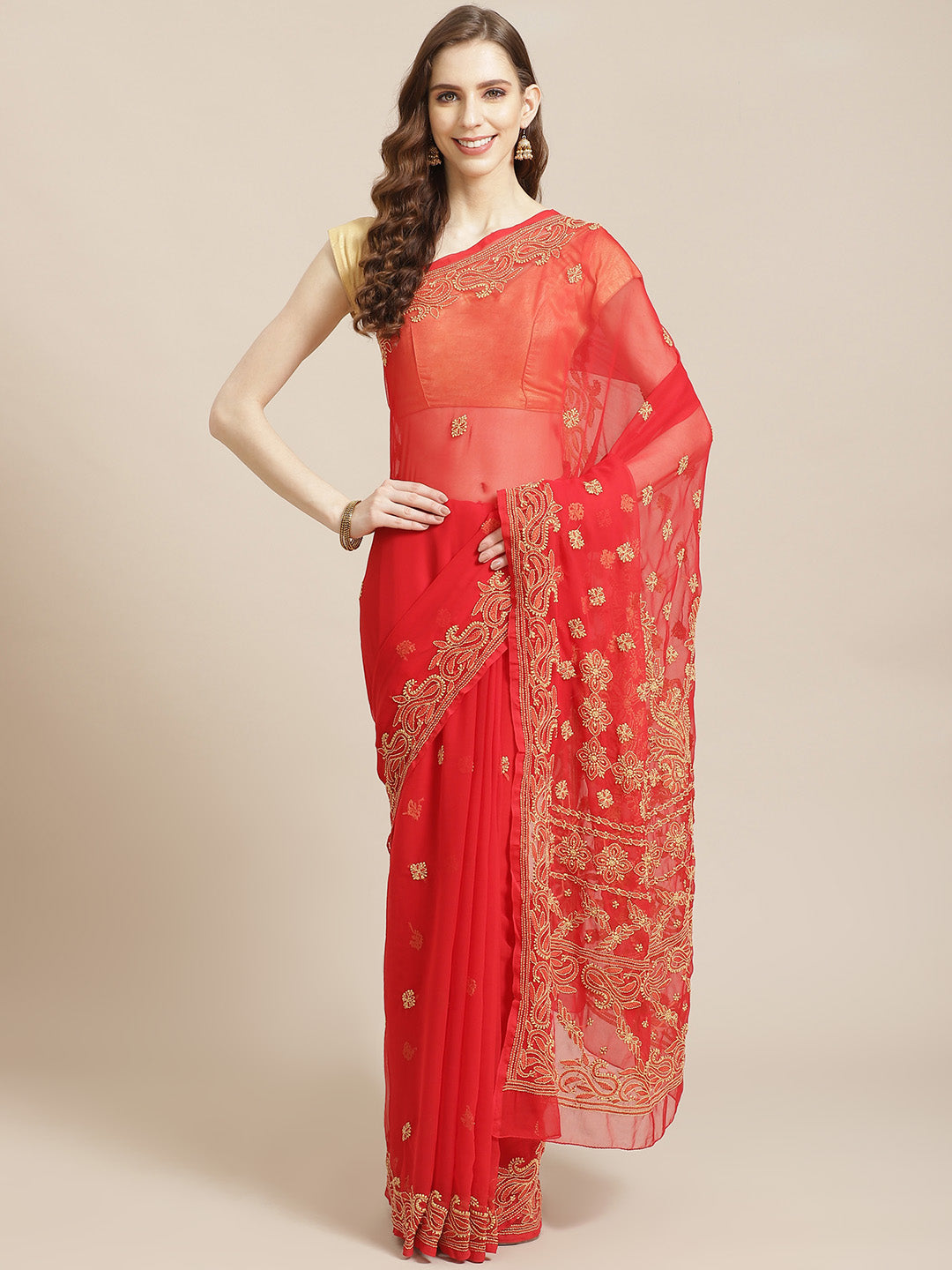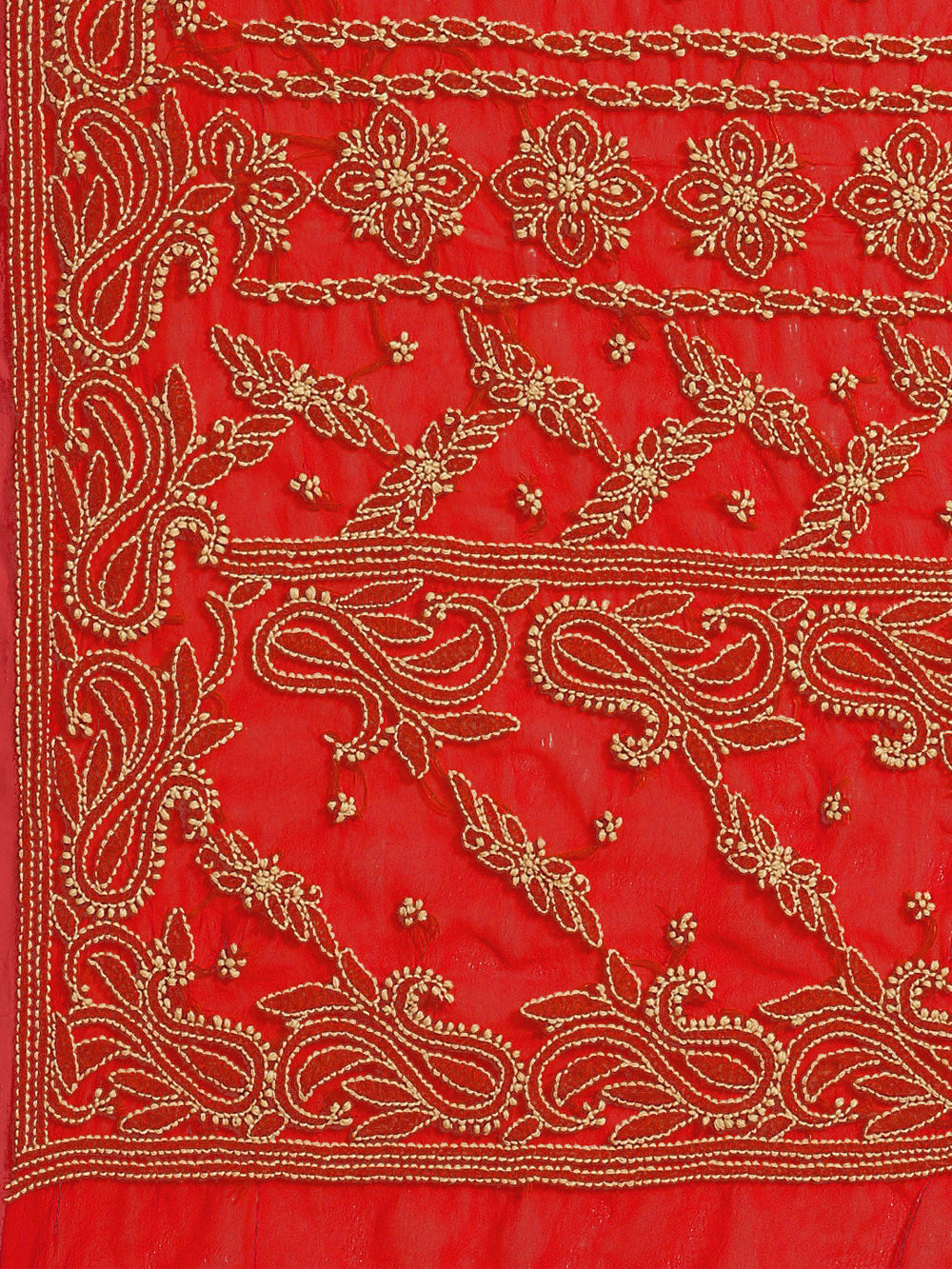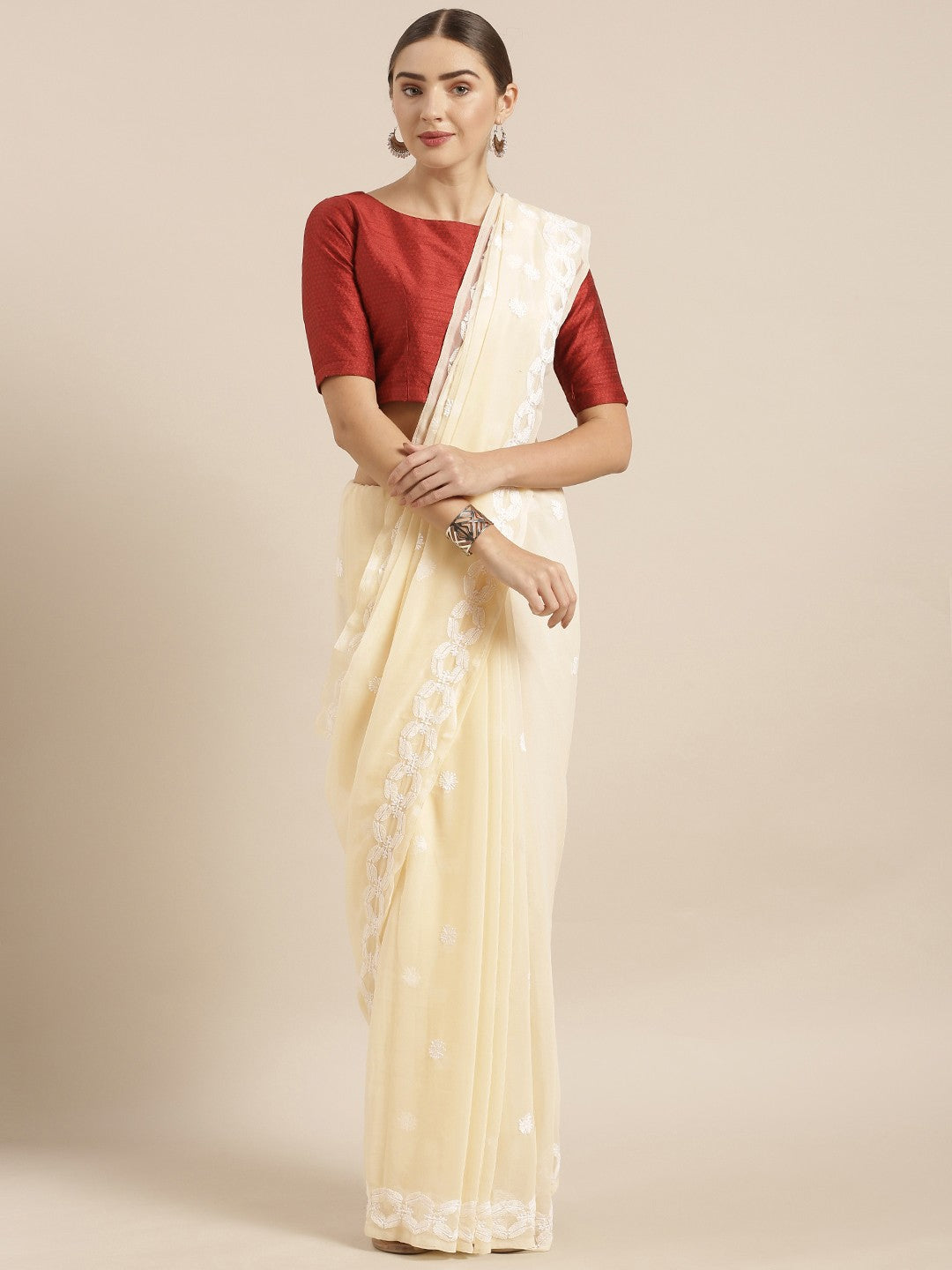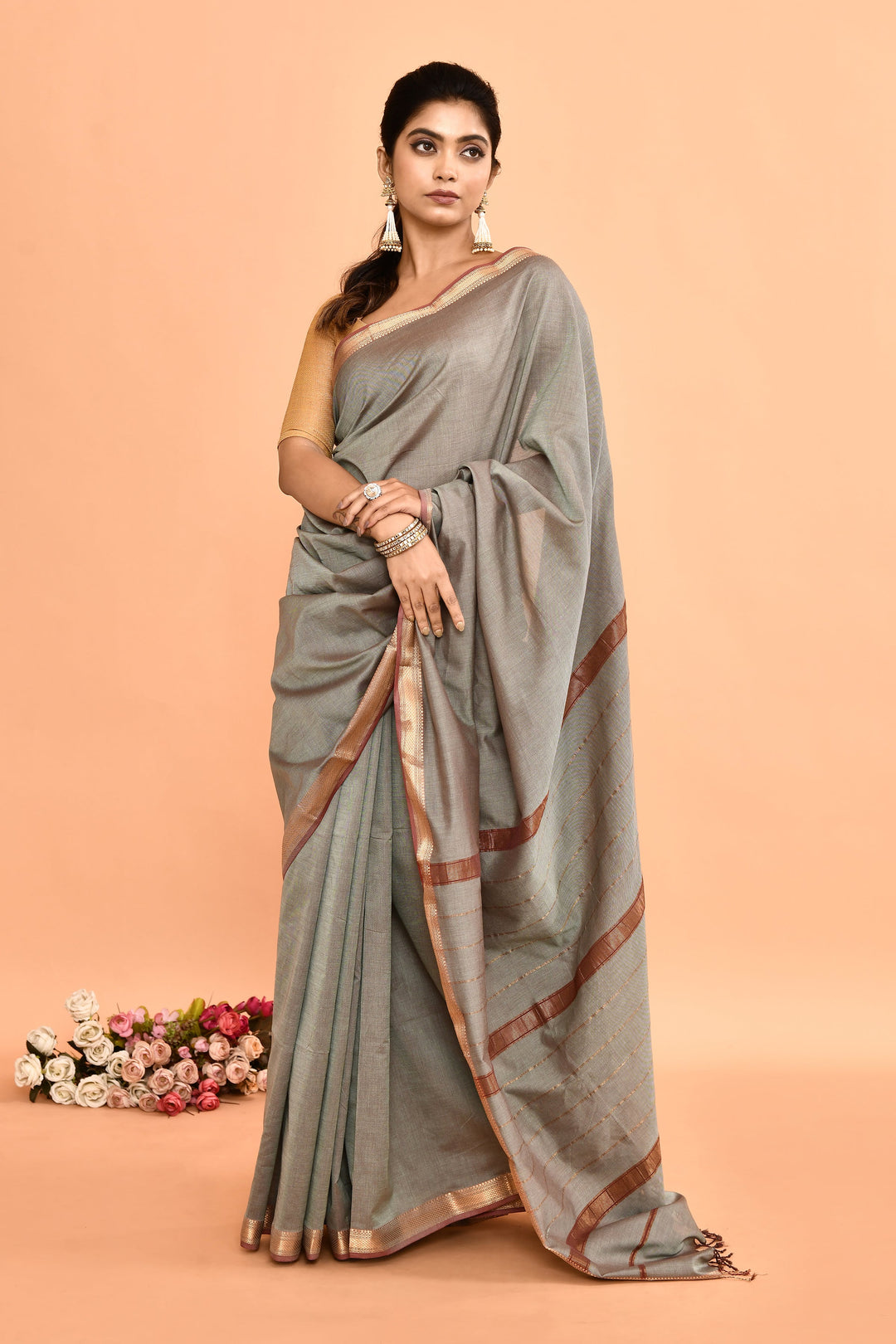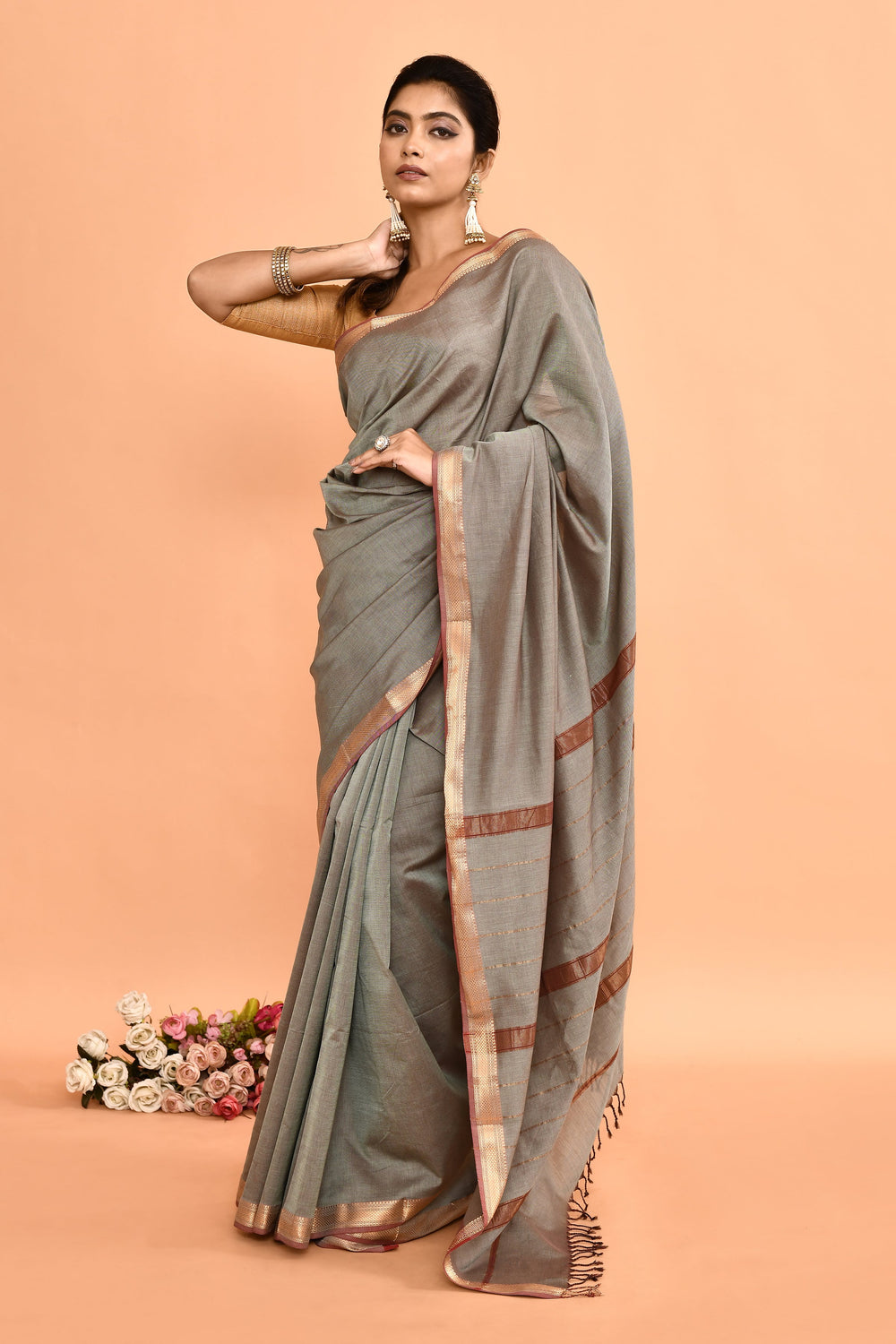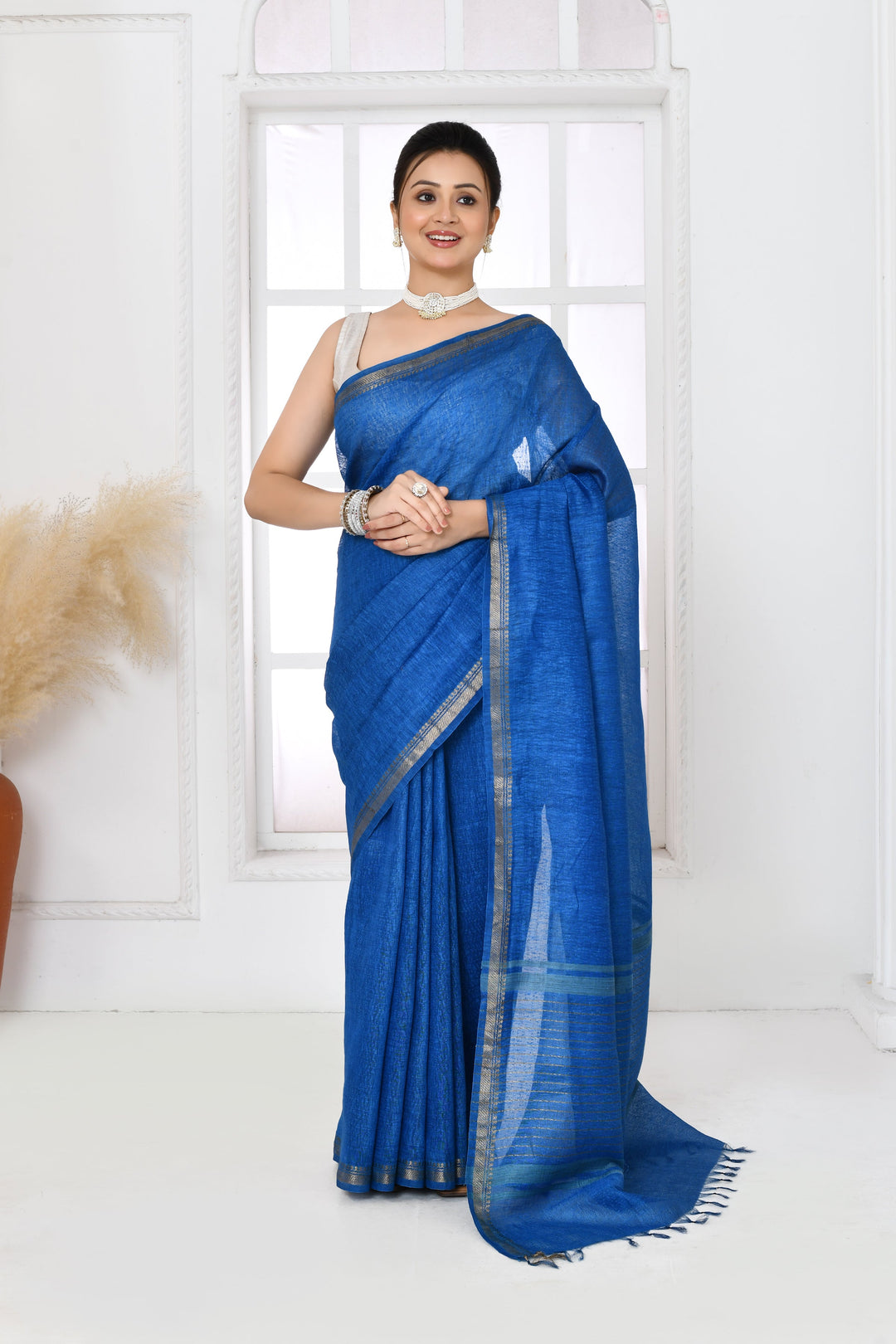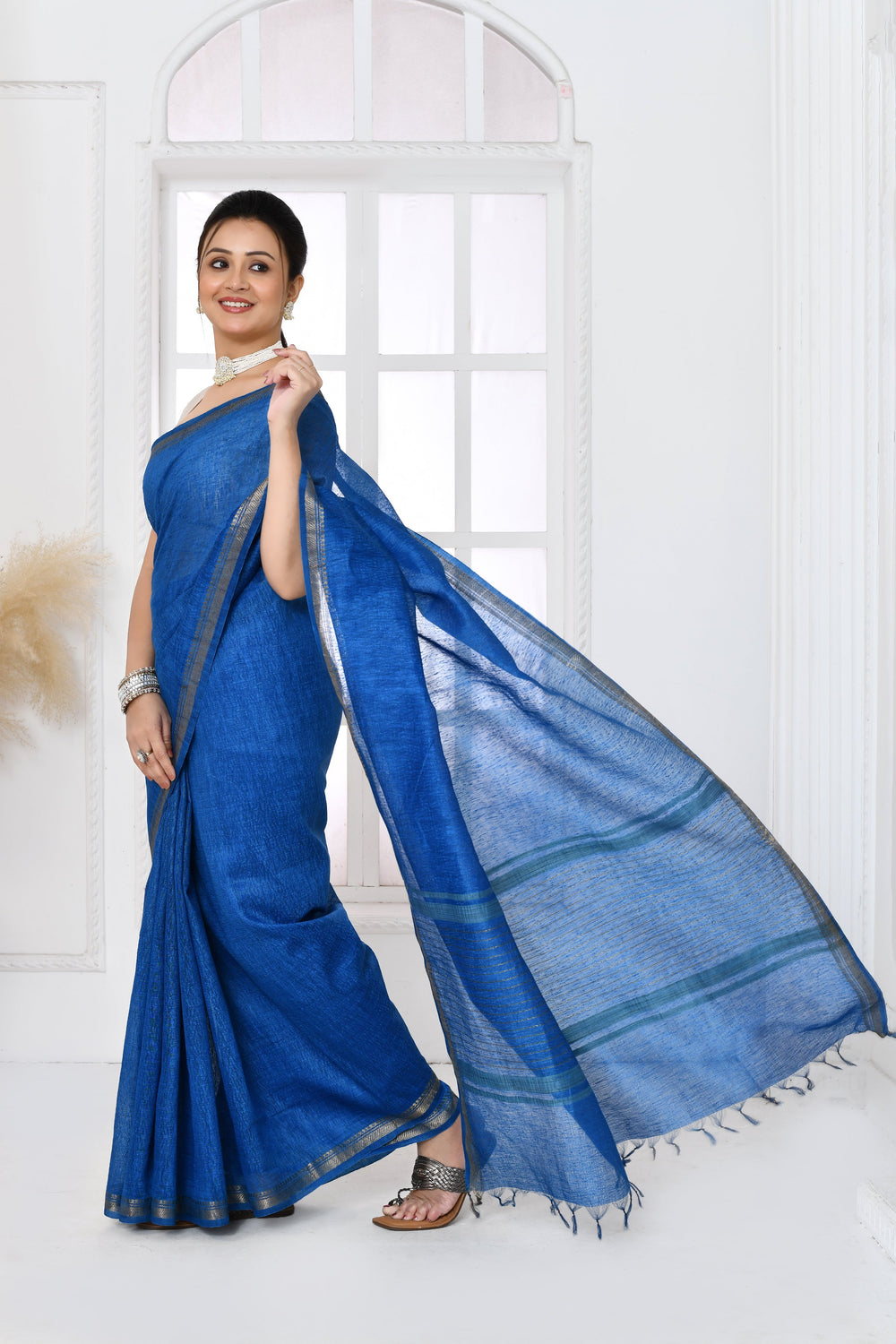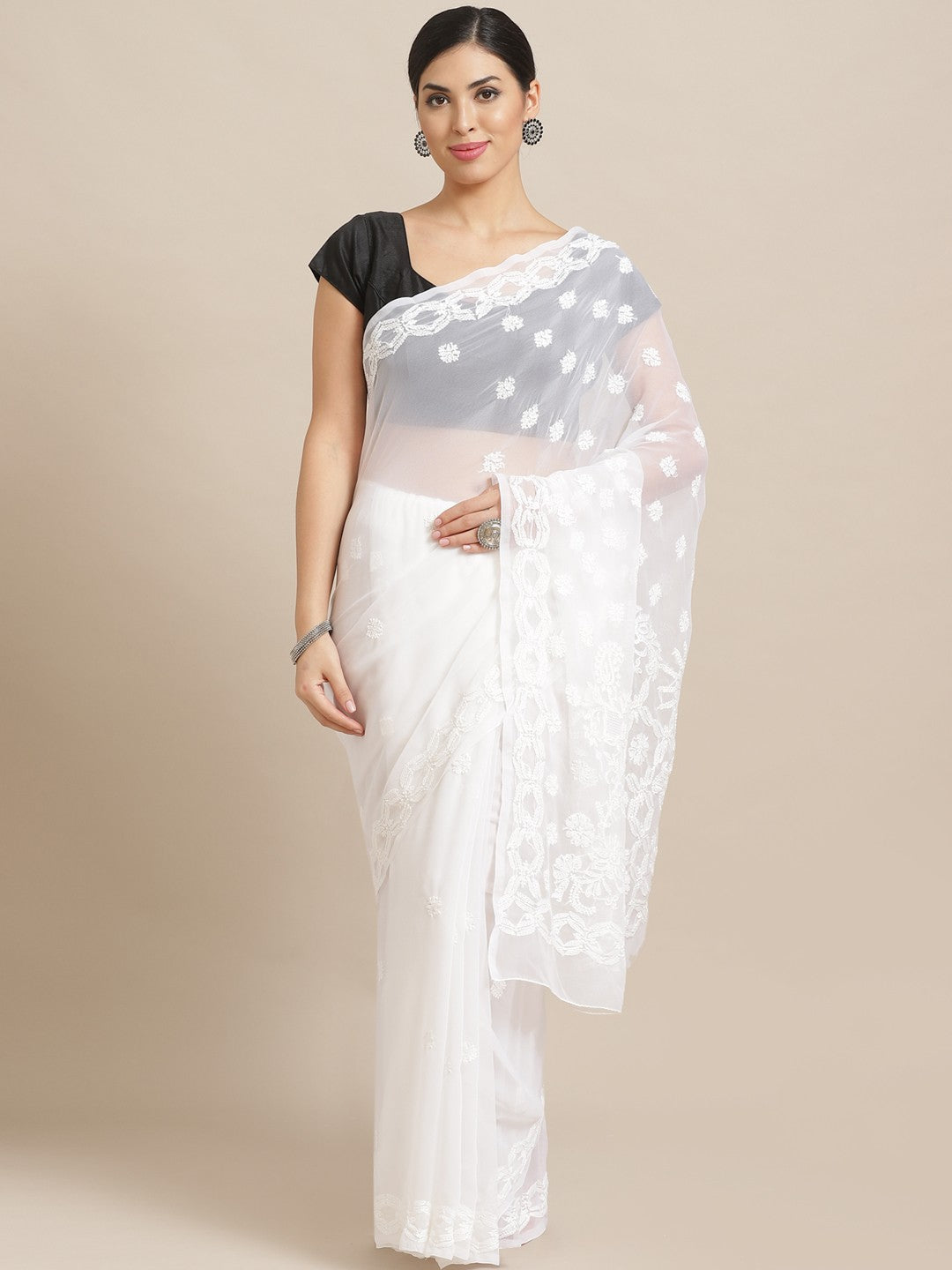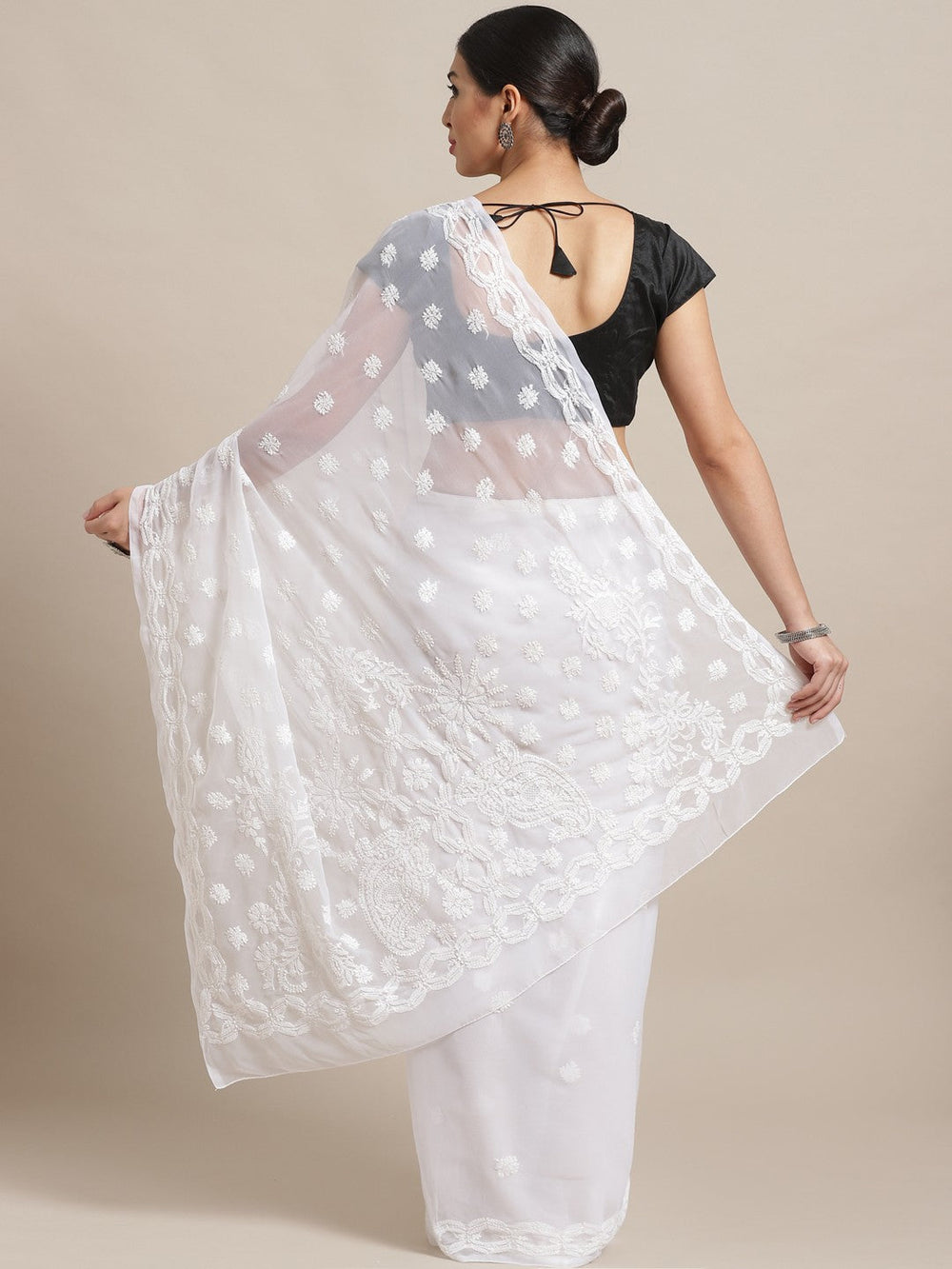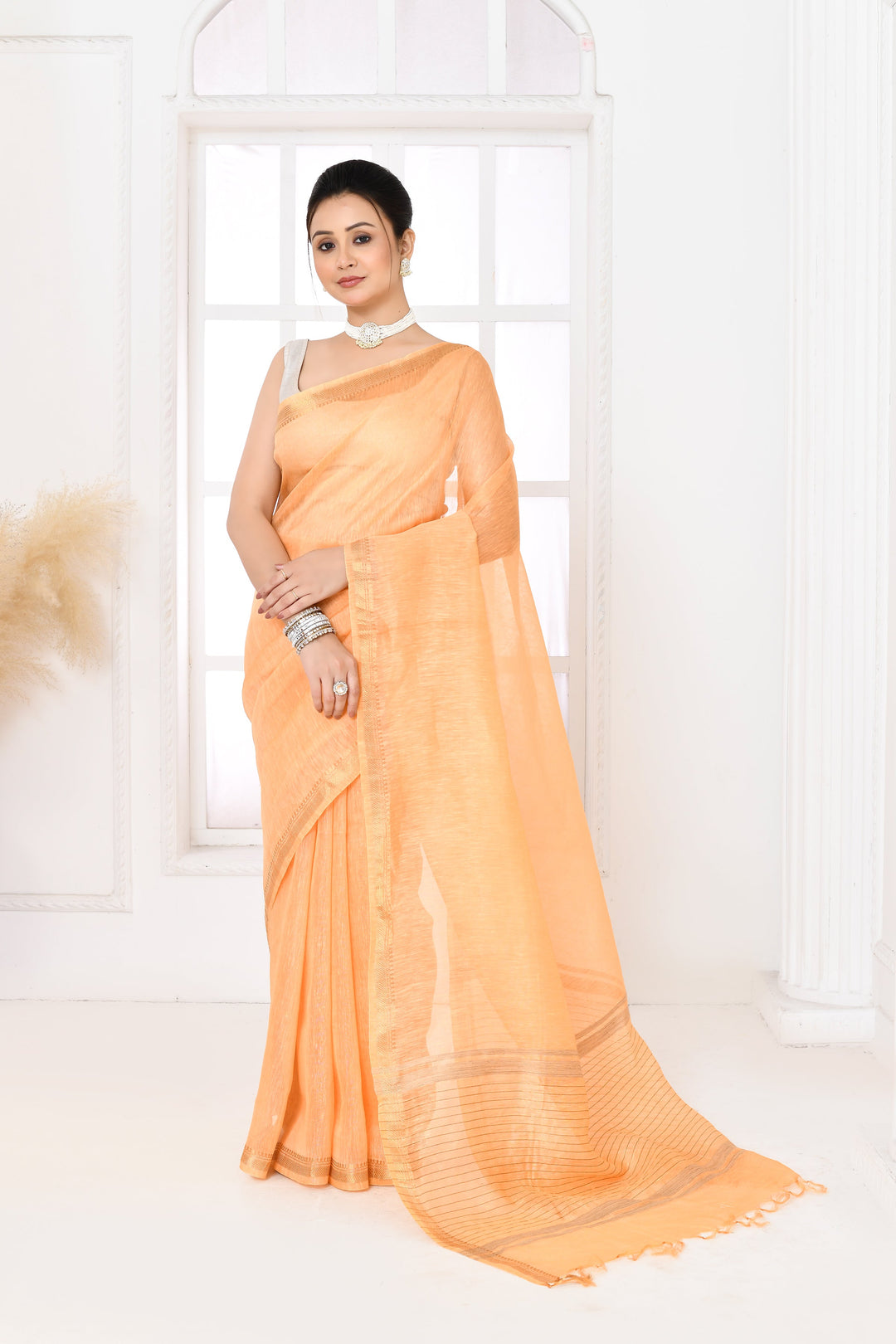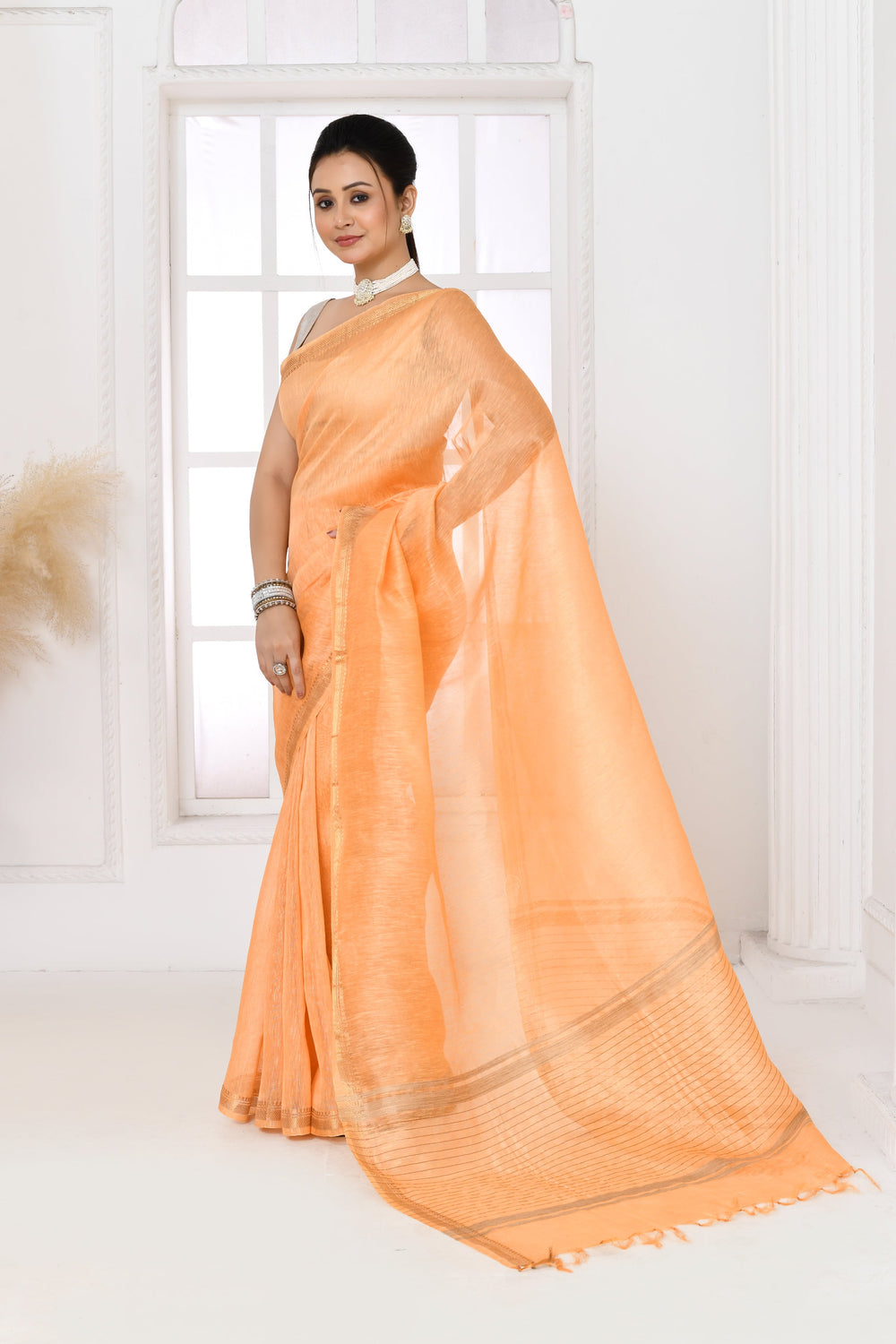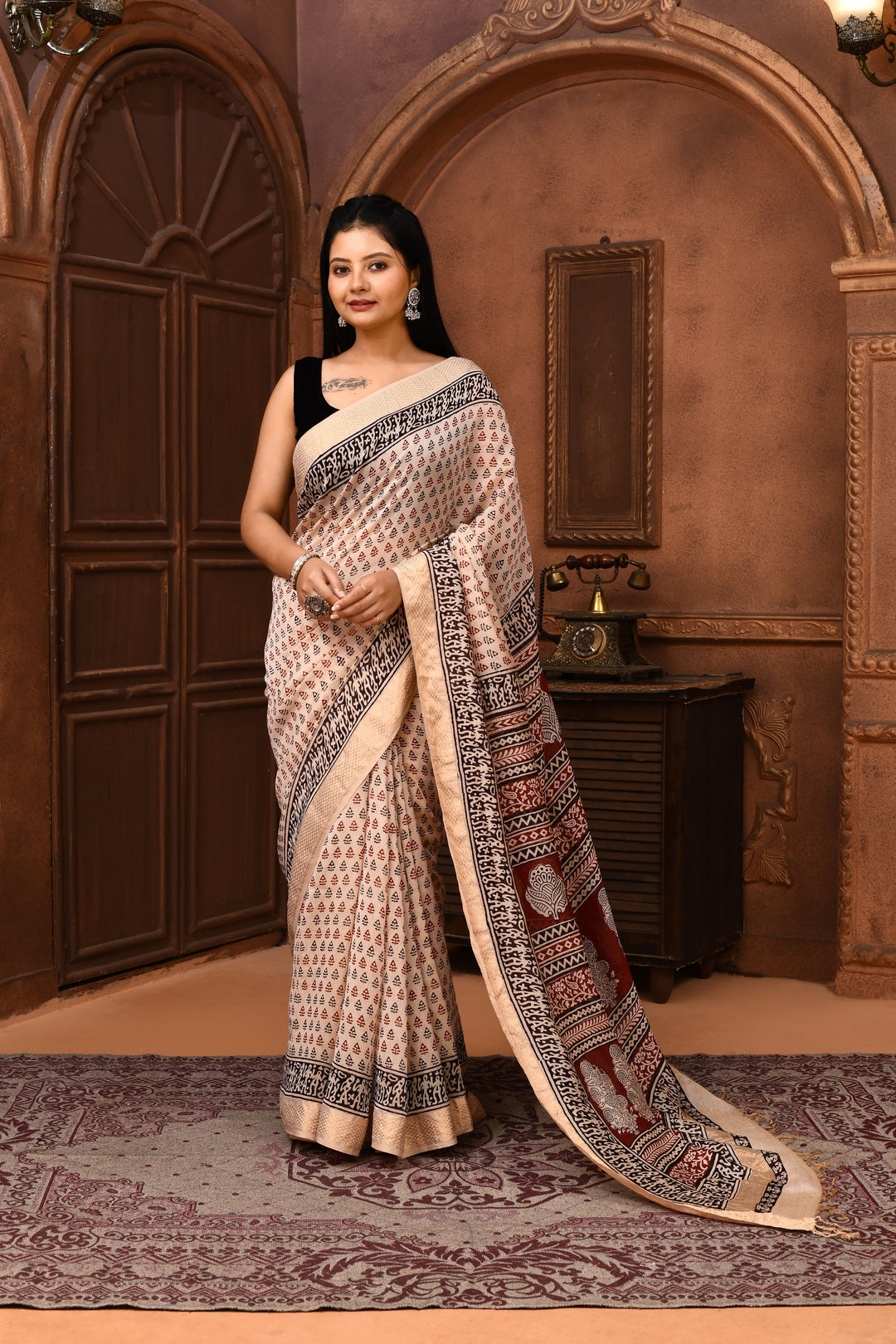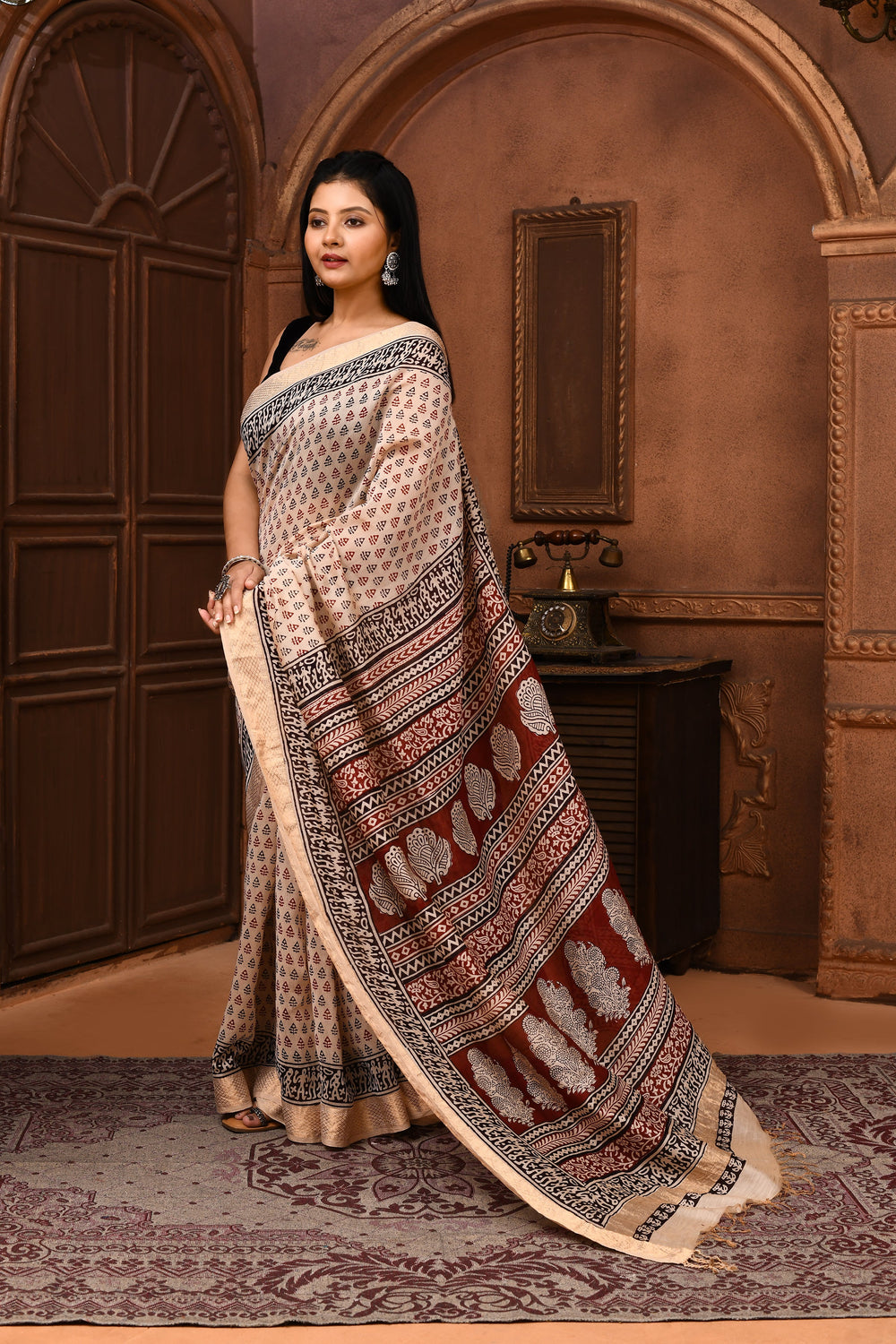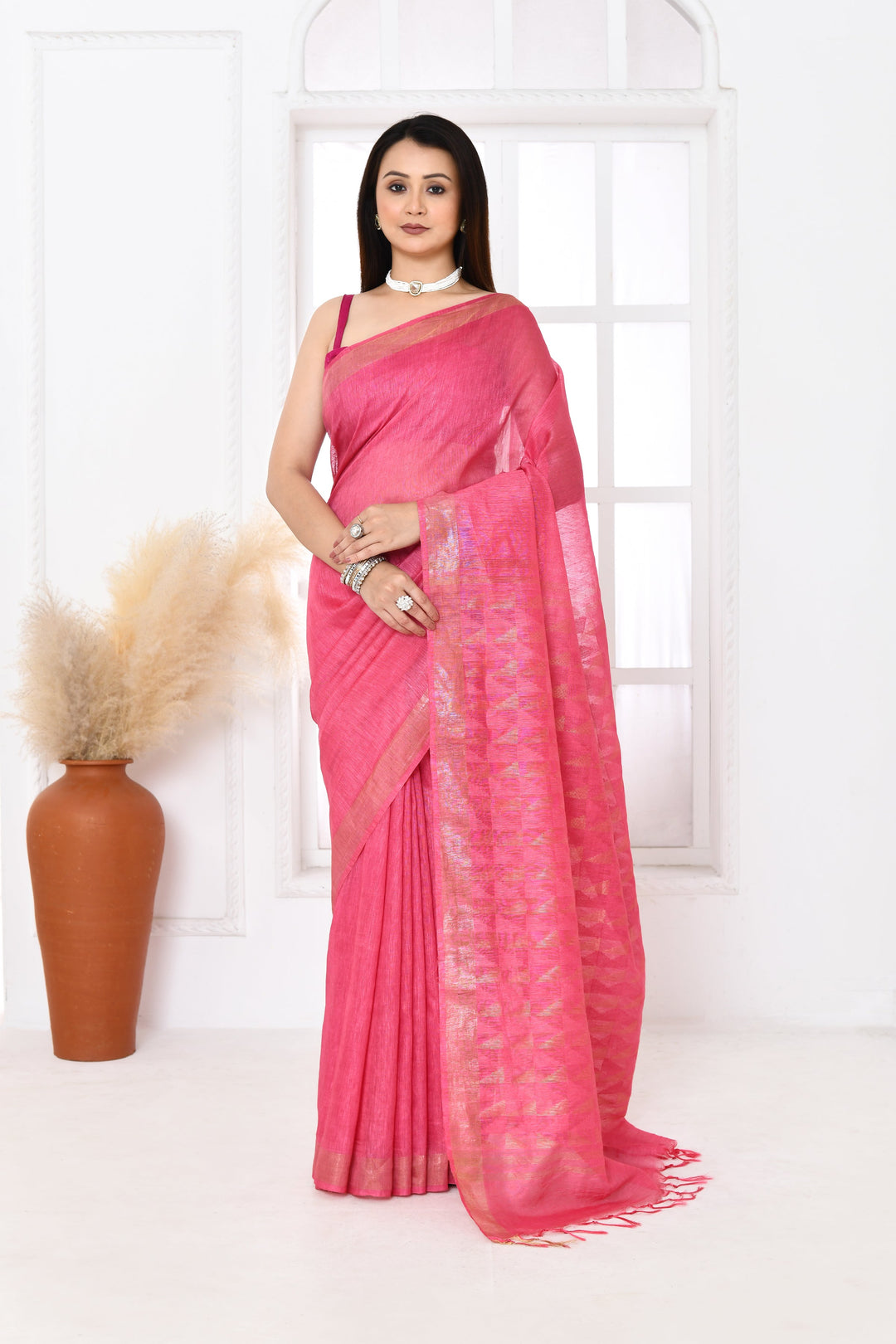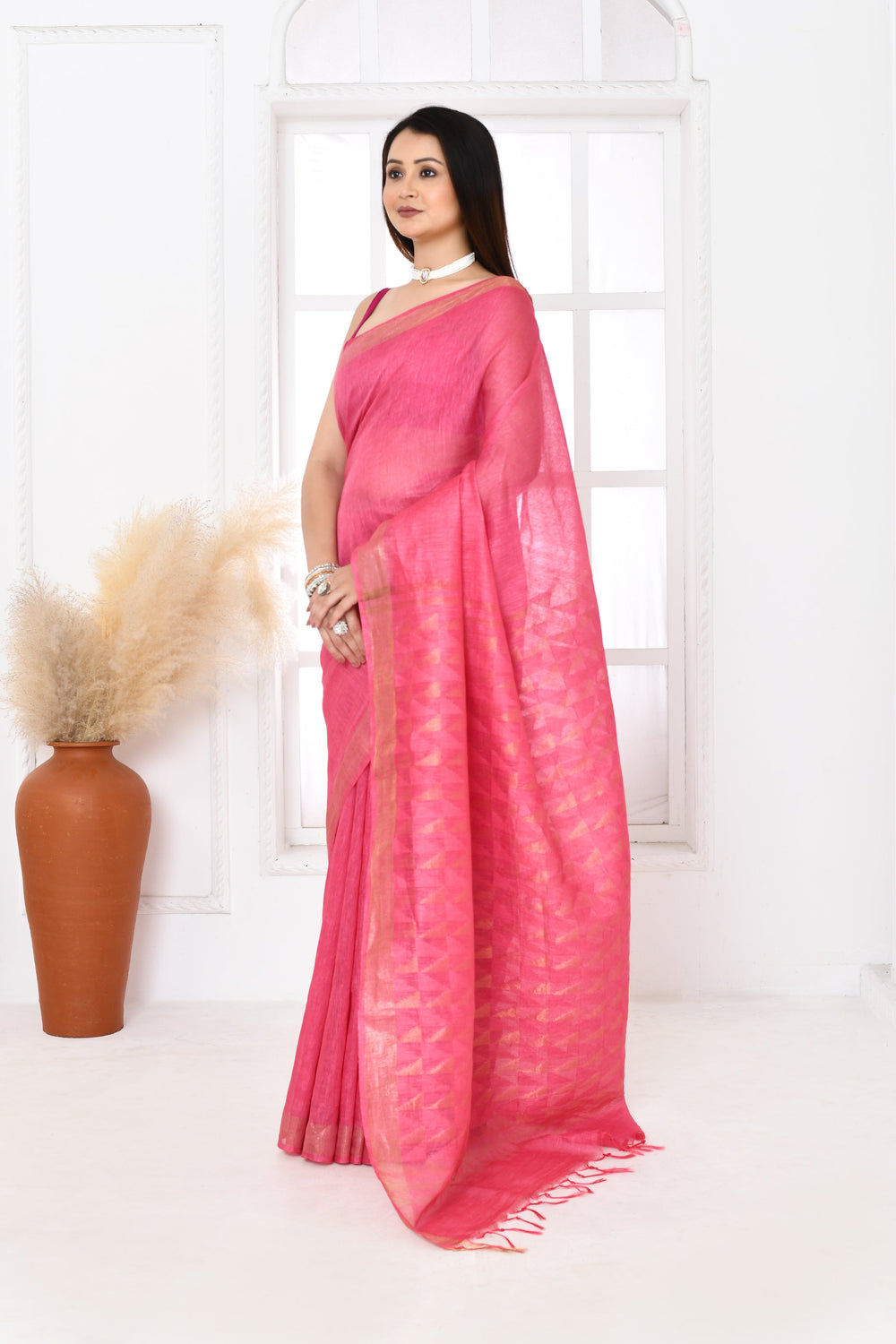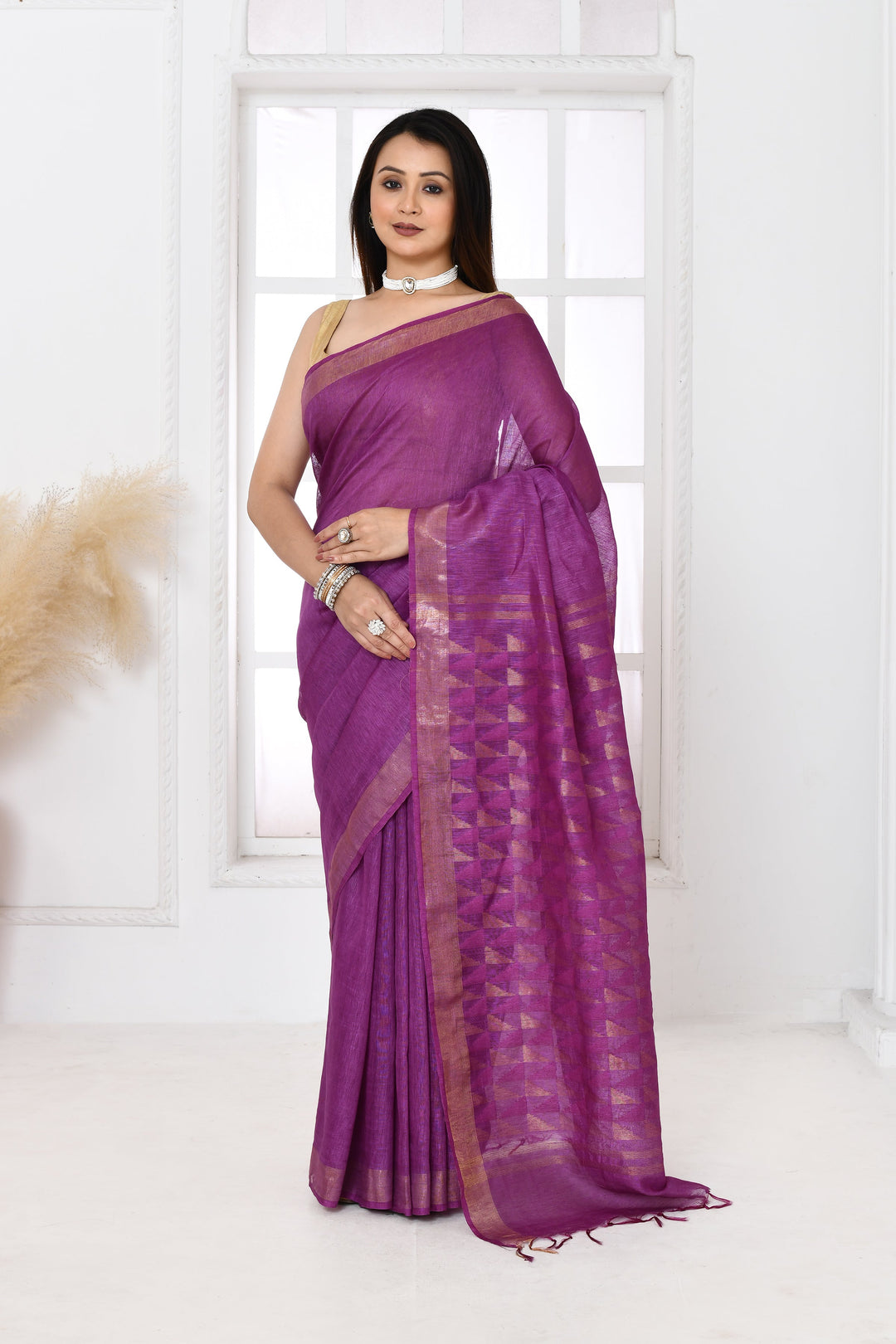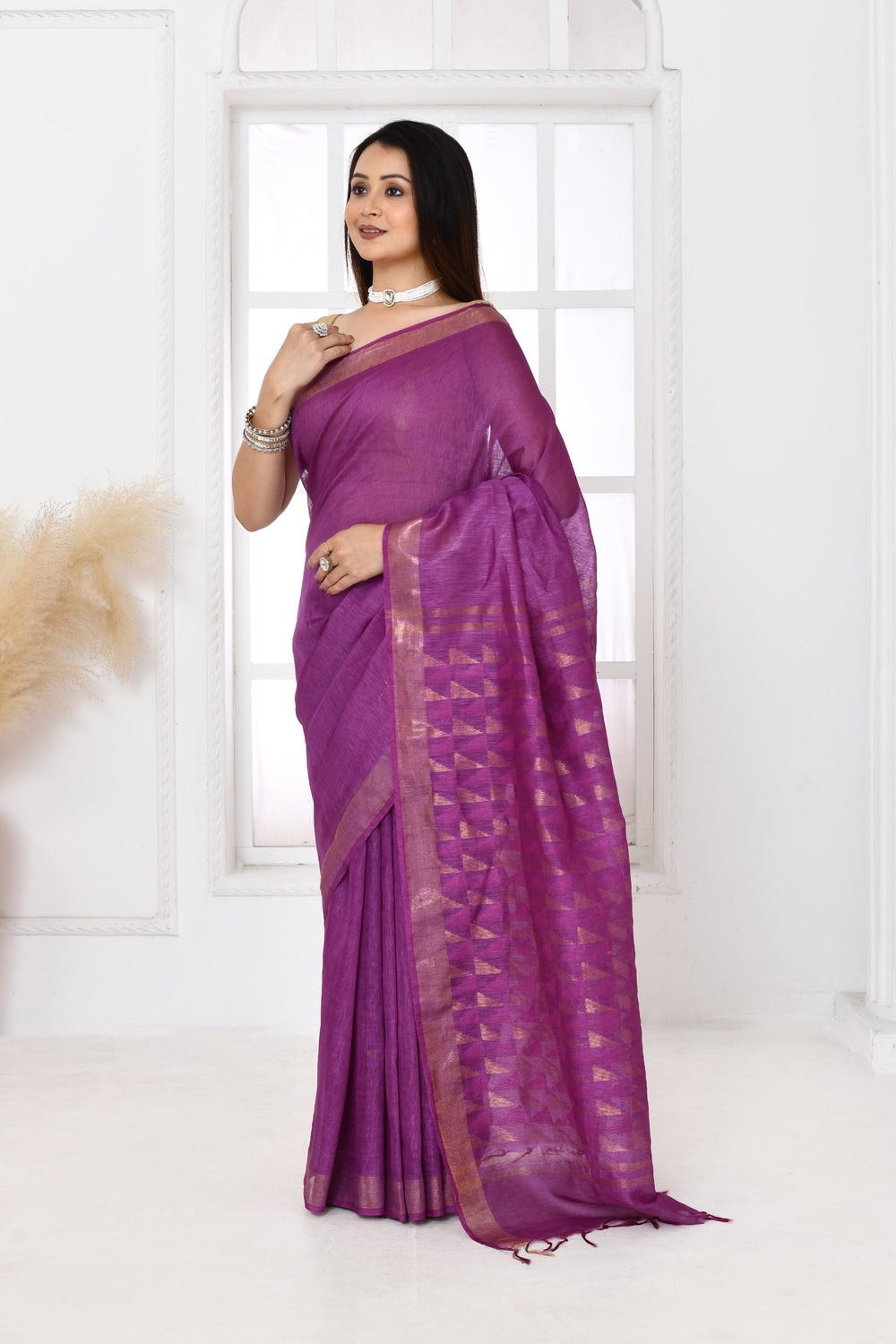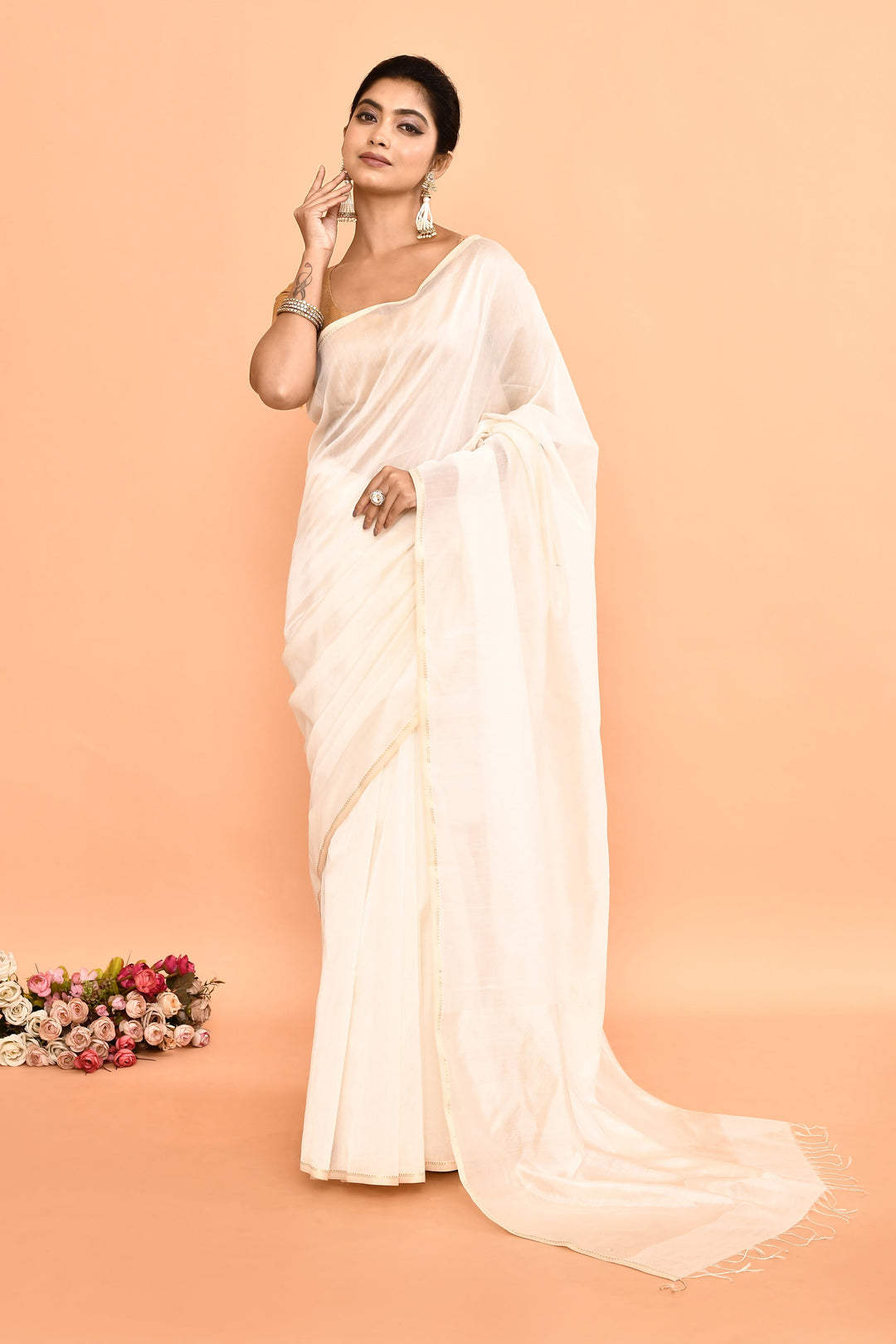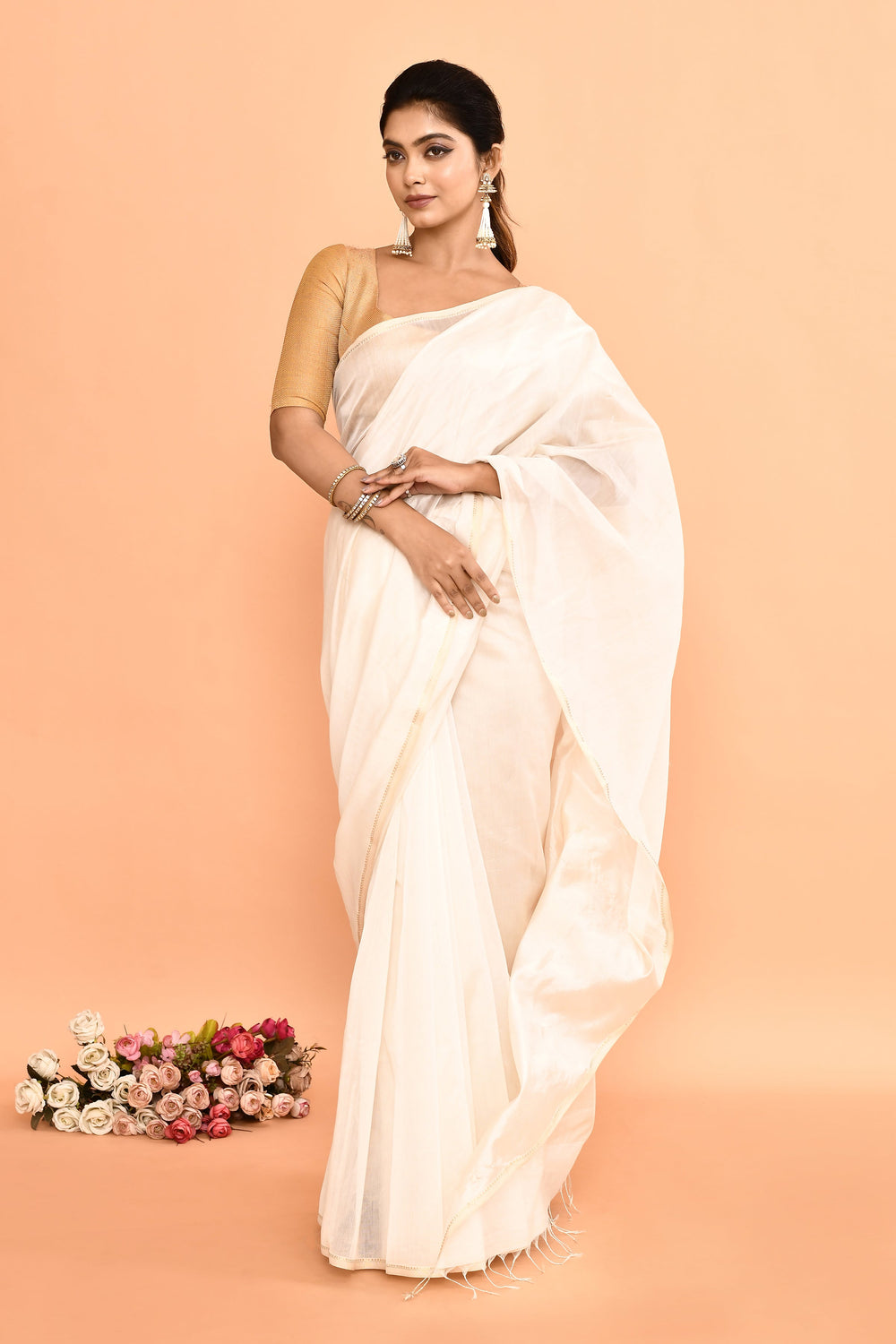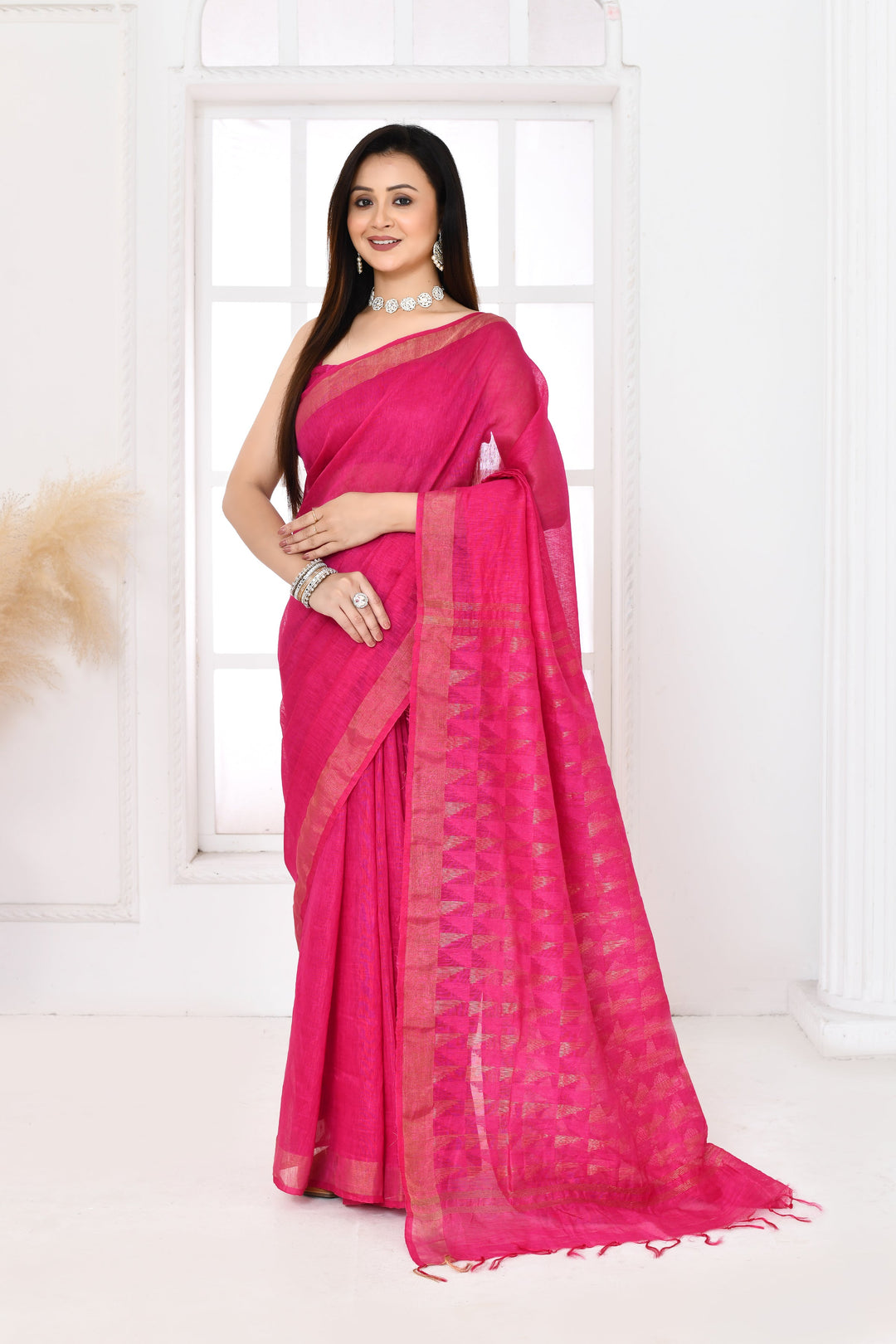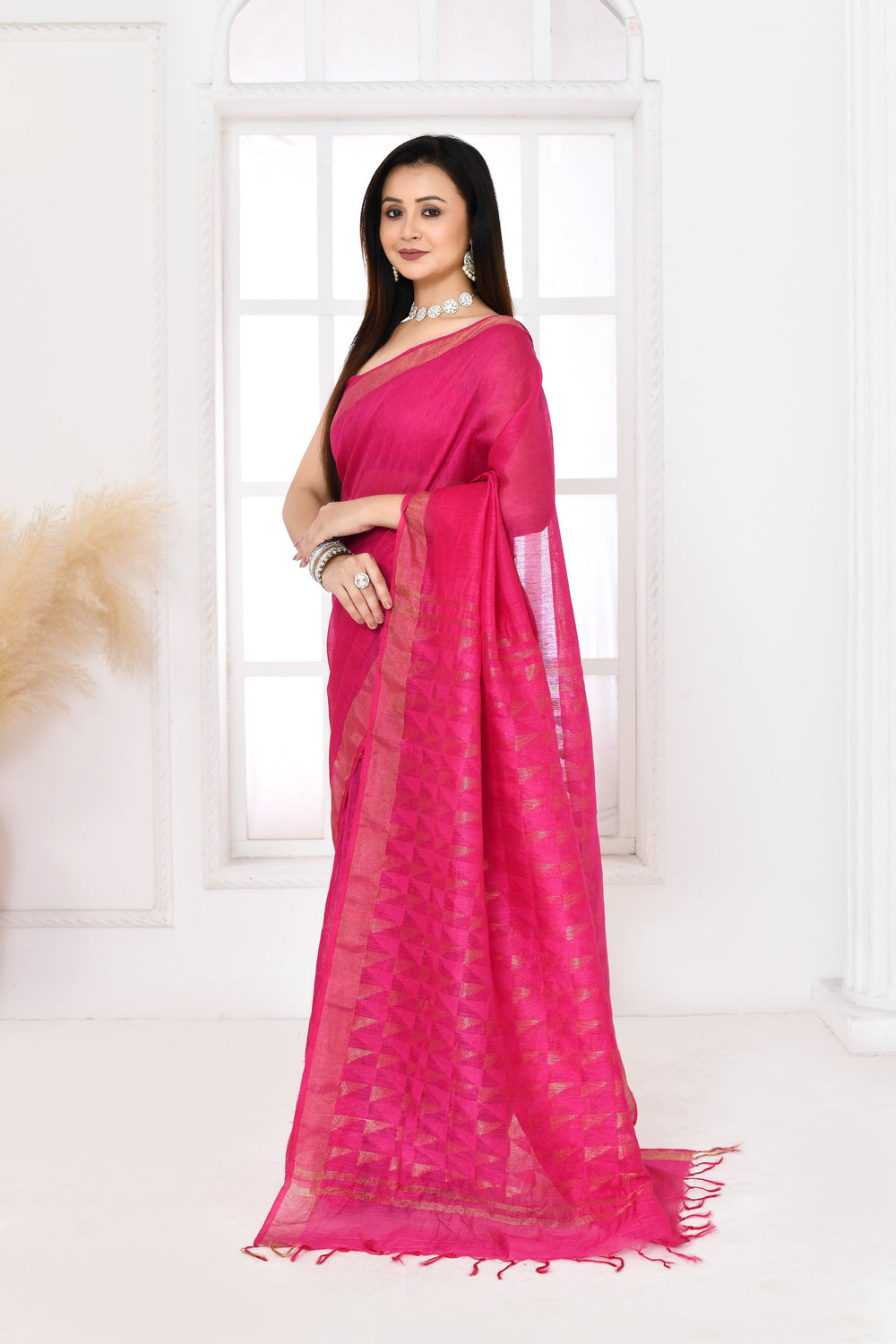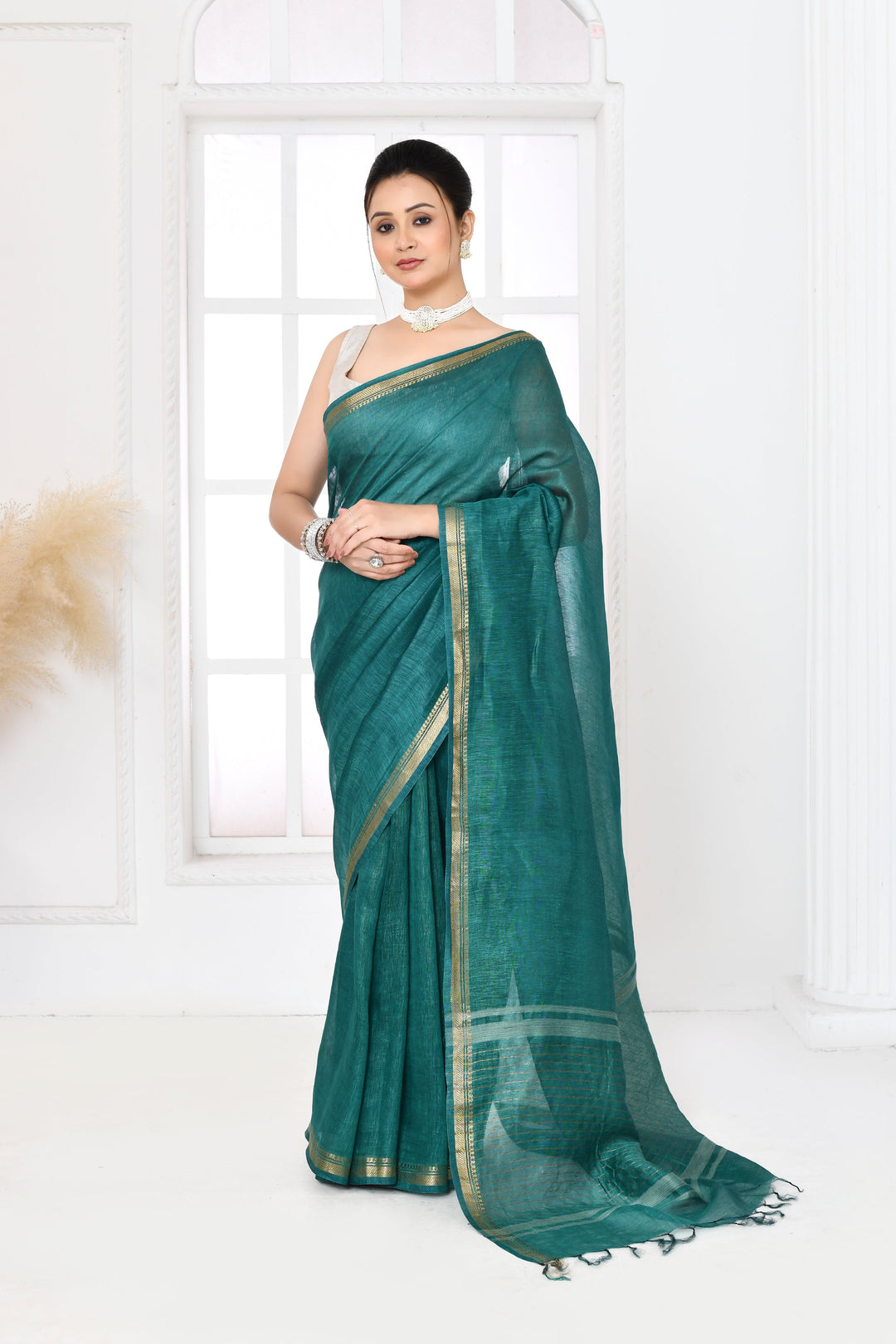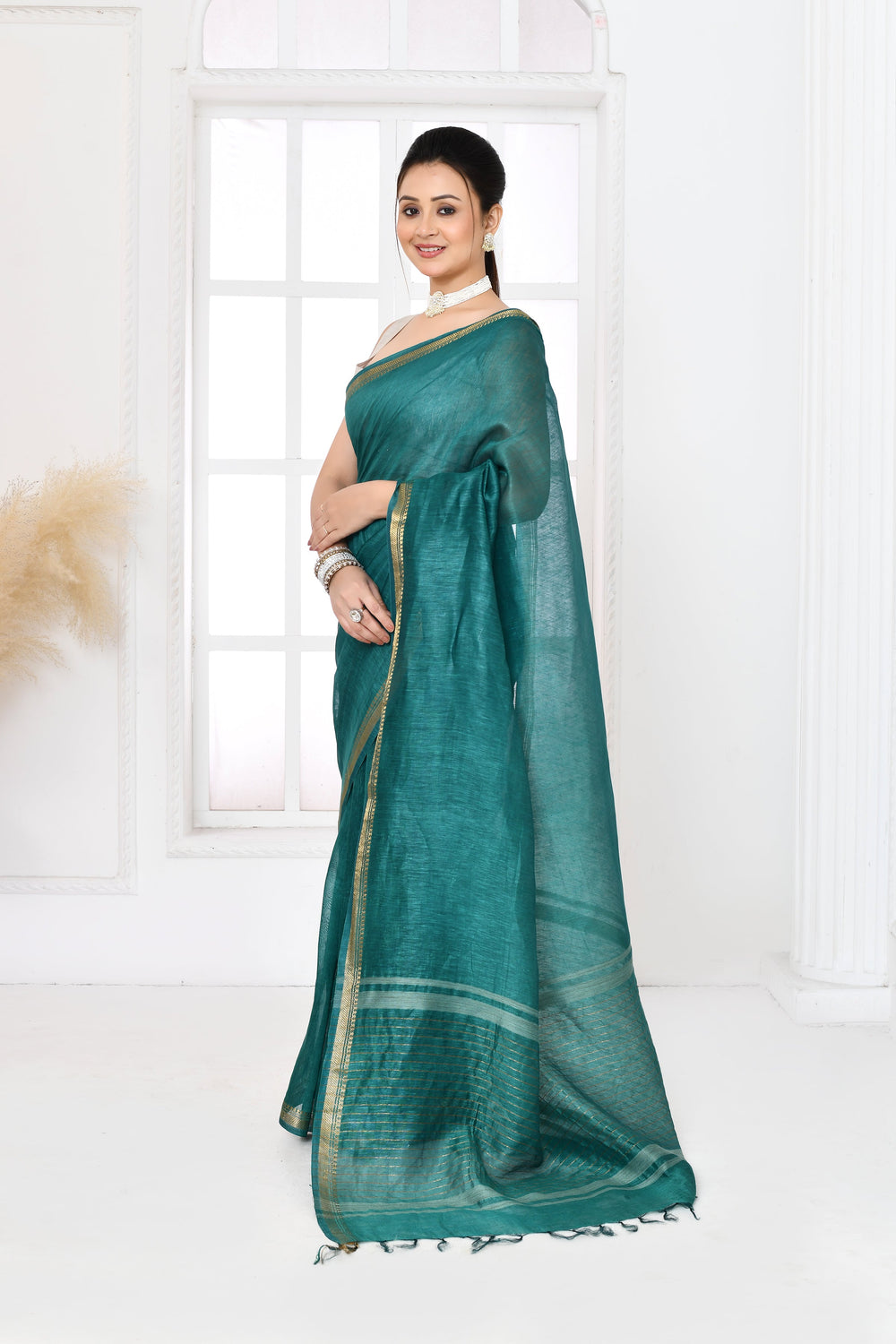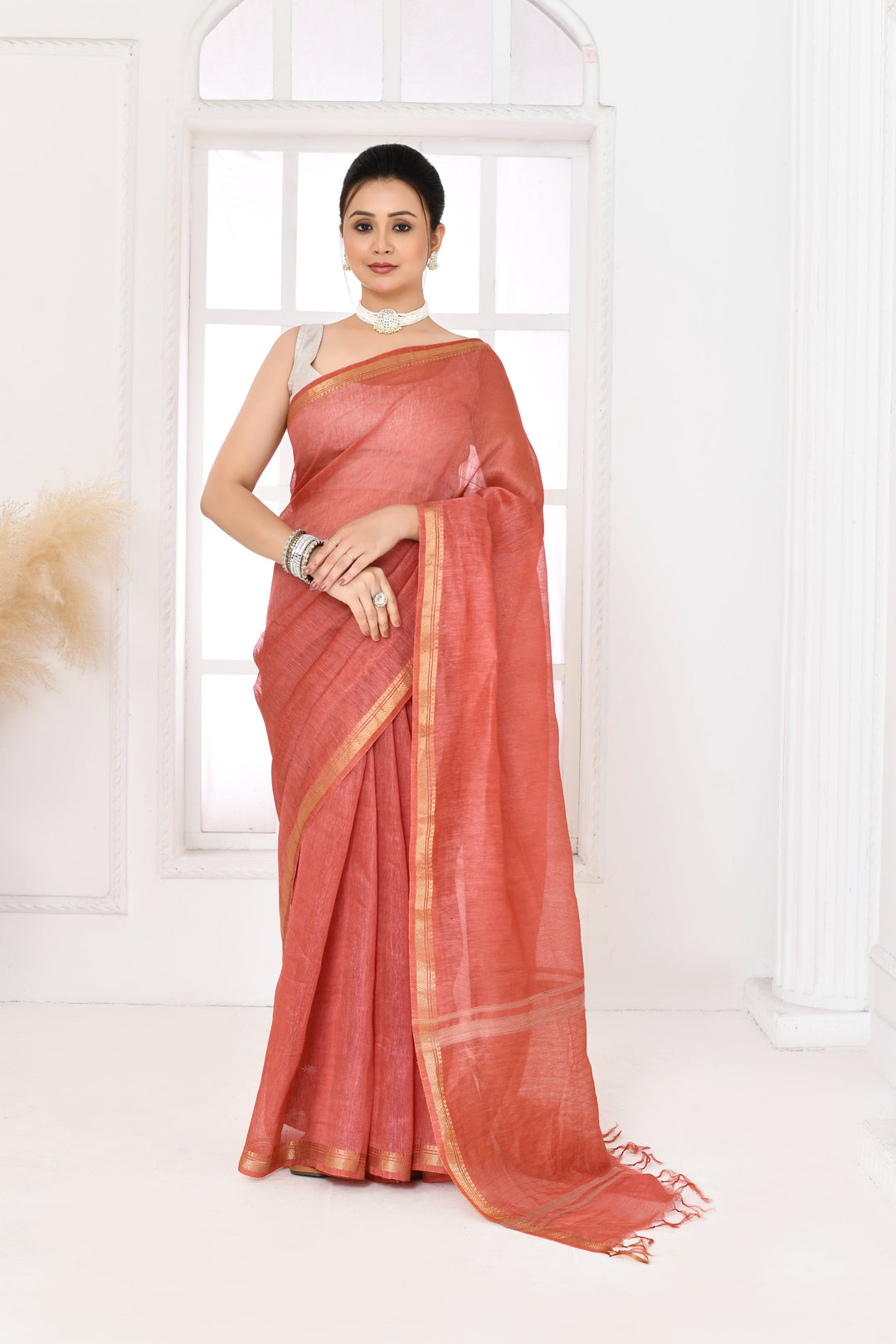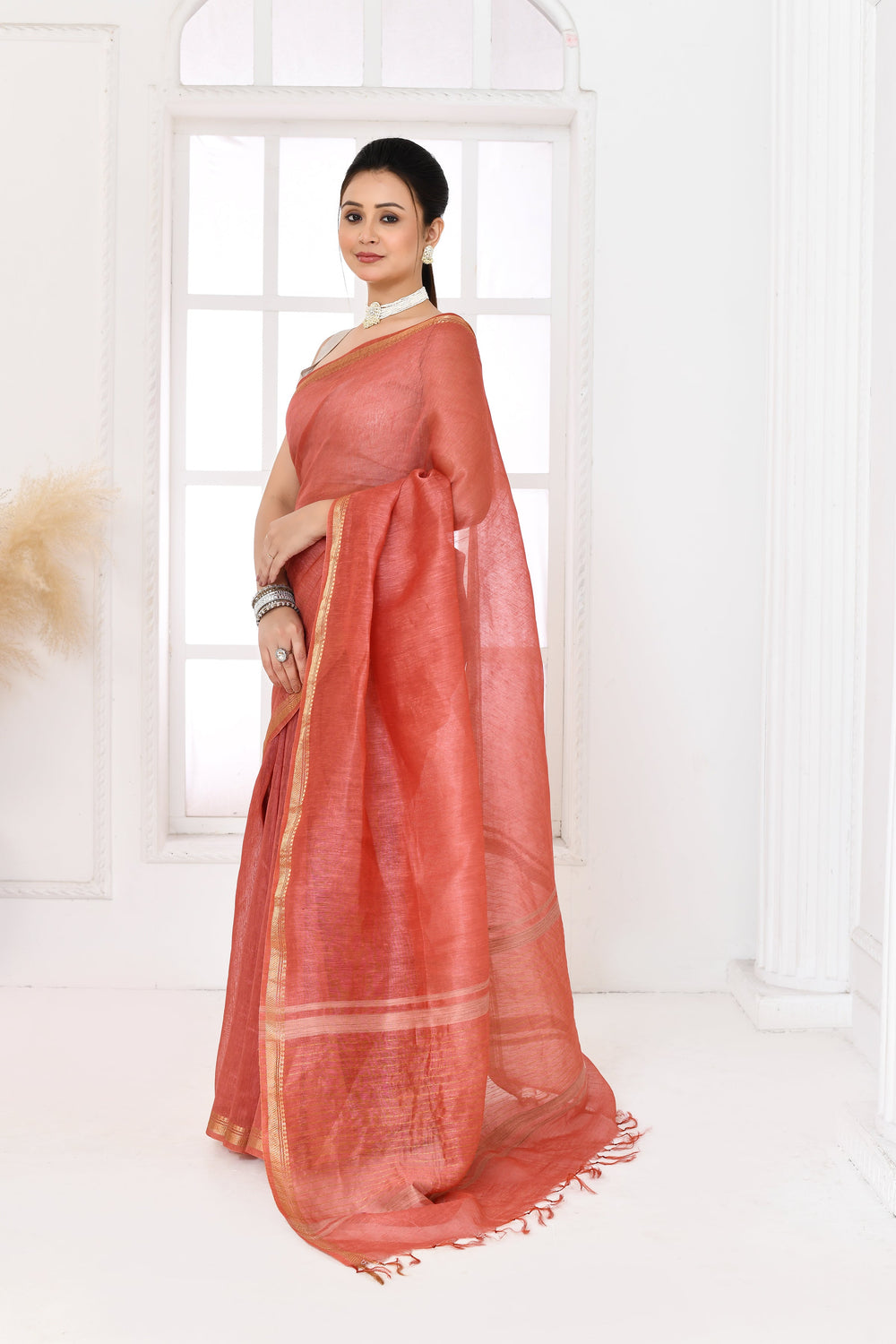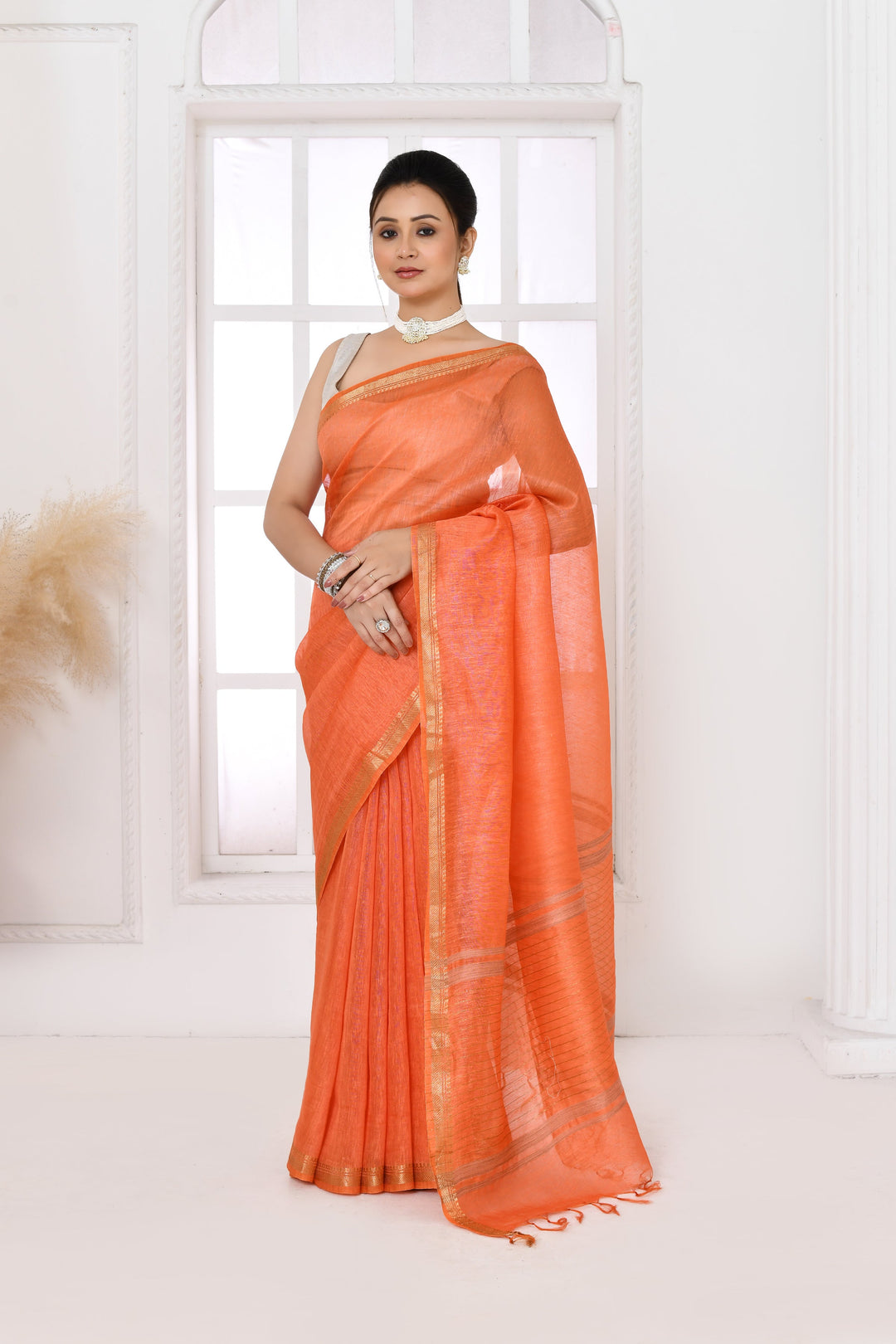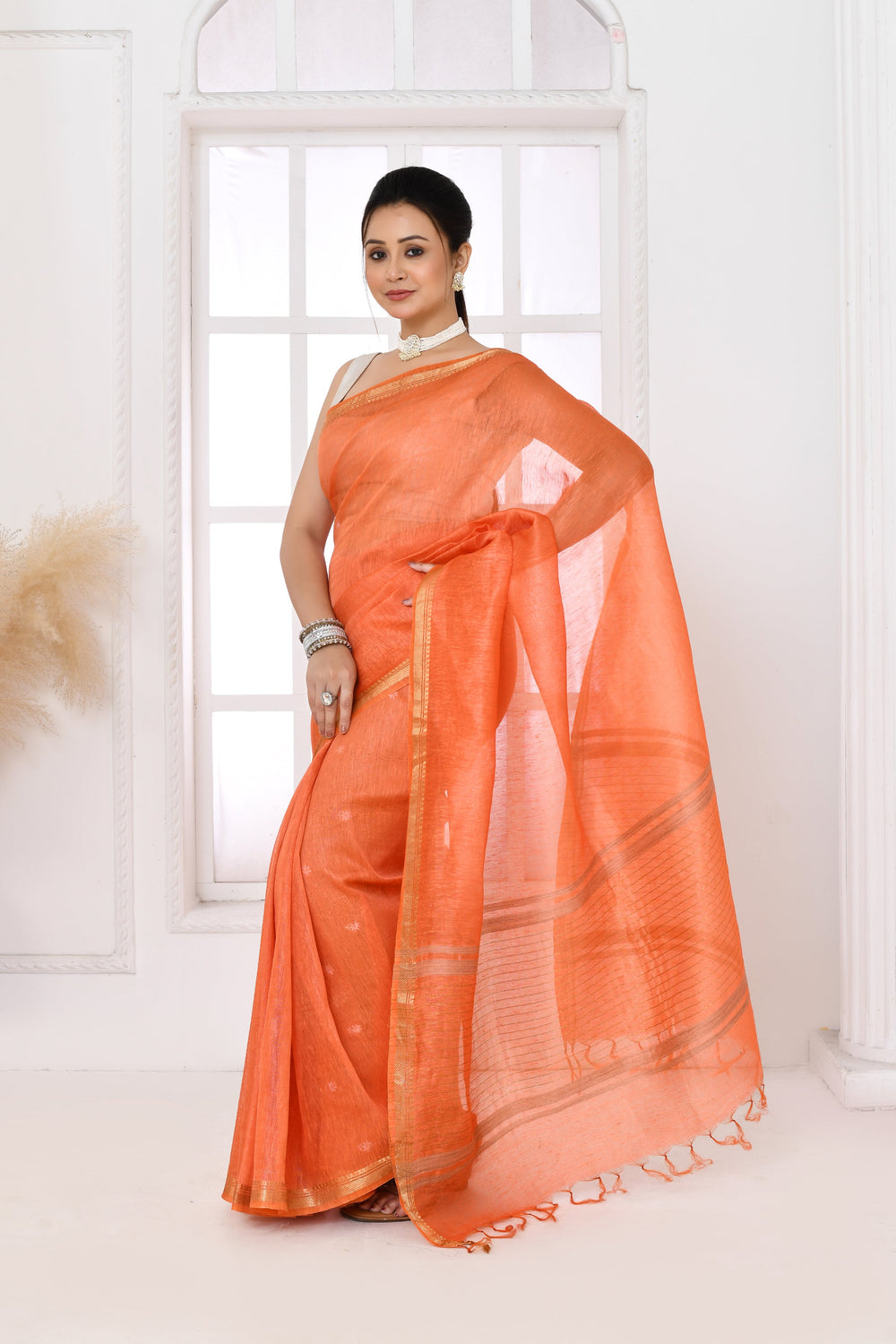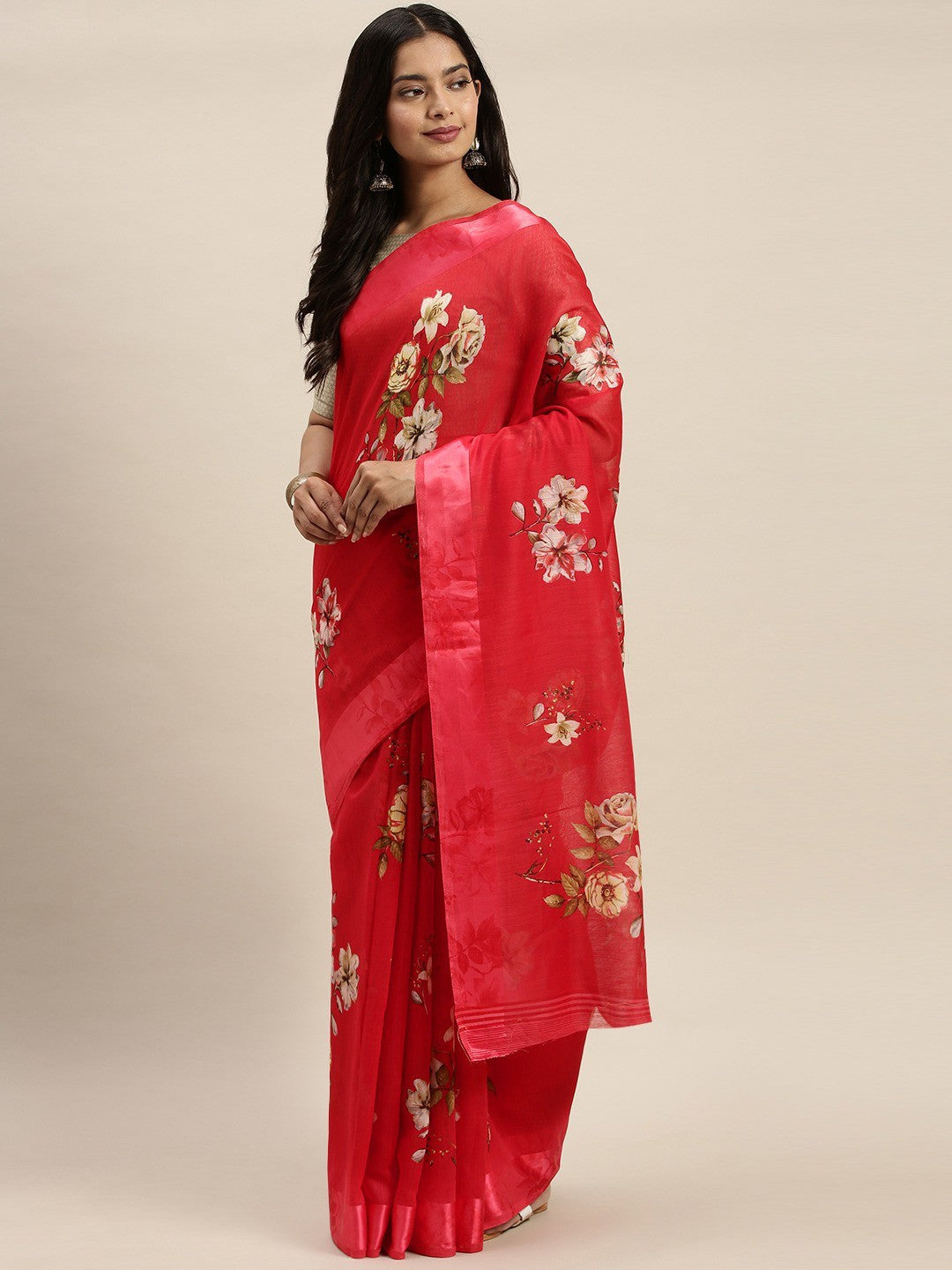FALLING IN LOVE WITH INDIAN DESIGNER SAREES
India's most well-known and often worn traditional women's clothing is the Saree, also known as Sari, that is an excellent choice for any event that may arise. It is also that very garment that is constantly evolving to reflect the latest style trends and people's way of life. That's why you'll find these garments in every Indian home, from the closets of grandmas to those of their granddaughters. Be it any, you have so many possibilities in this to choose one according to the necessity. Whether it's a customary day at work or a friend's wedding, a saree is always there to provide a helping hand.
Ladies are extremely picky about how well their clothes fit their bodies. The Saree is ideal for any kind of event. If you want to make a Saree seem good on your body, you may change the way you drape it. You can drape the saree in any style, and you will still look extremely gorgeous. If you happen to have a body that is of superior stature and thin build, you can simply go for a long, non-pleated pallu to wrap it up tight. It will make you taller without making you appear unnaturally skinny. To soften a bigger frame, wear it loosely with a well-pleated and pinned pallu along with different blouse styles, patterns, silhouettes, and accessories. Each individual can find a suitable permutation or combination.
A saree is also a stunning ensemble that emphasises a woman's femininity like no other clothing. When you put on one, you will look very stunning, and it will help you win major points with the more traditional elders around you. As a result, you may win over a wide audience with only one clever move. Many women find sarees difficult to wear, manage and confining. Such is the case only when the saree isn’t draped properly or one doesn’t have proper knowledge about handling it. When draped properly and secured with pins, a Saree is not only beautiful but also quite manageable along with enough leg room within the saree. A proper “leg room” is created only with numerous pleats giving you an aesthetic pleasure to allow for your legs to move freely while walking.
Before you plunge in to explore our selections of Top 10 Indian Sarees You Need In Your Closet, let us familiarise you with 6 compiled exciting new saree drapes to try if you're a fan of this classic garment.
5 LATEST SAREE DRAPING STYLES YOU CAN TRY IN 2023
Sensuality has held people's attention from the dawn of time, and people are still intrigued by it. Putting on a saree can do wonders for a woman's overall appearance. A saree is a treasured family heirloom that has been worn by women for thousands of years. This tradition dates back to ancient India. In order to conceal their bodies, Indian ladies would cover themselves with this lengthy piece of fabric even before the time when tailors were invented. The origins of the saree are unknown; nevertheless, it is quite likely that it was created in India a very long time before the country was inhabited. It's interesting to see how differently a young woman and an elderly woman drape the same six yards of fabric. A flawless draping design embraces your body and wraps around to accentuate your beauty. It's a work of art! Every Indian state has its own culture, which influences the draping styles. The draping manner changes as the designs on the saree change. Wouldn't it be fun to experiment with different drapes? Here are top 5 latest saree draping styles that you need to try in 2023:
SAREE TIPS FOR DIFFERENT BODY TYPES
The elegance of the saree is that it may be worn by women of any age or body type. Although we recognize that people of all sizes, shapes, and personalities have their own unique aesthetic preferences, the real problem arises when a woman feels that her body type is not suited for a piece of clothing. While it's true that any woman may look beautiful in a saree—the length of which typically ranges from 5 to 9 yards—the key to looking your best and stealing the show is picking the proper saree style for your physique. Thus, you won't have to look hard to discover a saree that not only flatters your figure but also makes you feel like a princess.
- Tall and Slim Body Type or Women with Rectangular figures have similar sizes of hip, bust, and waist. To accentuate these figure curves, heavy sarees such as Kanjeevaram Silk Sarees, Banarasi Silk Sarees with heavy embellishments and traditional motifs help create curvy definitive illusions on you.
- Petite Body Type are those women with short height and slim figure and need to choose sarees with thin or no borders. Even large print on sarees would not put enough highlight to the height and thus, would make a short height more shorter. To create a taller illusion on a petite figure, choose light weight sarees in georgette, satin, chiffon and chinon synthetic fabrics that have very minimal print, along with bare-back blouses. You should avoid wearing simple sarees since they will make you seem even more petite than you already are. You would look stunning with a saree in neutral or warm tones like grey, crimson, or brown.
- For Plus Size Body Type women, lighter fabrics like chiffon or georgette in darker colours are best for sarees. A V-neck or U-neck blouse that fits well and has a deeper neckline can make your torso look longer. Trying out different ways to drape, like the Bengali style, can help you get a more sleek look. Instead of chunky jewellery, you should choose smaller accessories that go with your outfit.
- If you have a Pear-Shaped Body, choose sarees with lighter fabrics like chiffon or georgette, as they will drape well and not add bulk. Opt for sarees with broader borders, as they help balance out wider hips. You should avoid wearing clingy fabric sarees such as silk or cotton.
- Women with Apple-Shaped Body type can choose sarees with softer fabrics such as silk or cotton, as they will drape well and not add bulk. Look for sarees with vertical stripes or prints, as they help create a more elongated look. Try avoiding heavy embroidery or chunky borders.
- If you have an Hourglass-shaped body, you are in luck as almost any type of saree can flatter your figure. This body type can wear sarees in georgette, chiffon, silk, cotton, or organza with bold, floral, stripe, or abstract prints and heavy embellishments to flatter such figures. Opt for blouses with a deeper neckline such as a V-neck or U-neck for creating the illusion of a longer torso.
BLOUSE DESIGNS FOR SAREES
Blouses are an important part of the saree ensemble and come in a wide variety of designs to suit different occasions, body types and personal styles. Here are some popular blouse designs that can be paired with different sarees:
- Regular Neck Blouse: A regular neck blouse is also known as a round neck blouse due to its circular neckline that sits around the base of the neck. This is the most common blouse design and is suitable for all body types and also suitable to any type of saree.
- Boat Neck Blouse: This blouse design has a wide neckline that runs in a straight line from shoulder to shoulder, resembling the shape of a boat. It works well with heavy work sarees like Kanjeevaram, Banarasi, and Chikankari sarees.
- V-Neck Blouse: A V-neck blouse has a V-shaped neckline that accentuates the collar bones and creates a slimming effect. It pairs well with silk, georgette, and chiffon sarees.
- Collared Blouse: This blouse design has a collar around the neckline and can either have full sleeves or be sleeveless. It is perfect for formal occasions and pairs well with cotton sarees, linen sarees, and even denim sarees.
- Off-shoulder Blouse: Off-Shoulder blouses have a neckline that sits below the shoulders, creating a feminine and stylish look. They look great with chiffon, georgette, and net sarees.
- Halter Neck Blouse: Halter neck blouses have straps that wrap around the neck, leaving the shoulders bare. They look great with sarees that have a bold pattern or print, and pair well with chiffon, georgette, and silk sarees.
- Backless Blouse: Backless blouses have a low-cut back that can add a hint of glamour to any saree. They pair well with sarees that have intricate embroidery or work on the pallu, and are perfect for parties and weddings.
TOP 5 MUST-HAVE INDIAN SAREES FOR YOUR CLOSET
When you believe sky's the limit, the limit neither ends with our weaving clusters and infinite possibilities with Indian Ethnic attires especially the Sarees. Our sarees speak of the ambitious weaving culture handcrafted by diversified Indian local artisans with generations of expertise co-functionally under the science of pure and natural fibres. We believe once you experience the raw fabric sarees you will definitely admit recalling your home, your culture and your memories. Let’s no more shop sarees on the basis of primary fabrics like cotton sarees, silk sarees, etc., and improvise our shopping experience in terms of what they are actually known for. They have their own names, they have got native corners of India, they are known for different collocations and are livelihood skills of many unknown tribes who spend generations skillfully mastering sarees in a particular design or a pattern.
Bandhani and Leheriya sarees are traditional tie-dye sarees from the western states of India, Rajasthan and Gujarat, respectively. Both sarees are known for their vibrant colours and unique patterns. The Bandhani saree is made by tying small knots on the fabric before dyeing it, resulting in small, circular patterns. On the other hand, Leheriya saree is also made by tying the fabric in a particular way before dyeing it, but this time it results in a zigzag or diagonal stripe pattern. Although both Bandhani and Leheriya sarees are usually made in bright coloured lightweight fabrics, they also often come with intricate embroidery and mirror work, making them an ideal choice for grand occasions.
Chikankari Sarees these days are a trendy popular choice among women who appreciate the traditional Indian hand-embroidery techniques. These sarees are hand-embroidered using a needle and thread, creating intricate and delicate patterns that make each saree unique. They have a timeless elegance that makes them suitable for any occasion, and they come in a variety of colours and fabrics that are comfortable to wear. Chikankari sarees are also versatile, as they can be styled in different ways, making them suitable for both formal and casual events. Additionally, chikankari sarees are sustainable and eco-friendly, as they are handmade using natural materials and traditional techniques. Overall, chikankari sarees are a beautiful and sustainable addition to any wardrobe.
Patola Sarees have always been popular among women in India, but in recent years, they have gained global recognition due to their vibrant colours, intricate designs and durability. These handwoven silk sarees stand out from other sarees because of their bold colours, and are also considered an investment as their value increases over time due to their unique style of weaving. Such valuation addition straight from the local regions of Gujarat can definitely help you flaunt the rich cultural heritage of your Indian roots while you are overseas. They are perfect for special occasions, weddings, festivals, and other formal events and gatherings. Go for a neatly tied bun with flowers or a braid with Gajra with minimal gold jewelries so define the ultimate patola look.
Sambalpuri Sarees are one such kind of handwoven sarees that was inspired by nature, mythology, and traditional art. The exclusive symbolism in Sambalpuri sarees that make it “must-have saree for your wardrobe” is its motifs in the shape of seashells, wheels and flowers. They are often available in contrasting colours but the most significant and widely popular colour combinations are believed to be ‘Red and Black’, ‘Yellow and Navy Blue’, ‘Pink and Blue’, and ‘Red and Green’. Just as Bandhani and Leheriya tie-dye sarees from the state of Rajasthan, Odisha brings you these astonishing tie-dye handloom sarees but with traditional Odia styled Ikkat prints.Sambalpuri sarees are sustainable and eco-friendly in nature are made using natural fibres such as cotton and silk, and also versatile in nature suitable to wear on casual days as well as on special occasions.
Silk sarees are known to be luxury fabric sarees and when it comes to Baluchari Sarees, you get extra plus points to your right wardrobe collection. Baluchari Sarees are timeless never-go-out-of-style classic handwoven sarees originated from West Bengal. These are those sarees that you can inherit from your grandmothers or pass onto your future generations without losing its importance, prints, colours and richness of its heredity. They are usually made from high-quality silk fabrics imprinted with inspirations from nature, murals, and stories from local folklores, legends of Mahabharata, and Ramayana. Usually many at times, Baluchari sarees are confused with Banarasi Brocade sarees, however what keeps both of them opposite at the bay is the only use of silk threads without any Zari work in Baluchari sarees whereas a Banarasi saree has got both of these elements heavily on it.
SHOP FROM ZERESOUQ LATEST SAREE COLLECTIONS ALL ACROSS GCC
When we proudly proclaim ourselves as the largest indian ethnic store for women in GCC, we at Zeresouq bring you the finest range of options available for your every changing taste and occasion. You either want to go formal with your sarees or want to sleek smoothly at any event, you got exclusive variants to choose from prints such as Ajrakhs, Chikankaris, Bandhanis, Leheriyas, Sagneris, Tie Dyes, Shiboris, Pattachitras, Blockprints, and many more. Silk sarees here ranges in multiple variants such as Kanjeevaram, Pattu, Paithani, Banarasi, Sambalpuri, Bomkai, Baluchari, Pochampally, Patola, Tussar Silk, Bamboo Silk, Lotus Silk, Mulberry Silk, Eri Silk, and Muga Silks. Similarly, we also bring you cotton sarees collections in multiple variations namely Tant, Gadwal, Chanderi, Kanchipuram, Kalamkari, Khadi, Dhakai, Ilkal, Kota Doria, Jamdani, Pasapali, and Venkatagiri. Sleek the best out of yourself with extravagantly designed unique sarees and this time let your saree speak for you and your love for Indian Regional Sarees! With a name of its own, straight from the Indian roots to your doorsteps, Zeresouq gives you the helping hand to choose the best of what you wear keeping you standing out of the crowd always!
FREQUENTLY ASKED QUESTIONS ABOUT ZERESOUQ SAREES
Q1. Which fabric saree is trending now?
Ans) Organza sarees are definitely in trend right now. They have a sheer texture which makes them perfect for summer weddings and events.
Q2. Which coloured Saree is trending in 2023?
Ans) Yes. The trending colour of the fashion season this year is a shade of purple that comes in an almost lilac hue making it look very attractive. A saree in this colour would be a perfect choice.
Q3. Suggest me a saree that is soft, light in weight and easy to maintain.
Ans) Sarees made up of fabrics such as Crepes, Chiffons, Chinons, Satin, and Pure Georgettes, are very soft to touch, light in weight and very easy to maintain, especially if they are lightly embellished or embroidered.
Q4. Which sarees are best for office wear?
Ans) In terms of fabric, best suitable workwear sarees are usually made up of pure khadi cotton, raw silk, linen, tussar silk, as well as georgette. But if you are the one who is looking for funky contemporary style sarees, then patterned cotton sarees, sarees made up of dupion silk, floral print, italian silk can go a long way to present your ethnicity and modernity at the same time.
Read more






